Abhina Aher
Abhina Aher is a prominent Indian transgender activist, born on September 19, 1977, in Mumbai, Maharashtra. With over 25 years of experience advocating for transgender empowerment, HIV/AIDS awareness, and human rights, she has become a leading voice for the transgender and broader LGBTQ+ community in India and globally. Her work spans activism, social entrepreneurship, and artistic expression, addressing systemic issues like stigma, discrimination, and marginalization faced by transgender individuals. Below is a comprehensive overview of her life, work, and contributions, based on available information.
Early Life and Personal Journey
Abhina Aher was born as Abhijit Aher in a middle-class Marathi family in Mumbai’s Worli area. Her father passed away when she was three, leaving her mother, Mangala Aher, a trained Kathak dancer who worked for a government organization, to raise her single-handedly. Mangala later remarried. Abhina’s early exposure to her mother’s dance performances inspired her to emulate her, practicing in private and developing a passion for dance.
From a young age, Abhina experienced gender dysphoria, identifying with feminine traits and cross-dressing by age seven. Puberty brought challenges, as physical changes like facial hair and a deeper voice caused distress, leading her to avoid mirrors. She faced severe discrimination, including hate crimes at school, such as a traumatic incident of sexual violence involving a wooden ruler. Societal stigma and limited access to information about gender and sexuality in her youth compounded her struggles.
To cope and honor her mother’s wishes, Abhina initially tried to conform to societal expectations of masculinity during her college years, cutting her hair, wearing formal men’s clothing, and playing sports. She pursued a degree at Mumbai University and a diploma in software engineering. However, her encounter with Ashok Row Kavi, a journalist and LGBTQ+ rights activist, marked a turning point. Inspired, she abandoned her software career to join The Humsafar Trust, embarking on her lifelong activism journey.
Activism and Professional Contributions
Abhina Aher’s activism focuses on transgender rights, HIV/AIDS advocacy, and gender and sexuality inclusion. With over two decades of experience, she has worked with national and international organizations, addressing the needs of marginalized communities, including transgender people, men who have sex with men, sex workers, intravenous drug users, and people living with HIV. Her roles and contributions include:
Key Organizations and Roles:
- The Humsafar Trust (Mumbai): Abhina began her activism here, working on social projects to support the LGBTQ+ community and HIV/AIDS awareness.
- India HIV/AIDS Alliance: Since 2010, she has served as Associate Director for Gender, Sexuality, and Rights, managing programs like Pehchan, a Global Fund-supported initiative for transgender and MSM communities. She has also been a consultant on trans issues.
- I-TECH India: As a Technical Expert for Key Populations, Abhina works on health and human rights issues, leveraging her expertise in NGO management and social entrepreneurship.
- Family Health International (FHI) and Johns Hopkins University Centre for Communication Programmes (CCP): She contributed to health communication and program delivery for marginalized groups.
- Global Action for Trans Equality (GATE) and International Trans Fund (United States): Abhina serves as a consultant and steering committee member, advocating for trans rights globally.
- Asia Pacific Transgender Network (APTN): She was a board member from 2015 to 2018, working to increase transgender visibility and rights in the region.
- Women4GlobalFund and India Working Group (IWG): As a trans woman from the Hijra community, she advocates for increased domestic financing and global health grants.
Advocacy Work:
- HIV/AIDS and Health: Abhina has focused on reducing stigma and improving access to healthcare for HIV-positive transgender individuals and other marginalized groups. Her work includes community-based interventions, HIV testing campaigns, and addressing the unique needs of older adults living with HIV.
- Transgender Rights: She advocates for legal, social, and economic inclusion, challenging transphobia and promoting gender-neutral policies in workplaces and healthcare. Her efforts contributed to India’s 2014 Supreme Court ruling recognizing transgender rights.
- Public Speaking: A TEDx speaker in Delhi and Varanasi, Abhina shares her personal story and insights on gender inclusion, inspiring audiences to rethink societal biases.
- Pride Parades and Advocacy: She actively participates in pride parades and collaborates with organizations to promote transgender visibility and rights.
Founding Organizations
Abhina Aher has founded two significant initiatives to empower transgender individuals through art and advocacy:
- Dancing Queens (2009): A transgender-led dance group co-founded with Urmi Jadhav and Madhuri Sarode, Dancing Queens uses dance to break stereotypes, advocate for trans rights, and increase visibility. The group has performed across cities, including at Godrej India Culture Lab in Mumbai, blending traditional forms like Kathak with advocacy.
- TWEET Foundation (2016): The Transgender Welfare Equity and Empowerment Trust Foundation is India’s first organization led by trans men and women, focusing on empowerment, livelihoods, and rights. As Chief Executive, Abhina leads efforts to create opportunities and combat discrimination.
Challenges and Advocacy Through Personal Experiences
Abhina’s journey has been marked by significant personal and societal challenges, which she channels into her advocacy:
- Gender Dysphoria and Transition: Her decision to transition was emotionally complex, involving a two-hour conversation with her mother, who initially feared societal rejection but later joined the Sweekar Foundation, a group for parents of LGBTQ+ individuals, and Dancing Queens.
- Hate Crimes and Discrimination: Abhina endured violence and stigma, including being raped as an adolescent and facing societal rejection for her gender identity. She also engaged in sex work for survival, an experience she openly discusses to highlight systemic issues.
- Travel Incidents: Abhina has faced transphobia at airports, notably at Abu Dhabi in 2016, where security officials questioned her gender and refused to frisk her appropriately, leading to humiliation. She uses such experiences to advocate for sensitivity training and better policies.
Achievements and Recognition
- Global Activism: Abhina has been a global advocate for over 24 years, working with organizations like the International Trans Fund, APTN, and Women4GlobalFund. Her work on the Global Fund’s Replenishment and domestic financing advocacy highlights her influence.
- TEDx Speaker: Her talks in Delhi and Varanasi have amplified transgender voices and challenged societal norms.
- Media Presence: Abhina has been featured in outlets like BBC World Service, NDTV, and MagnaMags, sharing her story and advocating for change.
- Bond Conference 2019: She spoke at the opening keynote, discussing civil society’s role in inclusivity.
- Expertise: Recognized for her skills in NGO management, safeguarding, program delivery, and peer-to-peer service, Abhina is a sought-after consultant and leader.
Personal Philosophy and Impact
Abhina emphasizes the power of community engagement and education to change mindsets, stating, “Policies don’t change the mindset of the people. What changes the mindset is when people come together, try to understand the community and create a difference.” Her work with Dancing Queens and TWEET Foundation reflects her belief in using art and empowerment to challenge stereotypes and foster inclusion.
Her mother’s eventual acceptance and involvement in advocacy work highlight the personal impact of Abhina’s journey, inspiring others to embrace their identities and advocate for systemic change. By addressing issues like airport security protocols and workplace inclusion, she pushes for practical solutions to everyday discrimination.
Current Role and Contact
As of July 2025, Abhina serves as Chief Executive of the TWEET Foundation, leading transgender welfare initiatives. She is based in South Delhi and can be contacted at Abhina@tweetindia.org. Her LinkedIn profile reflects her extensive network and leadership in social development.
Critical Perspective
Amarjit Singh
Mr Amarjit Singh is an ambedkarite activist thinker based in UK who has been involved in anti-caste anti-racist activities for most of his life. He come from a family of activists. He was the editor of the Birmingham University India society’s magazine Bharat in 1976 which ran an article on Dr B R Ambedkar. This was the first time such an article had appeared in a university magazine, in the Diaspora. He organised a conference in Birmingham on the origins of the caste system in 1978. During the 2000s, he ran a website for around 4 years whose purpose was to bring Dalit history to Dalits as well as to fight for an anti-caste legislation in UK as part of the Single Equalities Bill drive. He has also played host to many Dalits activists and scholars from India when they have visited the UK. He has spoken at various venues about the history of the caste system and untouchability in India, including at Bergen University Norway and the World Conference on Untouchability held at Conway Hall. He is also a member of British Association for the Study of South Asia (BASAS), a professionally academic body of scholars interested in the study of South Asia. He is currently attending evening talks and discussions at Radical Anthropology Group (RAG) at the University College London in order to help him find an integrated and holistic theory of origins of caste system based on totemism/tribal endogamy/exogamy practices and the role of indigenous matrilineal to Aryan patrilineal process in the formation of the caste system. Notwithstanding the upper caste arrogance and actual practices of the Marxists in India, he believe that these issues are the missing links between Ambekarism and Marxism on a theoretical plane; something that neither Marx nor Babasaheb had 100% access to in their times. This links also indicate the theoretical organic unity of blood and suffering between Dalits and Adivasis. His research also involves historical Dalit resistance, its successes, failures and lessons.(https://www.youtube.com/watch?v=5fg2eZ4jUyw)
Amarjit Singh tells issues which are the missing links between Ambekarism and Marxism on a theoretical plane
During the 2000s, he ran a website for around 4 years whose purpose was to bring Dalit history to Dalits as well as to fight for an anti-caste legislation in UK as part of the Single Equalities Bill drive. He has also played host to many Dalits activists and scholars from India when they have visited the UK
He has spoken at various venues about the history of the caste system and untouchability in India, including at Bergen University Norway and the World Conference on Untouchability held at Conway Hall.
He is also a member of British Association for the Study of South Asia (BASAS), a professionally academic body of scholars interested in the study of South Asia. He is currently attending evening talks and discussions at Radical Anthropology Group (RAG) at the University College London in order to help him find an integrated and holistic theory of origins of caste system based on totemism/tribal endogamy/exogamy practices and the role of indigenous matrilineal to Aryan patrilineal process in the formation of the caste system. Notwithstanding the upper caste arrogance and actual practices of the Marxists in India, he believe that these issues are the missing links between Ambekarism and Marxism on a theoretical plane; something that neither Marx nor Babasaheb had 100% access to in their times. This links also indicate the theoretical organic unity of blood and suffering between Dalits and Adivasis. His research also involves historical Dalit resistance, its successes, failures and lessons.



Absalom Jones

1. Early Life in Slavery
- Born enslaved on November 7, 1746, on a plantation in Sussex County, Delaware, owned by Abraham Wynkoop, a wealthy Anglican planter.
- Mother: unknown name; father: possibly named “Tom.”
- At age 16 (1762), his owner sold his mother, six siblings, and the plantation. Absalom was kept and moved to Philadelphia to work in Benjamin Wynkoop’s store on High (now Market) Street.
- Taught himself to read and write using the Bible, spellers, and any books he could find.
- Attended a night school for Black people run by Quakers (Society of Friends).
2. Path to Freedom
- 1770: Married Mary King (c. 1748–1824), an enslaved woman owned by a neighbor, Sarah King.
- Worked extra jobs and saved money to purchase his wife’s freedom first (October 4, 1778) so their children would be born free.
- Continued saving until October 1, 1784, when Benjamin Wynkoop signed his manumission papers—Absalom was 38 years old.
- Took the surname “Jones” after freedom.
3. Religious Awakening and Leadership
- 1780s: Became a lay preacher at St. George’s Methodist Episcopal Church (mixed-race congregation).
- 1787: With Richard Allen, founded the Free African Society—the first Black mutual-aid society in America. Provided sickness/death benefits, education, and anti-slavery advocacy.
- November 12, 1787: Famous incident at St. George’s—ushers tried to remove Black members (including Jones and Allen) from new seats to the balcony. They walked out and never returned.
4. Founding the African Church
- 1792: Purchased land at 5th & Adelphi (now St. James Place) in Philadelphia.
- July 17, 1794: Dedicated the African Episcopal Church of St. Thomas—the first Black Episcopal congregation in the U.S.
- Chose the Episcopal Church because it had no racial restrictions on ordination and offered structure.
- 1802: Ordained deacon; 1804: Ordained priest by Bishop William White—becoming the first African-American priest in the Episcopal Church.
5. Major Activism & Abolition Work
- 1793 Yellow Fever Epidemic: When white Philadelphians fled, Jones and Richard Allen organized Black nurses and burial teams. They saved countless lives but were falsely accused by publisher Mathew Carey of price-gouging. Jones and Allen published “A Narrative of the Proceedings of the Black People During the Late Awful Calamity in Philadelphia” (1794)—the first copyrighted pamphlet by African Americans.
- 1795–1816: Led annual Thanksgiving Day petitions to Congress calling for abolition and an end to the slave trade.
- January 1, 1808: Delivered a famous sermon celebrating the U.S. ban on the international slave trade, declaring: “Let the first of January, the day of the abolition of the slave trade, be set apart… as a day of public thanksgiving.”
- 1816: Helped found the Society for the Suppression of the Slave Trade.
6. Community Building & Education
- Established schools for Black children at St. Thomas.
- Founded beneficial societies for widows and orphans.
- Advocated for Black masons, carpenters, and sailors to form guilds.
- 1810: Helped establish the African Masonic Lodge No. 459 (first Black Masonic lodge in Pennsylvania).
7. Family Life
- Wife: Mary King Jones (freed 1778; died 1824).
- Children: 6 survived to adulthood (Absalom Jr., John, Sarah, Mary, Rachel, and another daughter).
- Lived modestly in a house on Spruce Street near St. Thomas Church.
8. Death and Legacy
- Died February 13, 1818, of “lung fever” (likely tuberculosis or pneumonia).
- Funeral at St. Thomas was attended by thousands—Black and white.
- Buried in the churchyard of St. Thomas (later moved inside the church in 1870).
- February 13 is now his official feast day in the Episcopal Church (Lesser Feasts and Fasts).
- Stained-glass windows, schools, and streets named in his honor (e.g., Absalom Jones Episcopal Center in Atlanta).
9. Famous Quotes
- “God is no respecter of persons… He hath made of one blood all nations of men.”
- “If we ever hope to see a better day in this country, we must educate our children.”
10. Modern Recognition
- 1976: Included in Holy Women, Holy Men (Episcopal liturgical calendar).
- 1993: U.S. Postal Service issued a Black Heritage stamp with Absalom Jones and Richard Allen.
- 2023: Featured in the PBS documentary “The Black Church” by Henry Louis Gates Jr.
Summary: Absalom Jones rose from chattel slavery to become America’s first Black Episcopal priest, co-founder of the independent Black church movement, and a fearless abolitionist who used faith, education, and community organizing to fight racism and uplift the most disadvantaged African Americans in the new republic. He is rightly called “The Black Bishop” and a father of Black liberation theology.

Movement Sugunavardhini movement, Brahmo Samaj
Spouse(s)

Unique geographical location and local cultural differences
Sramana cultural legacies and distinct genealogies indicated in toponymy
Hegemonic invasions and appropriations
Notes
Chery is originally the monastic settlement of Buddhists and later from the middle ages after Hinduization, it denotes the settlements and slums of Avarnas or untouchables outside the Chaturvarnya who had Buddhist lineages.
Historians like Ilamkulam and Valath have suggested this notion on many occasions. It is also in the common parlance used in Kerala. Lamasery or the abode of the Lamas is an example in English, originally from Tibetan. Lamas are Tibetan Vajrayana monks.
The Mangala Sutta is a discourse (Pali: sutta) of the Buddha on the subject of 'blessings' (mangala, also translated as 'good omen' or 'auspices' or 'good fortune'.
Kannaki is a legendary Tamil woman who forms the central character of the Tamil epic Silapathikaram (100-300 AD).
Patini is a virtuous wife figure, Mangaladevi is a Buddhist and Jain auspicious deity having affiliations with Mahamaya or Tara or the Jain Yakshis.
Cheran Chenguttuvan, the king of ancient Tamilakam, had erected the temple for Kannaki around 2000 years back at Vannathiparai and called it 'Kannagi Kottam' or 'Mangaladevi Kannagi temple' and performed regular pujas.
These are commonly used phrases that gives various meanings to the number eight, all derived from the 8fold paths or Ashtangamarga of the Buddha.
Chathan a corrupt Hinduized form of Sasta or Boddhisatva of Buddhism.

Angami Zapu Phizo
From Wikipedia, the free encyclopedia
Mahathma Ayyankali
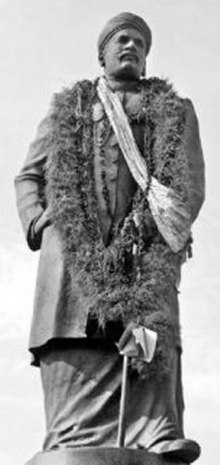
Born 28 August 1863
Venganoor, Thiruvananthapuram, Travancore, British India
Died 18 June 1941 (aged 77)
Madras Presidency, British India
Spouse(s) Chellamma
Ayya Vaikundar

एलेनर जेलिअट



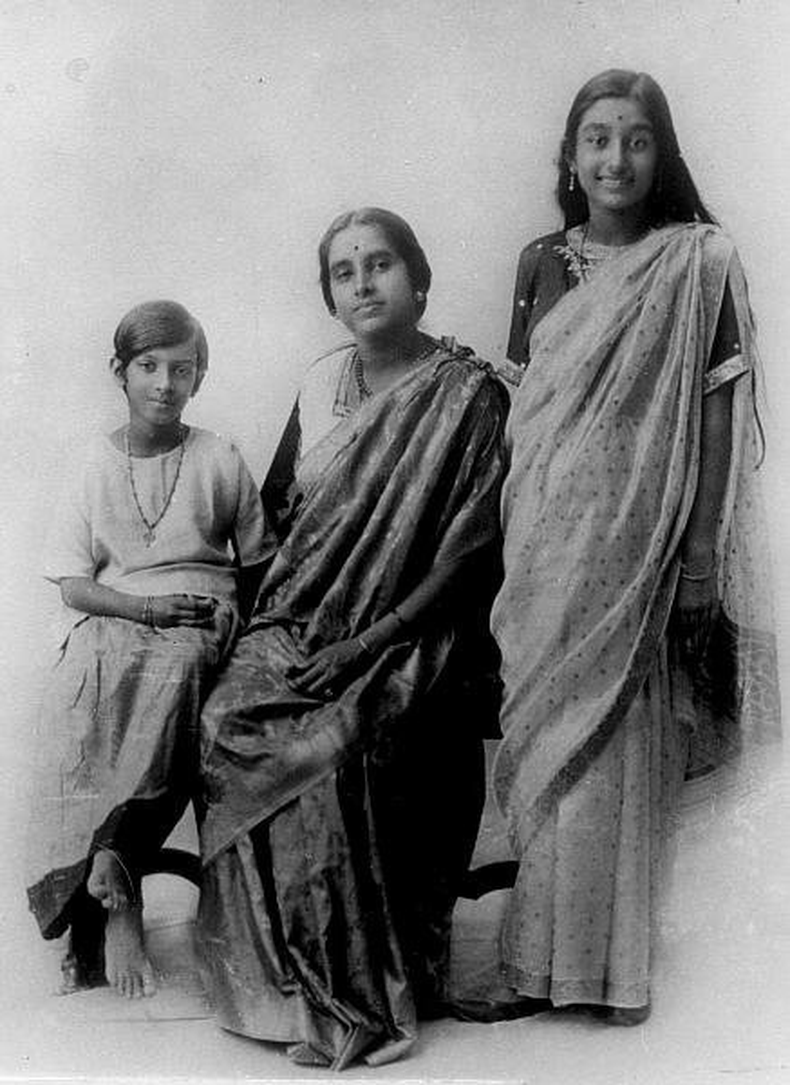



He was first taken to civil hospital in Mansa but was not given proper treatment there. Then he was taken to the PGI at Chandigarh, where both lower arms and one leg had to be amputated since gangrene had set in by then, and his kidneys had collapsed due to blood loss. The doctor was eventually suspended for his conduct.
Bant Singh was featured in 'Chords of Change' TV series and in a 2020 Tamil film 'Gypsy'. Died :
जनवरी 2006 में पड़ोस के गांव के ही जमींदारों ने बंत सिंह के दोनों हाथ-पैर काट दिए गए थे. बंत सिंह के साथ ऐसा इसलिए हुआ क्योंकि वह अपनी नाबालिग बेटी से हुए सामूहिक बलात्कार के विरोध में इंसाफ की लड़ाई लड़ रहे थे. उसके बाद झब्बर पंजाब में दलित और किसान आंदोलन की आवाज बनकर उभरे.
बंत सिंह झब्बर
अमित कुमार दुबे / सतेंदर चौहान
पंजाब में दलित आंदोलन की आवाज बन चुके वामपंथी नेता बंत सिंह झब्बर अब आम आदमी पार्टी में शामिल हो गए हैं. रविवार को मनसा में पार्टी एक कार्यक्रम के दौरान पंजाब प्रभारी संजय सिंह की मौजूदगी में झब्बर ने AAP की सदस्यता ग्रहण की. झब्बर इससे पहले सीपीआई (एमएल) के सदस्य थे और लंबे समय से भूमिहीन किसानों और दलितों के हक की लड़ाई लड़ रहे हैं.
'आप' की सदस्यता ग्रहण करते वक्त झब्बर ने कहा कि कम्युनिस्ट पार्टी के नेतृत्व से उन्हें अब कोई उम्मीद नहीं बची है, पार्टी अब बड़े जमींदार के हाथों में जा चुकी है और मैं अब भी गरीब भूमिहीन किसान ही हूं. आम आदमी पार्टी ने बंत सिंह के पार्टी में शामिल होने को एक अच्छा संकेत बताया है.
कौन हैं बंत सिंह झब्बर


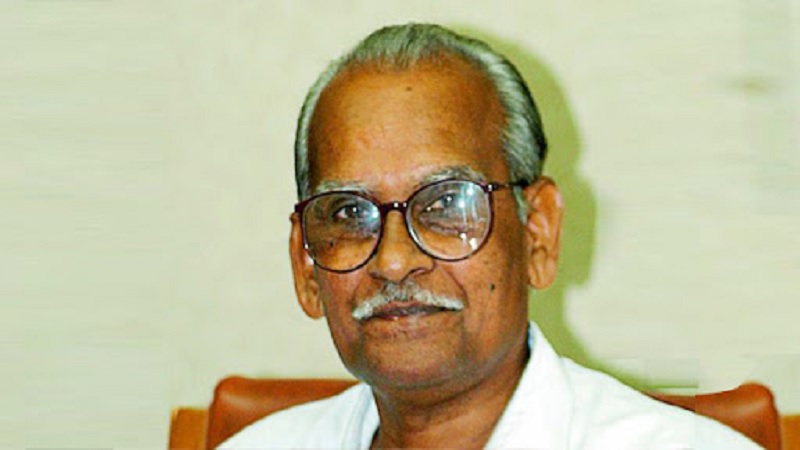
Biography
Early age
He was a human rights activist and stood specially for the rights of Dalits. He also filed case against the encounters by police in Supreme court and demanded that these officers should be booked and the probe should be set up for them. He won the case in Supreme Court of India.
Karamchedu (17 July 1985)
He resigned from the High Court as a sign of protest in 1984 against the attacks on Dalits in Karamchedu in Prakasam district of AP.
He founded AP Dalita Maha Sabha. He worked all his life to spread the ideas of Dr B R Ambedkar in the society especially among the youths.
Death
He died on 16 september 2016 at his residence in Hyderabad after battling with cancer for 3 years .
Books
Mahad:The March That's Launch Everyday in 2018 published by The Shared Mirror Publishing House, Hyderabad.
(Poem) Naalage Godavari (Godavari is Like Me) in 2000.
Brezil Prajala Bhuporatam (The Brazilian's fight for the Land) in 2003 (published by Janapada Vignana Kendram, Hyderabad).
Newspaper run by him is Neela Zenda from Andra Pradesh.
Major Works "Police arestuceseta 'caste-category', 'ground-plow-mudeddulu' 'Panchatantra' (novel)," the born-throat '
Basavanna
ಬಸವಣ್ಣ

Anti-caste struggle by Basaveshwara
 Dr Babasaheb Ambedkar in his book ‘Essays on Untouchables and Untouchability’, Chapter 2, titled – ‘The Revolt of the Untouchables notes, the procession in form of fours marched past and went to the Chawdar tank, and the Untouchables for the first time drank the water. Soon the Hindus, realising what had happened, went into the frenzy and committed all sorts of atrocities upon the Untouchables who had dared to pollute the water.
Dr Babasaheb Ambedkar in his book ‘Essays on Untouchables and Untouchability’, Chapter 2, titled – ‘The Revolt of the Untouchables notes, the procession in form of fours marched past and went to the Chawdar tank, and the Untouchables for the first time drank the water. Soon the Hindus, realising what had happened, went into the frenzy and committed all sorts of atrocities upon the Untouchables who had dared to pollute the water.Crawford County, Arkansas, United States
Died January 12, 1910 (aged 71)
Muskogee, Oklahoma, United States
Occupation Deputy U.S. Marshal, MPD Police Officer
Spouse(s)
Nellie Jennie (m. 1864–1896)
Winnie Sumter (m. 1900–1910)
Children Robert, Lula, Sally, Benjamin, Newland, Harriet, Homer, Edgar, George, Alice, Bass Jr.
Bass Reeves (July 1838 – January 12, 1910) was the first black deputy U.S. marshal west of the Mississippi River. He worked mostly in Arkansas and the Oklahoma Territory. During his long career, he was credited with arresting more than 3,000 felons. He shot and killed 14 people in self-defense.
Early life
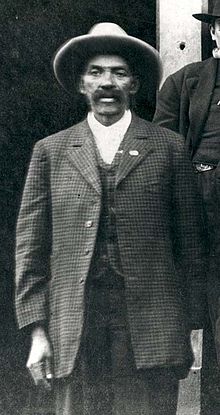
Reeves in 1907
From Wikipedia, the free encyclopedia
B. C. Kamble
Member of Parliament, Lok Sabha
In office
1977–1979
In office
1957–1962
Member of Bombay Legislative Assembly
In office
1952–1957
Editor of Janata
In office
1948–1954
Editor of Prabuddha Bharat
In office
1956–1958
Editor of Republic
In office
1959–1975
Personal details
Born 15 July 1919
Palus, Tasgaon taluka, Sangli District, Maharashtra, India
Died 6 November 2006 (aged 87)[1]
Nationality Indian
Political party Scheduled Caste Federation
Republican Party of India
Republican Party of India (Kamble)
Father Chandrasen Kamble
Residence Mumbai, Maharashtra
Education Bachelor of Arts
Bachelor of Laws
Alma mater Talak High School, Karad
Fergusson College, Pune
Profession Advocate, politician, writer, social worker

Barun Biswas (12 September 1972 – 5 July 2012) was a Bengali school teacher and prominent social activist from Sutia in West Bengal, India, best known for his courageous fight against gang rapes and violence against women in his community. He co-founded an organization to combat these crimes, mobilized villagers, and assisted victims, ultimately paying with his life when he was assassinated by criminals he opposed. His story inspired a film and continues to be remembered as a symbol of resistance against oppression.
Early Life and Education
Born in Sutia, North 24 Parganas district, West Bengal, Barun was the son of Gita Biswas and Jagadish Biswas, who had migrated from Faridpur, Bangladesh, after the 1971 Bangladesh Liberation War. The family settled in Acharipara, Panchpota, where his father worked as a laborer by day and performed in a local theater group at night to fund his children's education. Barun attended Panchpota Bharadanga High School and Gobardanga Khantura High School. He later earned a B.A. in Bengali from Gobardanga Hindu College, a master's degree from Calcutta University, and a B.Ed. from B.T. College in New Barrackpore.
Career as a Teacher
After passing the West Bengal School Service exam, Biswas began teaching Bengali at Mitra Institution (Main) in Kolkata in 1998, a role he held until his death. He was also involved with the Panchpota Sashadanga Sarada Seba Sangha, a local community service group. Described by colleagues and villagers as kind and dedicated, he balanced his teaching duties with activism, often commuting from Kolkata to Sutia to address local issues.
Activism
Biswas's activism began around 2000, initially focusing on environmental and infrastructure problems in Sutia and surrounding areas. He campaigned for a canal to prevent flooding from the Ichamati and Jamuna rivers, creating a blueprint that eventually led to government construction despite initial resistance from local leaders. He also opposed gangs illegally diverting the Ichamati river, which exacerbated floods.
His most notable work was against sexual violence. Between 2000 and 2002, a criminal gang led by figures like Sushanta Choudhury (also spelled Chowdhury) and Bishnu Charan Biswas terrorized Sutia, committing at least 33 reported gang rapes (with many more unreported) and around a dozen murders. At age 28, Biswas co-founded the "Sutia Gonodhorshon Pratibad Mancha" (Sutia Anti-Gang Rape Protest Forum, often called Pratibadi Mancha) in 2000 or 2002 to challenge this. The group organized public meetings, encouraged victims to report crimes, and provided counseling. Biswas publicly rallied the community, saying, "If we can't protect our daughters, sisters, wives and mothers, then we shouldn't be living in a civilized society. If we lack the courage to take on the rapists, we deserve more severe punishment than they do.... So come and join us to protect the honour of our women."
Under his leadership, the Mancha helped victims file police reports, leading to arrests, including Choudhury's life imprisonment. He united villagers, took cases to the media, and protested against the gang's atrocities, becoming the first in Sutia to openly confront them despite threats. His efforts significantly reduced the gang's influence and empowered women to speak out.
Assassination
On 5 July 2012, at around 7:20 pm, Biswas was shot from behind in a parking lot outside Gobardanga railway station while returning home from teaching in Kolkata. He was 39 years old and died at the scene. Police arrested five suspects linked to the Sutia gang, including the alleged shooter Sumanta Debnath (alias Fotke), Debashish Sarkar, Bishwajit Biswas, and Raju Sarkar. The assassin reportedly confessed that Sushanta Choudhury, then in prison, had orchestrated the hit. Choudhury later died in Dum Dum Central Jail. Biswas's family demanded a CBI probe, doubting local investigations would deliver justice. His murder echoed similar killings of activists in the region, like an anti-hooch campaigner two years later.
Legacy
Biswas is remembered as a hero who sacrificed his life for women's safety and community justice. In 2013, the Panchpota Avijan Sangha Durga Puja Committee themed their celebrations around his life, naming the platform "Barun Mancha" to symbolize good triumphing over evil. That same year, the Bengali film Proloy (directed by Raj Chakraborty, starring Parambrata Chatterjee as Biswas) was released as a tribute, with its poster and trailer launched at his home on his death anniversary. His mother, Gita Biswas, said, "I am a proud mother who has lost her son. Barun, my youngest, never went on the backfoot despite knowing there was a threat to his life. Till the day Pratibadi Mancha raises its voice against all atrocities, my son will remain immortal. Barun chilo, Barun ache, Barun thakbe (Barun was, Barun is, and Barun will be)."
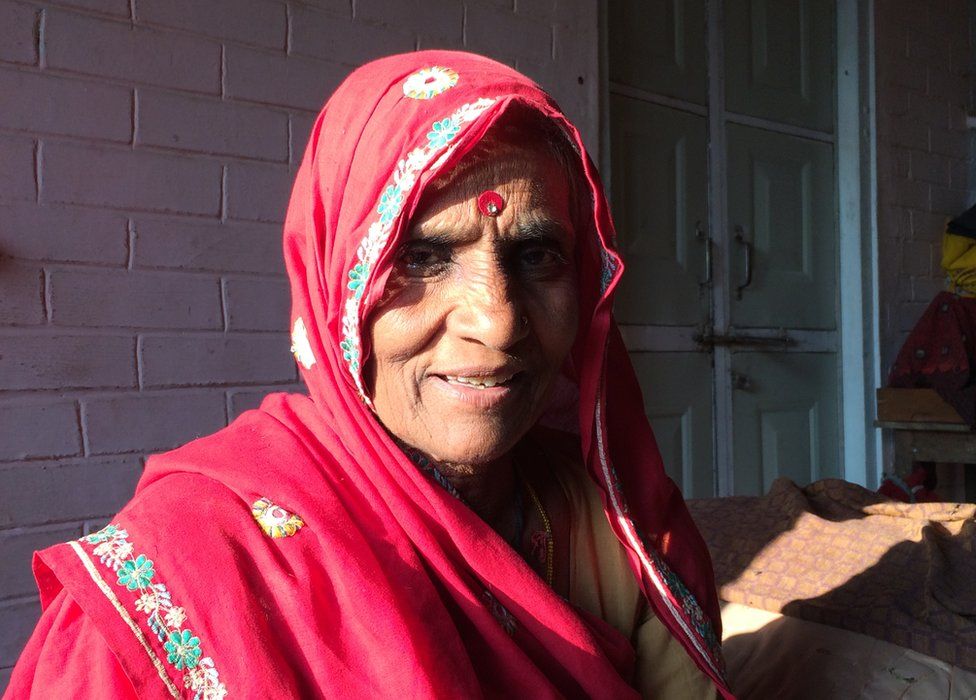
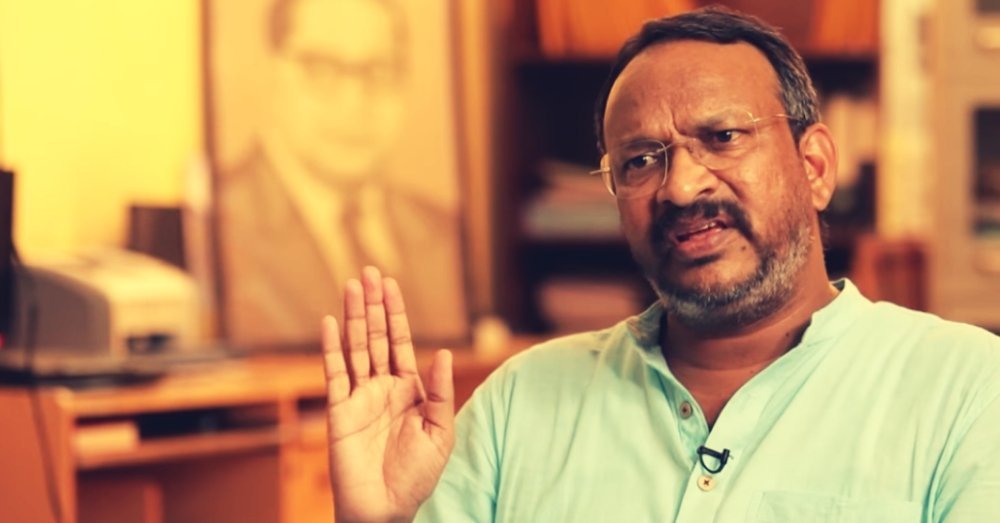




From Wikipedia, the free encyclopedia
Chityala Ailamma
Personal life
Chityala Ailamma was married to Chityala Narsaiah and had four sons and one daughter.
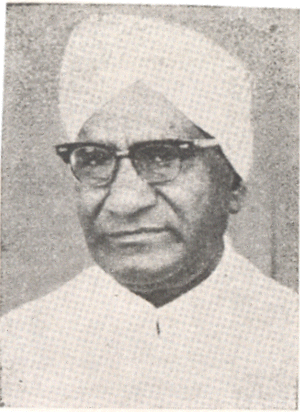
From Wikipedia, the free encyclopedia
Natesa Mudaliar

Natesa Mudaliar on a 2008 stamp of India
Born 1875






 यह शख्स हैं जयपुर, राजस्थान में 28 फरवरी 1928 को जन्मे बामसेफ के संस्थापक सदस्य मा० दीना भाना जी. इन्होने बामसेफ संस्थापक अध्यक्ष मान्यवर कांशीराम साहब को बाबासाहब के विचारो से प्रेरित किया. मा० कांशीराम साहब ने बाबा साहब के विचारो को पूरे भारत में फैलाया.
यह शख्स हैं जयपुर, राजस्थान में 28 फरवरी 1928 को जन्मे बामसेफ के संस्थापक सदस्य मा० दीना भाना जी. इन्होने बामसेफ संस्थापक अध्यक्ष मान्यवर कांशीराम साहब को बाबासाहब के विचारो से प्रेरित किया. मा० कांशीराम साहब ने बाबा साहब के विचारो को पूरे भारत में फैलाया.‘Rice Man’ of India, Dadaji Khobragade Died: The Scientist Among the Farmers




Digamber Hansda

Digamber Hansda (October 16, 1939 – November 19, 2020) was an eminent Indian Santhali academic, litterateur, poet, and tribal activist whose lifelong work focused on the socio-economic empowerment of Adivasi (indigenous) communities, particularly through education, literature, and cultural preservation. A pioneer in Santhali language development, he founded the Santhal Sahitya Akademi, translated the Indian Constitution into Santhali, and advocated for the language's official recognition in Nepal. His efforts spanned Jharkhand, Odisha, and West Bengal, combating poverty, illiteracy, and social evils like witch-hunting while establishing schools and vocational programs. Awarded the Padma Shri in 2018 for literature and education, Hansda was hailed as a "father figure" for the Santhal community, inspiring generations with his selfless service rooted in the philosophy of "giving back to society." He authored several works on Santhali folklore and poetry, collected tribal oral traditions, and served in key national committees until his death.
Early Life and Background
Hansda was born on October 16, 1939, in the rural village of Dobhapani (also spelled Dovapani) in Ghatshila block, East Singhbhum district (now in Jharkhand), into a traditional Santhal farming family. Growing up in the Adivasi-dominated Karandih area near Jamshedpur, he faced the dual challenges of agrarian life and limited resources, often helping his parents till vast family lands from a young age. Despite these hardships, he remained proud of his roots, later stating, "Even at this age, I have no qualms about farming and continue with my ancestral work. I am happy that I did not let my family down when they needed me the most." His early exposure to Santhal culture, including folktales and songs, ignited a passion for preserving tribal heritage amid encroaching modernization and marginalization.
Education
Hansda's formal education began humbly in rural institutions. He completed his elementary studies at Rajdoha Middle School, a modest local facility. For secondary education, he attended Manpur High School in Potka block. Pursuing higher studies while managing family responsibilities proved challenging, but he graduated with a bachelor's degree in political science from Bihar University (now Ranchi University) in 1963 and earned a master's degree in the same field in 1965. His political science background deepened his understanding of socio-political dynamics, fueling his activism for tribal rights and cultural autonomy. Hansda often credited education as "the first step towards independence," a belief that shaped his later career.
Career
Hansda's professional journey began in the early 1960s as secretary of the TISCO Adivasi Co-operative Society, a Tata Steel initiative promoting tribal welfare through vocational training, job creation, and self-employment programs. He later collaborated with Bharat Sevashram Sangh in Sonari, establishing schools in rural Jamshedpur areas, including co-founding RP Patel High School in Jugsalai—though he later critiqued it for serving urban students more than tribals. In 1985, he secured 11.5 acres of land in Karandih on a nominal lease to found Lal Bahadur Shastri Memorial College (LBSM College), where he served as principal until retirement. Under his leadership, the institution flourished, introducing the National Service Scheme (NSS) and tribal languages as instructional mediums.
As a language pioneer, Hansda was a founding president of the Santhal Sahitya Akademi, developing standardized Santhali courses for intermediate, undergraduate, and postgraduate levels under state directives; he set exam questions and assembled examiner panels. Appointed to the Central Government's Tribal Research Institute in 1985, he translated school syllabi from Devanagari to Santhali script. Post-retirement, he contributed to national bodies, including the management committee of IIM Bodh Gaya, the Jnanpith Award selection committee for Santhali, the Central Institute of Indian Languages in Mysore, and syllabus committees for the Union Public Service Commission (UPSC) and Jharkhand Public Service Commission (JPSC). He also organized an international seminar in Karandih and wrote columns for newspapers on tribal issues.
Contributions to Santhali Language, Literature, and Tribal Welfare
Hansda's magnum opus was elevating Santhali—a Dravidian language spoken by over 7 million Santhals—from oral traditions to a literary and educational medium. He braved harsh weather to traverse villages in Potka and Ghatshila, collecting folktales, songs, and oral histories from local artists, compiling them to foster cultural pride and literacy. In 1993, he aided efforts granting Santhali official status in Nepal and assisted Santhali individuals in obtaining citizenship there. Commissioned by the Government of India, he translated the Constitution into Santhali, making democratic principles accessible to tribals.
His activism targeted holistic empowerment: establishing schools and cooperatives to combat illiteracy (reaching remote areas where Dalit and Adivasi children were underserved), vocational programs for economic self-sufficiency, and awareness campaigns against social ills like alcoholism, superstitions, and witch-hunting. Hansda emphasized community-led solutions, urging educated tribals to guide villagers. Through the TISCO society and academies, he mainstreamed marginalized groups, creating curiosity for learning and removing "mental blocks" via knowledge dissemination. His objective, as he put it, was "to enlighten them with knowledge," transforming Santhali youth into professionals across fields.
Key publications include:
- Sarna: A collection of poems.
- Santali Folklore Collection: Compiled oral traditions.
- Bharattera Lokkik Dev Devi: On tribal deities and myths.
- Gangamala: Poetry and prose exploring Santhal life.
Achievements and Awards
Hansda's contributions earned widespread acclaim. In 2018, President Ram Nath Kovind presented him the Padma Shri—India's fourth-highest civilian honor—for literature and education, a moment he described as having "special significance" for validating his "untiring service" to underprivileged communities. Elated yet humble, he vowed renewed vigor, noting, "God has been kind to him throughout his life," and lamented persistent tribal challenges. He also received a Lifetime Achievement Award from the All India Santali Film Association (AISFA) and various district- and state-level honors.
Personal Life
Hansda was married, though his wife predeceased him. He was survived by two sons, Puran and Kunwar, and two daughters, Sarojini and Mayona; one daughter, Tusli, had passed away earlier. Residing in Sarjamtola, Karandih, he lived simply, balancing activism with family farming. A devout culturalist, he drew zeal from Santhal traditions and a commitment to societal repayment, often smiling with satisfaction at education's transformative power.
Death and Legacy
After a prolonged illness, Hansda died peacefully at his Karandih home on November 19, 2020, at age 81. The Jharkhand government accorded him a state funeral the next day, with officials like Deputy Commissioner Suraj Kumar and SSP Dr. M. Tamil Vanam paying floral tributes. Condolences poured in from Governor Draupadi Murmu, Chief Minister Hemant Soren, Union Minister Arjun Munda, and others, who lauded his irreplaceable role in education and tribal upliftment. Former CM Raghubar Das noted, "Prof Digambar's role in education cannot be forgotten," highlighting LBSM College's founding.
Hansda's legacy endures as a beacon for Adivasi empowerment: his students thrive in diverse professions, Santhali literature flourishes, and institutions he built continue fostering inclusivity. On what would have been his 86th birthday in 2025, his work remains a testament to persistent advocacy, ensuring Santhal voices echo in India's cultural mosaic.
Famous As: Mountain Man
Family:
Spouse/Ex-: Falguni Devi (M. ?–1959)
Children: Bhagirath Manjhi
Died On: August 17, 2007
Place Of Death: New Delhi

Eleanor Zelliot (October 7, 1926 – June 5, 2016) was a pioneering American Indologist, historian, and scholar whose life's work centered on the Dalit (formerly Untouchable) communities of India, particularly the Ambedkarite movement led by Dr. B.R. Ambedkar. Hailing from a Quaker family, her religious upbringing instilled a deep commitment to social justice, equality, and non-violence, which profoundly shaped her advocacy for marginalized groups and her intolerance for religious hypocrisy or caste-based oppression. This Quaker influence fueled her lifelong dedication to the liberation of India's Dalits from the caste system, making her not just an academic but a steadfast ally to the movement.
Born in the United States, Zelliot pursued her passion for South Asian history early on. She earned her PhD in history from the University of Pennsylvania in 1969, with an groundbreaking unpublished dissertation titled "Dr. Ambedkar and the Mahar Movement," which was the first doctoral thesis ever written on Ambedkar, focusing on his leadership in the Untouchable Movement in Maharashtra. Her academic journey began even earlier; she first traveled to India in 1962, where she laid a wreath at Ambedkar's memorial, an act that symbolized the start of her deep engagement with his legacy.
In the 1960s, shortly after Ambedkar's death in 1956, Zelliot arrived in India for extensive fieldwork, immersing herself in rural Maharashtra. She lived among Dalit villagers in Maharwadas (Dalit neighborhoods), conducting interviews with Ambedkar's contemporaries and those who had worked alongside him, meticulously documenting their oral histories and experiences. This hands-on approach, combined with archival research, formed the bedrock of her scholarship. Over decades, she made numerous return trips to India, forging lifelong friendships with Dalit activists and intellectuals, including the Moon couple (Vasant and Minaxi Moon) and Gail Omvedt. These relationships led to key collaborations, such as her co-editing and prefacing the English translation of Vasant Moon’s autobiography, Growing Up Untouchable (originally Vasti in Marathi), which brought Dalit narratives to a global audience.
Zelliot's professional career spanned over four decades at Carleton College in Northfield, Minnesota, where she joined as a professor of history in 1969 and taught until her retirement in 1997. There, she became a legendary educator, inspiring two generations of students with her infectious enthusiasm and rigorous scholarship. She co-founded Carleton’s interdisciplinary South Asian Studies program and directed the Associated Colleges of the Midwest (ACM) India study program four times between 1971 and 1996, leading groups of American students on transformative trips to India. Even after retirement, she continued mentoring students, advising on South Asia-related projects, and connecting them to her vast network of contacts in India. Her teaching extended beyond the classroom; she mentored young scholars through the American Institute of Indian Studies (AIIS), encouraging Marathi language studies and research on Ambedkar.
As a scholar, Zelliot was a trailblazer in Dalit studies, introducing Ambedkar and the Dalit movement to Western academia and ensuring their visibility in India as well. She authored over 80 articles, edited three books, and produced translations that illuminated Dalit voices, particularly from Marathi literature. Her work emphasized the historical, psychological, and cultural dimensions of the Ambedkarite Buddhist movement, the role of medieval Untouchable saint-poets like Chokhamela, and the interplay between Buddhism, politics, and Dalit identity in Maharashtra. She viewed Ambedkar not as a solitary hero but as a leader whose movement was rooted in the Mahar community of western India, using modern political tools to challenge untouchability while rejecting traditional religious frameworks. Zelliot's translations of Dalit poetry—such as Keshav Meshram’s "One Day I Cursed That Mother-F****r God" and works by Namdeo Dhasal—captured the raw anger and resilience of Dalit expression, collaborating with figures like Mulk Raj Anand to bridge cultural gaps.
Her major publications include:
- The Experience of Hinduism (co-edited, 1988), exploring lived Hindu traditions.
- From Untouchable to Dalit: Essays on the Ambedkar Movement (1992, third edition 2001), a seminal collection tracing the evolution of Dalit identity and activism.
- Untouchable Saints: An Indian Phenomenon (2005), examining Bhakti-era Dalit poet-saints and their anti-caste legacy.
- Ambedkar’s World: The Making of Babasaheb and the Dalit Movement (2013), a comprehensive biography and analysis published by Navayana, which she modestly critiqued for its title and cover but praised for its archival depth.
She delivered lectures in fluent Marathi across Maharashtra, compiled essays on Dalit literature, and spoke internationally, such as at the University of Minnesota's South Asia Seminar in 2009 on pilgrimage in the Ambedkar movement. Zelliot's generosity extended to her interactions; in email exchanges, she patiently guided emerging scholars, commenting on theses and sharing her archives, always with a sparkling sense of humor and unwavering fidelity to sources.
On a personal note, Zelliot was known for her enormous capacity for generosity—she "wholly gave of herself" to students, friends, and acquaintances. Details of her family life remain private in available records, but her Quaker values permeated her approach, blending intellectual rigor with compassionate activism. She passed away on June 5, 2016, in Minnesota at age 89, leaving behind a void felt deeply in Dalit and South Asian studies circles.
Zelliot's legacy endures as a bridge between worlds: she chronicled the Dalit struggle for global audiences, mentored a new generation of researchers, and embodied the Ambedkarite ethos of equality. Tributes describe her as a "relentless fighter" and "compassionate ally," whose work continues to inspire anti-caste scholarship and activism, ensuring Ambedkar's vision resonates far beyond India's borders.
Erode Venkatappa Ramasamy, Periyar

Erode Venkatappa Ramasamy, popularly known as Periyar or Thanthai Periyar, was a prominent Indian social activist, politician, and rationalist who played a pivotal role in the Dravidian movement in South India. Born on September 17, 1879, in Erode, Madras Presidency (now Tamil Nadu), he is revered as the "Father of the Dravidian Movement" for his efforts in promoting social equality, rationalism, and non-Brahmin empowerment. Periyar founded the Self-Respect Movement in 1925 and the Dravidar Kazhagam (DK) in 1944, organizations that challenged caste hierarchies, religious orthodoxy, and gender inequalities. His activism spanned over five decades, influencing Tamil Nadu's politics and society until his death on December 24, 1973.
Early Life
Periyar was born into a wealthy Kannada-speaking Balija merchant family. His father, Venkatappa Nayakar, was a successful businessman, and his mother was Chinnathyee Muthammal. He had an elder brother, Krishnaswamy, and two sisters, Kannamma and Ponnuthoy. Periyar received only five years of formal education before joining his father's trade at age 12. From a young age, he questioned Hindu mythological stories and societal norms. A pivotal moment came in 1904 during a pilgrimage to Kashi (Varanasi), where he faced discrimination at Brahmin-only eateries, leading to his disillusionment with Hinduism and eventual embrace of atheism. He married Nagammai at 19; they had a daughter who died young, and Nagammai passed away in 1933. In 1948, at age 70, he married his 32-year-old assistant, Maniammai, a union that sparked significant controversy.
Entry into Politics and Early Activism
Periyar initially worked as a businessman but entered public life through social work. He joined the Indian National Congress (INC) in 1919, promoting Khadi, boycotting foreign goods, and fighting untouchability. Elected as chairman of Erode Municipality, he implemented reforms like improving water supply and opening schools for lower castes. In 1921, he was imprisoned for picketing toddy shops. He became president of the Madras Presidency Congress Committee in 1922 but resigned in 1925 after failing to pass a resolution for communal reservations, citing Brahmin dominance in the party. Periyar then aligned with the Justice Party, becoming its president in 1939 and renaming it Dravidar Kazhagam in 1944. A key early campaign was the Vaikom Satyagraha (1924–1925) in Kerala, where he led protests for lower-caste access to temple roads, earning the title "Vaikom Veerar" (Hero of Vaikom).
Social Reforms and Movements
Periyar's activism centered on eradicating social inequalities. He launched the Self-Respect Movement in 1925 to instill dignity among non-Brahmins, promoting rationalism, inter-caste marriages, widow remarriage, and women's rights. Through journals like Kudi Arasu (1925) and Revolt (1928), he disseminated his ideas, establishing a training school in Erode for activists. In 1944, he transformed the Justice Party into Dravidar Kazhagam, a non-electoral organization focused on social reform, Dravidian identity, and opposing Brahminism. A split occurred in 1949 when C. N. Annadurai formed the Dravida Munnetra Kazhagam (DMK) to enter electoral politics, which Periyar opposed. He also led anti-Hindi agitations (1937–1938, 1948, 1952, 1965) against the imposition of Hindi in Tamil Nadu, viewing it as a tool of North Indian dominance. In 1940, he proposed Dravida Nadu, a separate Dravidian state, and was arrested in 1957 for burning copies of the Indian Constitution, which he criticized for perpetuating caste inequalities.
Views on Religion, Caste, and Women's Rights
Periyar was a vocal atheist and rationalist, criticizing Hinduism as a vehicle for Brahmin supremacy and untouchability. He burned images of Rama in 1956, arguing that Hindu epics glorified Aryan dominance over Dravidians, and advocated replacing Sanskrit with Tamil in temples, achieved in the 1970s. On caste, he attributed the system to Aryan invasions, pushing for its abolition through education and reservations, influencing Tamil Nadu's affirmative action policies. For women's rights, Periyar advocated education, property rights, birth control, and an end to child marriages, dowry, and the Devadasi system. He supported women's participation in public life, including police and armed forces, and criticized patriarchal double standards in sexual norms.
Controversies and Criticisms
Periyar's legacy is polarizing. Critics label him "anti-Hindu" for his attacks on religious practices and epics, accusing him of inciting hatred against Brahmins. Some claim he spread false narratives about Dravidians as a separate race invaded by Aryans, contradicted by modern archaeology and genetics. His anti-Brahmin rhetoric is seen by detractors as promoting division rather than unity, with allegations of personal publicity through hatred. The 1948 marriage to Maniammai caused a rift in his movement, viewed by some as hypocritical given his age and her role. He has been accused of inadequately addressing Dalit issues compared to figures like Ambedkar, though supporters argue his work benefited marginalized groups broadly. Jawaharlal Nehru privately called him a "primitive fellow," highlighting national-level friction. In 2021, a PIL challenged textbook portrayals of his views, alleging misinformation.
Legacy
Periyar's influence endures in Tamil Nadu, where his birth anniversary is observed as Social Justice Day. He inspired Dravidian parties like DMK and AIADMK, shaping the state's politics around anti-caste and rationalist ideologies. Statues of him, often alongside Ambedkar and Marx, symbolize his rationalist ethos. His ideas influenced films like Periyar (2007) and continue to spark debates on religion, caste, and Dravidian identity. Scholars view him as a complex figure whose radical atheism and social reforms interlinked to challenge intertwined oppressions of religion, caste, and patriarchy. Despite criticisms, his advocacy for equality has left an indelible mark on Indian social reform.
Jetti Eshwari Bai
Born: 1 December 1918, Secunderabad, Hyderabad State (now Telangana) Died: 1991, Hyderabad Caste/Community: Mala (Scheduled Caste / Dalit) Known as: “Eshwari Amma” or “Dalit Maata” among the oppressed communities of Andhra & Telangana
Childhood in Untouchability
Eshwari Bai was born into a very poor Mala family in the Dalit basti of Secunderabad. Her father worked as a railway porter; her mother rolled beedis. As a Mala girl, she was not allowed to enter the village school building — she had to sit outside on the veranda with other Dalit children. When upper-caste teachers threw chalk at her for daring to ask questions, she decided education would be her weapon against caste.
At age 12 she ran away from home, determined to study. She survived by doing domestic work in Christian missionary hostels, completed Class 7 (a rare achievement for a Dalit girl in the 1930s), and later trained as a midwife/nurse.
Political Awakening and Ambedkar’s Influence
In the 1940s she heard Dr. B.R. Ambedkar speak in Hyderabad. She later said: “That day I understood why we were kept outside the school, outside the temple, outside life itself. Babasaheb gave us the courage to walk in.”
She became one of the earliest women organizers of the Scheduled Castes Federation (later Republican Party of India) in the Telugu region.
Life’s Work – Six Decades of Struggle
| Period | Major Contributions |
|---|---|
| 1940s–1950s | Founded night schools for Dalit children in Hyderabad slums; taught hundreds of girls to read and write. Started “Mahila Mandals” (women’s groups) in Mala-Madiga bastis. |
| 1950s | Led massive protests against untouchability in villages of Warangal, Karimnagar, and Nalgonda. Organised inter-caste dining and temple-entry movements. Faced violent attacks but never retreated. |
| 1956–1960 | Elected Hyderabad Municipal Corporator (one of the first Dalit women corporators in India). Used the position to get water taps and street lights in Dalit colonies. |
| 1967–1972 | Elected MLA from Secunderabad constituency on Republican Party of India ticket — the first Dalit woman MLA from undivided Andhra Pradesh. Raised issues of land for landless Dalits, hostel facilities, and atrocities in the Assembly. |
| 1970s–1980s | Became state president of RPI (Ambedkarite faction). Travelled across villages on foot and bullock cart, mobilising Dalit women. Founded the Andhra Pradesh Dalit Mahila Federation. Campaigned against devadasi system and manual scavenging.
|
- Style of Activism
- Fearless orator in Telugu — could silence upper-caste landlords with sharp logic and Ambedkarite arguments.
- Always wore simple white khadi saree with blue border (Ambedkar’s colours).
- Refused VIP treatment; travelled third-class by train even as an MLA.
- Kept a small statue of Buddha and Ambedkar in her tiny one-room home in Musheerabad, Hyderabad.
Famous Statements
- “If they beat us for drinking water from the village well, we will drink the entire well dry with our protest.”
- “A Dalit woman who learns to read has already broken a thousand chains.”
Personal Life
Married Jetti Ailaiah (also a Mala activist and railway worker). They had four sons and three daughters. All children were educated because Eshwari Bai believed “my community’s freedom begins in my home”. She lived in extreme simplicity till the end — her only possessions were a few sarees, Ambedkar’s books, and photographs of Buddha and Babasaheb.
Death & Legacy
Eshwari Bai passed away in 1991 after a brief illness. Thousands of Dalit women from Telangana and Andhra villages walked barefoot to her funeral in Hyderabad.
Even today (2025):
- Several girls’ hostels and schools in Telangana are named “Eshwari Bai Vidyalaya”.
- 1 December (her birth anniversary) is celebrated as “Dalit Mahila Dinotsavam” by Ambedkarite organisations.
- Young Dalit women activists call her “the mother who taught us to stand tall”.
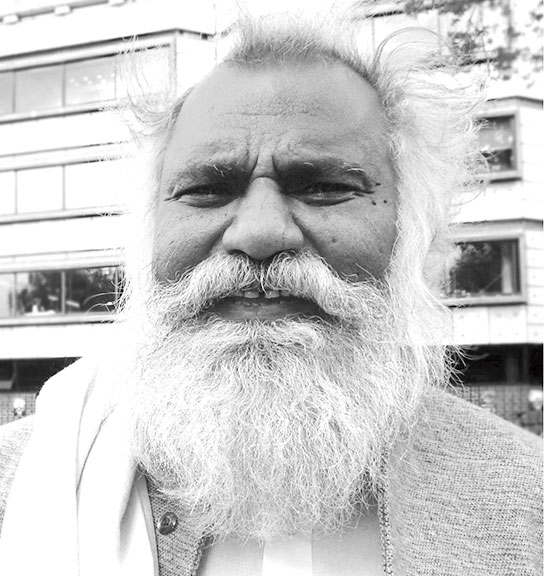


Gangaram Thaware

Not real picture
From Wikipedia

From Wikipedia, the free encyclopedia

Dalit and transgender activist Grace Banu from Tamil Nadu, India


Hari Lal Dusadh

Hari Lal Dusadh (commonly known as H.L. Dusadh or simply Dusadh) is a prominent Indian social and political writer, intellectual, and activist born on October 20, 1953, in Naravli Khem Devariya village, Uttar Pradesh, India. Hailing from the Dusadh (also spelled Dusad or Paswan) community—a Scheduled Caste (SC) or Dalit group historically associated with roles like village watchmen, palanquin bearers, and agricultural laborers—he embodies the struggles and resilience of Bahujan (Dalit, Adivasi, and OBC) communities. Standing as a beacon for social justice, Dusadh is often hailed as the "Diversity Man of India" for his tireless advocacy on caste diversity, empowerment, and political mobilization. He spent his early life in Kolkata, West Bengal, which exposed him to urban socio-economic disparities, shaping his lifelong commitment to grassroots activism. Bespectacled, bearded, and soft-spoken, Dusadh's frail physique belies the hardships he has endured, including economic challenges and societal discrimination, yet he remains a fervent voice against caste oppression.
Dusadh's personal journey is rooted in the ethos of "Pay Back to Your Society," a call from Bahujan Samaj Party (BSP) founder Kanshi Ram that profoundly influenced him. He views Kanshi Ram not just as a political organizer but as an original thinker who emphasized political power as the pathway to Dalit equality and economic upliftment. Dusadh's activism transcends writing; he has engaged directly with political figures, including a recent meeting with Congress leader Rahul Gandhi to discuss strategies for countering BJP's dominance through caste-based alliances. As of 2025, at age 71, he continues to critique religious politicization, such as the Ram Mandir issue, by invoking historical Dalit resistance like B.R. Ambedkar's 1930 march to the Kala Ram Temple in Nashik.
Activism and Career
Dusadh's activism centers on Bahujan empowerment, challenging Brahmanical hegemony, and promoting diversity in India's social, economic, and political spheres. He founded the Bahujan Diversity Mission (BDM), a platform uniting Dalit activists and organizations to demand representation in business, media, and governance—reflecting India's caste demographics. The BDM advocates for "social diversity" in corporate boards, public institutions, and cultural narratives, arguing that exclusion perpetuates inequality. Under his leadership, the mission has organized protests, seminars, and campaigns, including Bharat Bandh actions against discriminatory policies like the 13-Point Roster (which allegedly diluted SC/ST reservations).
Inspired by Dalit Panthers founder Namdeo Dhasal (whom Dusadh visited during his final illness in 2014), he has been a key figure in the broader Dalit literary and intellectual movement. Dusadh critiques the English-dominated seminar circuits of Delhi's elite spaces (e.g., India International Centre), positioning himself as a Hindi-writing, grassroots scholar who produces "voluminous" work without institutional backing. His activism gained renewed attention in 2024 when he outlined strategies to "defeat the BJP," emphasizing unity among Dalits, OBCs, and minorities while exposing caste biases in religious politics. He argues that events like the Ram Mandir Pran Pratishtha favor upper castes, urging counter-narratives rooted in Ambedkarite history.
Dusadh's contributions extend to policy advocacy, including restoring the 200-Point Roster for reservations and scrapping what he calls the "manuwadi" (Manusmriti-inspired) 13-Point system. He has praised figures like Uddhav Thackeray for symbolic resistances, such as visiting Kala Ram Temple on inauguration day, to highlight Dalit exclusion from temple rituals and priesthoods.
Literary Works
Dusadh is a prolific author with over 70 books on Bahujan history, diversity, and politics, primarily in Hindi. His writings blend research, folklore, and critique, drawing from Dusadh oral traditions (e.g., heroes like Chauharmal Baba and Gauriya Baba) to reclaim Dalit agency. Key themes include:
- Caste and Diversity: Exploring Bahujan contributions to Indian society, often overlooked in mainstream histories.
- Political Mobilization: Essays on Kanshi Ram's vision and BSP's role in Dalit empowerment.
- Social Justice: Critiques of Brahmanical patriarchy, economic exclusion, and religious exploitation.
Notable works include analyses of Dalit unrest, identity formation, and resistance against feudal oppression. His books are celebrated for their "transformational passion," produced with limited resources, and have influenced activists across Uttar Pradesh, Bihar, and Delhi. While exact titles are scattered across Hindi publications, compilations like Duh Sadhya se Dusadh Tak (From Oppression to Dusadh) reflect his focus on community evolution from subjugation to assertion.
Recognition and Legacy
Dusadh's work has earned him acclaim as a "tireless Dalit activist" and intellectual bridge between academia and the streets. Featured in outlets like The Mooknayak and Indian Express, he is praised by commentators like Sudheendra Kulkarni for his authenticity amid elite gatekeeping. His net worth remains modest (estimated under ₹1 crore as of 2022, primarily from writing and activism), underscoring his non-commercial ethos. In 2019, socialist platforms lauded his support for child protesters in reservation movements, symbolizing intergenerational solidarity.
HARI RAOJI CHIPLUNKAR

 Stan Swamy, 83, is among those arrested for allegedly conspiring to set off the violence in Bhima Koregaon.
Stan Swamy, 83, is among those arrested for allegedly conspiring to set off the violence in Bhima Koregaon.Bibliography
Narrative of the Life and Adventures of Henry Bibb, An American Slave, Written by Himself, Self-published, New York: 1849
I.K. Kumaran
I.K. Kumaran, popularly known as I.K. Kumaran Master, was a prominent Indian freedom fighter, social reformer, and political activist from Kerala, particularly active in the Malabar region and the French enclave of Mahe. Born on July 1, 1900, in Koovakkattil, Edakkode, Malabar District (now in Kozhikode District, Kerala), he dedicated his life to India's independence movement, social equality, and the integration of French territories into India. A key figure in the Indian National Congress and the Youth League, Kumaran fought against British and French colonial rule, advocated for the eradication of untouchability, and promoted communal harmony. He passed away on October 23, 1978, leaving a legacy of grassroots activism and regional contributions to India's freedom struggle.Early Life and Background
I.K. Kumaran was born into the Mappila (Moplah) community, a Muslim ethnic group in Kerala with roots in Arab trade and local intermingling, often classified as a backward class in modern India. His family details are sparsely documented, but he grew up in the Malabar region under British colonial rule, with Mahe, a nearby French enclave, shaping his early experiences due to his French citizenship. Kumaran pursued education and qualified as a sub-inspector for the British Indian police but was denied the position because of his French citizenship status. From 1928, he worked as a teacher at Choodikotta Madrasa and Ottapilakool Mappila School, earning the title "Master." During this time, he was influenced by local Congress leaders like Muchikal Padmanabhan, which sparked his entry into political and social activism.
Entry into the Freedom Struggle
Kumaran's activism began in the 1930s through the Youth League, a platform for mobilizing young Indians against colonial rule. Inspired by the Indian National Congress's call for independence, he resigned from his teaching position in 1940 to dedicate himself fully to the freedom movement. He joined the Congress and became a prominent leader in the Malabar region, serving as President of the Vadakara Congress Committee and working to reorganize the Congress in Kottayam Taluk (now part of Kozhikode and Kannur districts). His early efforts focused on promoting nationalist ideals, including the use of khadi (homespun cloth) and boycotts of foreign goods, aligning with Mahatma Gandhi’s non-violent resistance strategies.
Role in the Liberation of Mahe
One of Kumaran’s most significant contributions was his leadership in the liberation of Mahe, a French enclave in Kerala, from colonial rule. As a resident of Mahe, he faced unique challenges due to his French citizenship, which fueled his resolve to integrate French territories into independent India. In the 1940s and 1950s, he participated in protests against French colonial authorities, advocating for Mahe’s merger with India. A notable event occurred on April 21, 1954, when Kumaran led efforts to hoist the Indian national flag in smaller French enclaves like Cherukallayi, Naluthura, and Choodikotta, symbolizing resistance to French rule. These actions were part of a broader movement to liberate French territories, culminating in Mahe’s integration into India in 1954, following negotiations and protests. Kumaran faced violence from communist groups and colonial forces during these struggles and was imprisoned multiple times for his anti-colonial activities.
Social Reforms
Beyond his role in the freedom struggle, Kumaran was a committed social reformer. He actively campaigned against untouchability, a pervasive social evil, and worked for the upliftment of Harijans (Dalits), advocating for their inclusion in mainstream society. He promoted mixed eating (inter-caste dining) to break caste barriers and foster communal harmony, a radical act in the caste-ridden society of the time. Kumaran also supported the Bhoodan movement, initiated by Vinoba Bhave, which encouraged landowners to donate land to the landless, and he was involved in prohibition campaigns to curb alcohol consumption, aligning with Gandhian principles. His work as an educator and activist emphasized empowering marginalized communities through education and social integration.
Political Career
Kumaran’s political career was rooted in the Indian National Congress, where he held leadership roles in the Malabar region. As President of the Youth League at various points, he mobilized young activists for the independence movement and post-independence nation-building. His work in reorganizing the Congress in Kottayam Taluk strengthened the party’s grassroots presence in northern Kerala. After India’s independence in 1947, Kumaran continued his activism, focusing on the integration of French enclaves and regional development. While he did not hold major electoral positions, his influence as a local leader and freedom fighter was significant in shaping Kerala’s political landscape. Known for his simplicity and dedication, Kumaran balanced his roles as a teacher, activist, and politician, earning respect as a grassroots leader.
Death
I.K. Kumaran passed away on October 23, 1978, at the age of 78. His death marked the end of a life dedicated to India’s freedom and social justice, though specific details about his final years or cause of death are not widely recorded.
Legacy
I.K. Kumaran’s legacy is deeply tied to his contributions to the liberation of Mahe and his efforts in the Indian independence movement. In Kerala, he is remembered as a freedom fighter who bridged anti-colonial resistance with social reform. Streets in Kozhikode, such as I.K. Kumaran Master Road, and references in local histories honor his role in the struggle. His advocacy for Harijan upliftment, communal harmony, and regional integration left a lasting impact on Malabar’s socio-political fabric. While not as nationally prominent as figures like Gandhi or Ambedkar, Kumaran’s regional contributions are celebrated in Kerala’s freedom struggle narrative.
Controversies and Criticisms
There are no significant controversies or criticisms associated with I.K. Kumaran in available records. His activism was aligned with the non-violent principles of the Congress and focused on inclusive social reforms, earning him respect among peers and communities. However, his confrontations with communist groups during the Mahe liberation movement highlight political tensions of the time, though these were not personal controversies.
Conclusion
I.K. Kumaran Master was a dedicated freedom fighter whose work in the Malabar region and Mahe exemplified the intersection of anti-colonial resistance and social reform. His efforts in the Youth League, Congress, and the liberation of French enclaves, combined with his advocacy for untouchability eradication and Harijan upliftment, mark him as a significant figure in Kerala’s history. His Mappila background and commitment to communal harmony further underscore his role as a bridge-builder in a diverse society.
Jyotirao Govindrao Phule
Full Name: Jyotirao Govindrao Phule (popularly known as Mahatma Jyotiba Phule) Born: 11 April 1827, Katgun, Pune, Maharashtra (British India) Died: 28 November 1890, Pune (aged 63) Caste/Community: Mali (gardener-florist community, classified as Shudra, not untouchable but considered low in the varna system) Parents: Govindrao (flower seller) and Chimnabai Wife: Savitribai Phule (India’s first female teacher and co-reformer) Key Identity: Social reformer, anti-caste revolutionary, thinker, writer, activist, founder of the modern Dalit-Bahujan movement
Jyotiba Phule is regarded as one of the most radical and pioneering social revolutionaries in 19th-century India. He is widely considered the father of Indian social justice and anti-caste ideology.
Major Contributions and Achievements
- Pioneer of Women’s Education in India
- 1848: Opened the first school for girls in India at Bhide Wada, Pune (Savitribai Phule became the first woman teacher).
- Established schools specifically for Shudra and Ati-Shudra (Dalit) girls.
- Started schools for widows and children of prostitutes.
- Founded a total of 18 schools during his lifetime.
- Fierce Opponent of the Caste System and Brahmanism
- Most famous book: Gulamgiri (Slavery, 1873) – Dedicated to American abolitionists; compared the Indian caste system to slavery and called the Shudra-Atishudra condition worse than African slavery.
- Other major works:
- Shetkaryacha Asud (Cultivator’s Whipcord, 1883)
- Sarvajanik Satyadharma (Public True Religion, published posthumously in 1891)
- Khandalyache Shiv (poetic drama criticizing Brahmanical myths)
- Founder of Satyashodhak Samaj (1873)
- Established the Society for Seeking Truth on 24 September 1873 in Pune.
- Aim: To liberate Shudras and Ati-Shudras from Brahmanical religious domination.
- Performed marriages and funerals without Brahmin priests, rejected Vedic authority, promoted monotheism (one formless God).
- Introduced “Satyashodhak marriage” (simple, priest-less, dowry-less weddings).
- Work for Untouchables (Dalits)
- 1850s: Opened the first public well for untouchables in Pune.
- Kept water tanks open in his own house for untouchables.
- 1863: Opened Balhatya Pratibandhak Griha (Infanticide Prevention Home) to save children of raped Brahmin widows and protect unwanted babies.
- Adopted and raised a Brahmin widow’s child born out of rape (named him Yashwant; he later became a doctor).
- Peasant and Labour Rights
- Wrote extensively against exploitation of farmers by upper-caste moneylenders and officials.
- Demanded that British government stop seizing farmers’ land for unpaid revenue.
- Advocated reforms in the Ryotwari system.
Core Ideology and Beliefs
- Considered Aryan Brahmins as foreign invaders who subjugated indigenous people.
- Regarded King Bali (defeated by Vamana avatar) as the real king of the original inhabitants (Shudras).
- Promoted worship of one formless God (Nirguna-Nirakar); rejected idol worship, rituals, and Puranic stories.
- Believed all humans are equal; caste is not by birth but by actions.
- 14 years before Karl Marx published the Communist Manifesto, Phule was already talking about class struggle in the Indian context.
Famous Quotes (translated)
- “Lack of education leads to lack of wisdom, which leads to lack of morals, which leads to lack of progress, which leads to lack of money, which leads to the oppression of the lower castes. See what lack of education has done.”
- “Destroy the caste system to save the nation.”
Legacy and Recognition
- Dr. B.R. Ambedkar called him one of his three gurus (the others being Buddha and Kabir).
- The entire Dalit-Bahujan movement in Maharashtra and India traces its roots to Phule.
- Bahujan Samaj Party (BSP), Samajwadi Party’s social justice wing, Satyashodhak movements – all draw direct inspiration from him.
- Government of India issued a commemorative postage stamp in 1990.
- Pune University was renamed Savitribai Phule Pune University in 2015.
- In Maharashtra, he and Savitribai are jointly honored as Mahatma Phule and Krantijyoti Savitribai.
Jyotiba Phule was the first Indian reformer who did not work top-down (like Raja Ram Mohan Roy or Dayananda) but bottom-up – he empowered the most oppressed sections first. Centuries before “woke” culture or modern intersectionality, he fought simultaneously for caste abolition, women’s rights, farmers’ rights, and rational religion.
Today, he is revered across India (especially Maharashtra) as Mahatma Jyotiba Phule – the great revolutionary who laid the foundation for social justice, equality, and dignity for the oppressed masses.



Jogendra Nath Mandal (29 January 1904 – 5 October 1968) was a pioneering Indian and later Pakistani politician and activist from Bengal, renowned for his tireless advocacy for the rights of Scheduled Castes, particularly the Namasudra community. As a Dalit leader, he fought against caste oppression and played a significant role in pre- and post-Partition politics, aligning with Dr. B.R. Ambedkar and briefly with the Muslim League. His life reflects the complexities of caste, religion, and nationalism in colonial and post-colonial South Asia.
Early Life and Caste Background
- Birth and Community: Born in a small village in Barisal, Bengal (now in Bangladesh), Mandal belonged to the Namasudra caste, a Scheduled Caste group historically marginalized as "untouchables." The Namasudras were primarily fishermen and peasants who faced severe social and economic discrimination under the Hindu caste system.
- Education: Despite caste barriers, Mandal pursued education, earning a B.A. from B.M. College in Barisal and a law degree. His academic journey was a testament to his determination to overcome systemic exclusion.
Activism and Political Career
Mandal's activism centered on uplifting Dalits, challenging upper-caste dominance, and securing political representation for marginalized communities. His career can be divided into key phases:
1. Early Activism and Leadership in Bengal
- Namasudra Advocacy: Mandal emerged as a voice for the Namasudra community, organizing them to demand social equality, education, and economic opportunities. He criticized the Congress party's upper-caste leadership for neglecting Dalit interests.
- Alignment with Ambedkar: Inspired by Dr. B.R. Ambedkar, Mandal joined the All India Scheduled Castes Federation (SCF), founded by Ambedkar to fight for Dalit rights. He became a key ally, amplifying Ambedkar’s call for separate electorates and political empowerment for Scheduled Castes.
- Bengal Legislative Assembly: Mandal entered politics in the 1930s, winning a seat in the Bengal Legislative Assembly in 1937 under the reserved quota for Scheduled Castes. He used this platform to advocate for land reforms, education, and anti-caste policies.
2. Alliance with the Muslim League
- Strategic Partnership: In the 1940s, Mandal aligned with the Muslim League, believing that Muslims and Dalits shared a common struggle against upper-caste Hindu oppression. He saw the League’s demand for Pakistan as a potential escape from Hindu caste hierarchies.
- Role in Partition: Mandal supported the Muslim League in the 1946 elections, helping them secure a strong mandate in Bengal. His decision was controversial, as it diverged from Ambedkar’s eventual opposition to aligning with the League.
3. Role in Pakistan (1947–1950)
- First Law and Labour Minister: After the Partition of India in 1947, Mandal opted to join Pakistan, believing it offered better prospects for Dalits. He was appointed Pakistan’s first Minister of Law and Labour in Muhammad Ali Jinnah’s cabinet, a historic role for a Dalit leader.
- Disillusionment: Mandal soon faced anti-Dalit discrimination and communal violence against Hindus in East Pakistan (now Bangladesh). Disenchanted with the Muslim League’s failure to protect minorities, he resigned in October 1950, citing systemic marginalization of Dalits and Hindus.
4. Return to India
- Life in West Bengal: After resigning, Mandal returned to India, settling in West Bengal. However, he faced political isolation, as both Congress and Hindu nationalist groups viewed him with suspicion due to his earlier Muslim League association.
- Later Activism: He continued advocating for Dalit rights but struggled to regain his earlier prominence. His later years were marked by financial hardship and marginalization in mainstream politics.
Key Contributions
- Dalit Empowerment: Mandal was instrumental in mobilizing the Namasudra community, giving them a political voice in Bengal. His work laid the groundwork for Dalit movements in the region.
- Ambedkarite Legacy: As a follower of Ambedkar, he championed the cause of Scheduled Castes, emphasizing education, self-respect, and political representation.
- Partition Politics: His brief alignment with the Muslim League highlighted the complex interplay of caste and religion in the Partition era, reflecting the dilemmas faced by Dalit leaders.
Controversies
- Muslim League Alliance: Mandal’s decision to support the Muslim League and join Pakistan drew criticism from some Dalit leaders and Ambedkar himself, who later distanced himself from such alliances.
- Post-Partition Marginalization: His return to India was met with distrust, limiting his political influence in the post-independence era.
Death and Legacy
- Death: Mandal passed away on 5 October 1968 in Bongaon, West Bengal. His death anniversary is occasionally commemorated by Ambedkarite and Dalit organizations, though no major events are recorded for October 5, 2025, based on available data.
- Legacy: Mandal remains a polarizing yet significant figure in Dalit history. His life underscores the challenges of navigating caste, religion, and nationalism. Organizations like the Ambedkar International Center and Namasudra groups in Bengal continue to draw inspiration from his work.
Connection to October 5
 A file photo of activist Jyoti Jagtap. | Kabir Kala Manch via Twitter.
A file photo of activist Jyoti Jagtap. | Kabir Kala Manch via Twitter.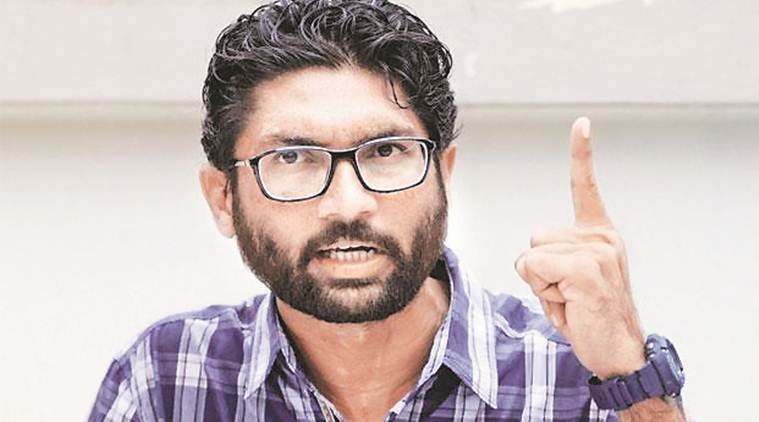
He is particularly known for his work in the field of Dalit rights and social justice issues.
Here are the key details about his life and work:
Born: December 11, 1980, in Ahmedabad, Gujarat, India.
Occupation: Lawyer, Social Activist, Politician, and former Journalist.
Education: He holds a Bachelor of Arts (B.A.) in English Literature from Gujarat University and a Bachelor of Laws (L.L.B.) degree. He also has a Post Graduate Diploma (PGD) in Journalism.
Activism and Advocacy
Jignesh Mevani rose to national prominence for his activism, primarily focused on the rights and upliftment of marginalized communities.
Key Organization: He is the convener of the Rashtriya Dalit Adhikar Manch (RDAM).
Una Agitation (2016):
He became a major figure after organizing the widespread Una Dalit agitation. This movement was a protest against the public flogging of four Dalit youths by cow vigilantes in Una, Gujarat. He led a Dalit Asmita Yatra (Dalit Pride March) from Ahmedabad to Una, with the popular slogan: "Gaaye nu puchhdu taame rakho, aamne amaari jameen aapo" (You keep the cow's tail, give us our land).The protest included Dalits taking a pledge to stop removing cow carcasses and cleaning gutters, shifting the focus to demanding land rights
- Core Issues: His activism has centered on:
Fighting for land rights for landless Dalits and laborers from surplus government land.
Advocating for better working conditions and increased salaries for sanitation workers.
Demanding justice and protection from atrocities for Dalits and other marginalized communities.
Politial Career
Mevani transitioned into electoral politics following his activism.
Legislative Assembly: He serves as the representative of the Vadgam constituency in the Gujarat Legislative Assembly since 2017.
Vadgam is a Scheduled Caste reserved seat. 2017 Election: He first won the Vadgam seat as an Independent candidate, with external support from the Indian National Congress.
Political Affiliation: He is currently a member of the Indian National Congress party, which he joined in 2021.
He was re-elected on a Congress ticket in 2022.
Jaibai Chaudhary

Jaibai Chaudhary (also spelled Jai Bai or Jaibai Choudhary; 1892–1977) was a trailblazing Indian activist, writer, educator, and social reformer from Maharashtra, known for her relentless fight against caste oppression, advocacy for Dalit rights, and efforts to uplift women through education. As a member of the Mahar caste, a Scheduled Caste (SC) community, she overcame immense socio-economic and gender-based barriers to become one of the earliest Dalit women to receive formal education and emerge as a leader in the Ambedkarite movement. Her work laid foundational stones for the Dalit women’s movement and continues to inspire social justice activism in India.
Below is a detailed account of her life, contributions, and legacy, presented in English as requested.
Early Life and Background
- Birth and Family: Jaibai was born in 1892 in Umrer, a town near Nagpur in Maharashtra, into a Mahar family. The Mahars, historically subjected to severe untouchability and relegated to menial tasks like village watchkeeping, faced systemic exclusion from education and social mobility.
- Socio-Economic Context: Her childhood coincided with famines and economic distress in rural Maharashtra, forcing her family to migrate in search of survival. Despite these challenges, her father, Ramu (a farmer), and her family valued education, a rarity for Dalits at the time.
- Early Struggles: As a Dalit girl, Jaibai faced double discrimination due to her caste and gender. Access to education was restricted, and societal norms confined Dalit women to domestic or manual labor roles. Her determination to break these barriers defined her early life.
Education and Entry into Activism
- Missionary Education: Jaibai’s life took a transformative turn when she enrolled in a missionary school in Nagpur, one of the few avenues open to Dalits for education in the colonial era. She became one of the first Mahar women to receive formal schooling, learning to read and write in Marathi.
- Teacher Training: Inspired by her education, she trained as a teacher, a groundbreaking achievement for a Dalit woman in the early 20th century. However, her career faced constant obstacles due to caste prejudice. Upper-caste parents often boycotted schools where she taught, leading to her dismissal from multiple teaching positions.
- Influence of Ambedkar: Jaibai was deeply influenced by Dr. B.R. Ambedkar, the towering Dalit leader and architect of India’s Constitution. His call for education, organization, and agitation against caste oppression resonated with her, shaping her activism. She became a committed follower of the Ambedkarite movement, which sought to dismantle caste hierarchies and empower Dalits.
Key Contributions as an Activist
Jaibai Chaudhary’s activism spanned education, women’s empowerment, and anti-caste resistance. Her work was remarkable for its focus on Dalit women, who faced intersecting oppressions of caste, class, and gender. Below are her major contributions:
- Founding Women’s Organizations:
- Jaibai established the women’s wing of the Bahishkrit Hitakarini Sabha (Depressed Classes Welfare Association), a key Ambedkarite organization founded in 1924 to uplift Dalits and other marginalized groups. This wing focused on mobilizing Dalit women for social and political action.
- She organized Dalit women to participate in protests and meetings, fostering a sense of agency and community. A notable example was the 1938 mass meeting in Nagpur, where thousands of Dalit women gathered to protest upper-caste discrimination and demand equal rights.
- Advocacy for Education:
- Jaibai viewed education as the cornerstone of Dalit liberation, echoing Ambedkar’s maxim, “Educate, Agitate, Organize.” She worked tirelessly to promote literacy among Dalit women and children, running informal schools and encouraging families to prioritize education.
- Her essays and speeches in Marathi emphasized self-reliance and the transformative power of knowledge, urging Dalit women to break free from traditional roles.
- Anti-Caste Activism:
- Jaibai actively participated in Ambedkar-led movements, such as campaigns for access to public spaces (e.g., the Mahad Satyagraha of 1927 for water tank access) and temple entry rights. These movements challenged the exclusion of Dalits from public resources.
- She confronted caste-based violence and discrimination head-on, advocating for legal and social protections for Dalits. Her public speeches called out the hypocrisy of upper-caste reformers who opposed untouchability in theory but upheld it in practice.
- Literary Contributions:
- As a writer, Jaibai penned essays and articles in Marathi for Dalit publications, articulating the struggles of Dalit women and the need for systemic change. Her writings were accessible and aimed at inspiring grassroots action.
- Her work as a poet and storyteller also helped preserve and promote Dalit oral traditions, giving voice to the community’s experiences of marginalization and resistance.
- Role in the Ambedkarite Movement:
- Jaibai was a key figure in mobilizing women for Ambedkar’s broader initiatives, including the push for constitutional safeguards for Dalits and the eventual mass conversion to Buddhism in 1956. While she passed away before fully participating in the Buddhist movement, her activism aligned with Ambedkar’s vision of rejecting Hinduism’s caste system.
Challenges and Discrimination
Jaibai’s life was marked by relentless challenges due to her identity as a Dalit woman:
- Caste-Based Exclusion: Despite her qualifications, she was repeatedly denied teaching jobs or forced out due to upper-caste resistance. For example, parents would withdraw their children from schools where she taught, citing her “untouchable” status.
- Gender Barriers: As a woman in a patriarchal society, Jaibai faced additional scrutiny and restrictions. Her public role as an activist was groundbreaking but met with hostility from traditionalists who opposed women’s leadership.
- Economic Hardship: Coming from a poor agrarian family, she had limited resources to sustain her activism. Her reliance on community networks and missionary support underscores the grassroots nature of her work.
Legacy and Impact
Jaibai Chaudhary’s contributions left an indelible mark on the Dalit movement and women’s empowerment in India:
- Pioneer for Dalit Women: She was among the first to articulate the unique struggles of Dalit women, paving the way for later activists like Savitribai Phule (in education) and modern Dalit feminist scholars.
- Inspiration for Ambedkarite Feminism: Her work bridged caste and gender justice, highlighting how Dalit women faced “double discrimination.” This framework remains central to contemporary Dalit feminist thought.
- Educational Advocacy: Her emphasis on education inspired generations of Dalit women to pursue learning as a path to empowerment. Schools and institutions in Maharashtra later named after her honor this legacy.
- Cultural Memory: Jaibai’s writings and speeches are preserved in Dalit literary archives, serving as primary sources for understanding early 20th-century Dalit resistance. Her life story is celebrated in Marathi literature and Dalit history texts.
Later Life and Death
- Continued Activism: Jaibai remained active in social reform until her later years, mentoring younger activists and participating in Ambedkarite gatherings. She lived modestly, dedicating her life to the cause.
- Death: Jaibai Chaudhary passed away in 1977 in Nagpur. Her death marked the loss of a pioneering voice, but her contributions continued to resonate in the Dalit movement.
- Posthumous Recognition: While not as widely known as Ambedkar or Savitribai Phule, Jaibai is celebrated in Dalit histories and Maharashtra’s social reform circles. Community organizations and scholars continue to highlight her role through seminars, books, and memorials.
Historical Significance
Jaibai’s activism unfolded during a critical period in India’s history, bridging the colonial era and early independence. Her work complemented Ambedkar’s constitutional efforts, including his resignation from Nehru’s Cabinet on October 11, 1951 (coincidentally, the same date referenced in your earlier query). While Ambedkar fought for systemic change at the national level, Jaibai’s grassroots efforts empowered Dalit women locally, creating a multi-pronged attack on caste oppression.
Her story also reflects the broader challenges of the time: the Congress government’s hesitancy to push radical social reforms (e.g., the Hindu Code Bill) and the persistence of caste-based resistance to Dalit advancement. Jaibai’s life underscores the courage required to challenge entrenched hierarchies in a deeply stratified society.
Sources and Reliability
Information about Jaibai Chaudhary comes from:
- Dalit Histories: Marathi biographies and Dalit literature archives, such as those compiled by the Ambedkarite movement, document her life and contributions.
- Community Records: Mahar and Dalit community narratives in Maharashtra preserve her legacy through oral histories and publications.
- Academic Works: Scholars of Dalit feminism and social reform (e.g., Shailaja Paik, Anand Teltumbde) reference her as a key figure in early 20th-century activism.
- Note on Limited Records: As a grassroots figure, Jaibai’s documentation is less extensive than Ambedkar’s, and some details (e.g., exact dates of certain events) remain sparse. However, her Mahar caste and activist role are consistently affirmed across sources.
No conflicting claims about her caste or contributions appear in credible records, though her story is less visible in mainstream Indian history due to the marginalization of Dalit women’s voices.
Conclusion
Kalpana B.K

Kancha Ilaiah Shepherd
Early Life and Caste Background
- Birth and Family: Ilaiah was born on October 5, 1952, in the village of Papaiahpet, Chennaraopet mandal, Warangal district (then part of Hyderabad State, now Telangana, India). He grew up in a rural, agrarian household where his father, Kancha Komuraiah, was a shepherd who spent much of his time grazing sheep, often leaving the family in financial strain. His mother, Kancha Kattamma, was a strong-willed figure who managed the household and instilled in him a sense of resilience and critique of upper-caste norms. Ilaiah's childhood was marked by the daily realities of caste-based labor, including herding sheep and working the fields, which later informed his writings on the dignity of "productive castes."
- Caste Identity: Ilaiah hails from the Kuruma (or Kuruma shepherd) community, a pastoral group classified as an Other Backward Class (OBC) in Telangana and Andhra Pradesh. Traditionally involved in sheep-rearing and weaving, the Kurumas faced social exclusion under the Hindu caste system. Though often labeled a "Dalit activist" by media, Ilaiah identifies as a Sudra (Shudra) intellectual, emphasizing his OBC roots while aligning with Ambedkarite ideals for caste annihilation. In May 2016, he symbolically added "Shepherd" to his name to honor his community's labor and reject what he calls "Brahminical cultural impositions," stating, "The violence of caste: Why I have changed my name to Kancha Ilaiah Shepherd." This act was a personal protest against caste hegemony.
Education
Ilaiah's pursuit of education defied the barriers faced by his community. He completed his early schooling in local Telugu-medium institutions before earning:
- An M.A. in Political Science from Osmania University.
- An M.Phil. for his thesis on land reforms in undivided Andhra Pradesh.
- A Ph.D. in Political Science, based on research into the political philosophy of Buddhism, which explored its challenge to Brahminism.
His academic journey, self-funded through odd jobs, transformed him from a "shepherd boy" into a critical thinker, as detailed in his 2019 memoir From a Shepherd Boy to an Intellectual: My Memories, where he recounts overcoming poverty and caste prejudice.
Academic Career
- Teaching and Research: Ilaiah served as a Professor of Political Science at Osmania University, Hyderabad, where he taught for over three decades. He also directed the Centre for the Study of Social Exclusion and Inclusive Policy at Maulana Azad National Urdu University. As a Nehru Fellow (1994–1997), he researched marginalized communities' political mobilization.
- Influence in Academia: He has mentored generations of Dalit-Bahujan students and pushed for inclusive curricula. In 2018, his books were recommended for Delhi University's MA Political Science syllabus, sparking debates on integrating anti-caste perspectives, though facing resistance from conservative academics. Ilaiah argues that fear of controversy stifles social science: "If we are afraid, how do we build good social science?"
Activism
Ilaiah's activism is rooted in Ambedkarism and Phule's legacy, focusing on dismantling caste through intellectual and cultural means. Key aspects include:
- Anti-Caste Campaigns: He promotes English education for Dalits and Bahujans, arguing it empowers them to "speak for themselves" globally without upper-caste intermediaries. In 2016, he declared vegetarianism "anti-nationalism," critiquing it as a tool of caste exclusion that ignores the meat-based diets of productive castes.
- Cultural Reclamation: Ilaiah advocates "food democracy" and celebrates Bahujan spiritual traditions, like buffalo-based rituals, over Brahminical ones. He has protested RSS-led Hindutva events and supported movements for OBC reservations.
- Political Engagements: A vocal critic of BJP-RSS ideology, he has commented on contemporary issues, such as in a September 2025 opinion piece where he analyzed how U.S. politics under Trump disrupted the RSS's "Vishwaguru" (world teacher) dreams, leaving Hindutva adrift amid ties with China and Russia. In August 2025, he spoke at a B.P. Mandal birth anniversary event at the University of Hyderabad, discussing his book The Shudra Rebellion and the role of Shudra communities in Indian democracy.
- Broader Advocacy: Ilaiah supports secularism and federalism, once controversially stating in 2015 that if Sardar Patel had been Prime Minister, "India would've become Pakistan" due to his communal leanings.
His activism extends to writing as a tool for change: "Writing generates fear among oppressor caste forces."
Controversies
Ilaiah's bold critiques have invited backlash:
- 2017 Book Ban and Threats: His Telugu book on the Arya Vysya community was banned by Andhra Pradesh CM Chandrababu Naidu after protests, with MP T.G. Venkatesh calling for his hanging. Ilaiah reported stone-pelting attacks on his car and filed police complaints.
- Academic Pushback: Osmania colleagues criticized his articles for potentially inciting "sectarian discontent." In 2018, a proposed ban on his books at Delhi University raised alarms about censoring critical thought.
- Personal Attacks: Labeled an "Islamophobe" by some critics in 2025 X discussions for his anti-Hindutva stance, though he positions himself as a secular Ambedkarite. In 2023, he accused "unethical scholars" of undermining social change efforts.
- Name Change Backlash: The 2016 addition of "Shepherd" drew ire from conservative groups as an affront to Hindu traditions.
These incidents underscore his view: "The enemies of social change" often target voices like his.
Awards and Recognition
- Mahatma Jyotirao Phule Award (2000) for contributions to social justice.
- Nehru Fellow (1994–1997).
- Honorary roles, including recent appointment to the AICC OBC Ideological Advisory Committee (announced August 2025).
Recent Activities and Legacy (as of October 5, 2025)
Ilaiah remains active in public life. In August 2025, he participated in a book discussion on The Shudra Rebellion at the University of Hyderabad, moderated by the All India OBC Students Association, stressing Shudra unity for egalitarian society. His September 2025 op-ed in The Federal critiqued RSS-BJP's foreign policy setbacks. On X, his works like Why I Am Not a Hindu are frequently cited in debates on Dravidian culture and casteism, though some urge alternatives due to perceived biases.
Ilaiah's legacy lies in humanizing Bahujan struggles, inspiring a new generation of anti-caste thinkers. As he reflects in his memoir, his path from shepherd boy to activist embodies the fight against "hegemonical caste structure." No major events are reported for his birthday today, but Ambedkarite and OBC groups often mark it with tributes.
Early life
Kalekuri Prasad


Kalekuri Prasad (October 25, 1964 – May 17, 2013) was a Telugu poet, writer, literary critic, journalist, and Dalit revolutionary activist from Andhra Pradesh, India. A member of the Madiga Scheduled Caste (SC), his life and work were defined by his fierce opposition to caste oppression, his contributions to Telugu literature, and his advocacy for Dalit rights. Below is a detailed account of his life, career, activism, and legacy, drawing from verified sources and addressing his caste background as requested.
Personal and Caste Background
- Caste: Kalekuri Prasad belonged to the Madiga caste, a Scheduled Caste community in Andhra Pradesh and Telangana. The Madigas, historically classified as "untouchables," faced severe social and economic discrimination, often associated with occupations like leatherwork. Prasad’s Madiga identity was central to his activism and literary output, shaping his perspective on caste atrocities and intra-Dalit dynamics.
- He witnessed caste violence early in life, notably the 1968 lynching of Kotesu, a Madiga youth in his village, burned alive for a relationship with a Kamma woman. This incident profoundly influenced his poetry.
- He supported the Madiga Dandora movement (1994–2000s), which demanded subcategorization of SC reservations to address disparities, as Madigas felt marginalized compared to other SC groups like Malas.
- Sources note: "Fortunately, Kalekuri Prasad was born in an ‘untouchable’ caste, therefore he became an intellectual who was so accessible to the poor, the oppressed and the Dalits."
- Birth and Family: Born on October 25, 1964 (some sources cite 1962), in Kanchikacherla village, Krishna district, Andhra Pradesh, to Lalita Sarojini and Srinivasa Rao, both Madigas. His rural upbringing exposed him to feudalism and caste violence, including landlord abuses against Dalits.
- Personal Struggles: His Madiga identity led to social ostracism, even within progressive circles. During his inter-caste relationship with a Kamma woman, upper-caste members of the Virasam literary organization humiliated him, exacerbating his later struggles with depression and alcoholism.
Education
- Prasad attended local Telugu-medium schools in Krishna district. He pursued higher education in literature and journalism, though specific degrees are not well-documented. His self-taught proficiency in English and Telugu literature enabled him to translate over 70 works into Telugu, including Arundhati Roy’s The God of Small Things.
- His intellectual growth was shaped by exposure to revolutionary movements like the Srikakulam armed rebellion (1960s–70s) and Dalit literature, particularly Dr. B.R. Ambedkar’s writings.
Career
Prasad’s career spanned journalism, literature, and activism, all rooted in his anti-caste ideology.
Journalism (1989–2000s)
- Began as a reporter for Andhrabhoomi, a Telugu daily, covering social issues.
- Contributed to progressive magazines like Nigha, Ekalavya, and Bahujana Keratalu, focusing on Dalit atrocities such as the Karamchedu (1985) and Tsunduru (1991) massacres.
- Critiqued the failure of mainstream leftist groups, including Virasam, to address caste oppression despite their anti-feudal rhetoric.
Literary Contributions
- Poetry: Known for powerful, anti-caste poems like “I’m a Dalit Mother,” which mourns caste killings while vowing resistance: “Oh high caste ministers... I’m a heroic mother — I’m a Dalit mother — I will give birth to swords besides sons and hide them from you.” His works, including those in Andhra Pradesh lo Dalitulu (Dalits in Andhra Pradesh), blend personal trauma with collective Dalit history, referencing massacres like Kilvenmani (1968) and Chunduru (1991).
- Literary Criticism: Edited magazines and critiqued Telugu literature’s caste biases, exposing the hypocrisy of upper-caste “progressive” writers who upheld caste norms privately.
- Translations: Translated over 70 English works into Telugu, including Roy’s The God of Small Things and The End of Imagination, making global feminist and anti-imperialist ideas accessible to Telugu Dalit readers.
- His writing transformed Telugu literature by centering raw Dalit voices, moving away from elite aesthetics to street-level defiance.
Activism
- Dalit Revolutionary: Advocated for Dalit rights globally, speaking at the 2001 World Conference Against Racism in Durban, South Africa, alongside Fidel Castro, framing caste as a form of racial discrimination.
- Supported revolutionary movements like Srikakulam and opposed communal-caste violence, such as the 1992 Babri Masjid demolition.
- Challenged social norms through his open lifestyle, including an inter-caste live-in relationship, which he defended publicly despite backlash.
- His activism extended to grassroots organizing, amplifying Madiga demands for equitable reservation policies.
Personal Life
- Relationships: Had a long-term inter-caste relationship with a Kamma woman (a colleague from Virasam), which faced casteist opposition from upper-caste peers. This rejection deepened his disillusionment with progressive movements.
- Personality: Described as “a snake in the backyard of those dominant caste revolutionaries whose practice didn’t match their preaching,” he rejected bourgeois notions of privacy and lived openly, sharing his struggles and joys.
- Challenges: Struggled with alcoholism in later years, linked to caste trauma and betrayal by allies. Posthumously, casteist narratives framed his drinking as a flaw to discredit his legacy.
Death and Legacy
- Death: Died on May 17, 2013, at Ambedkar Bhavan in Ongole, Andhra Pradesh, aged 48. Tributes from activists and writers vowed to continue his fight against caste oppression.
- Legacy: Prasad remains a “fluttering flag of defiance” in Dalit literature and activism. His songs have been adapted in films, and there are ongoing calls to publish his complete works. His Madiga identity continues to inspire SC subcategorization debates in Andhra Pradesh.
- Impact: He exposed contradictions in leftist and literary circles, emphasizing that anti-caste work is essential for true revolution. His poetry and translations democratized knowledge for Telugu Dalits, leaving a lasting mark on anti-caste movements.
छत्तीसगढ़ राज्य के स्वप्नदृष्टा डॉ. खूबचंद बघेल
सम्पूर्ण जीवन समाज और कृषकों के कल्याण तथा विभिन्न रचनात्मक कार्यो के लिए समर्पित डॉ. खूबचंद बघेल

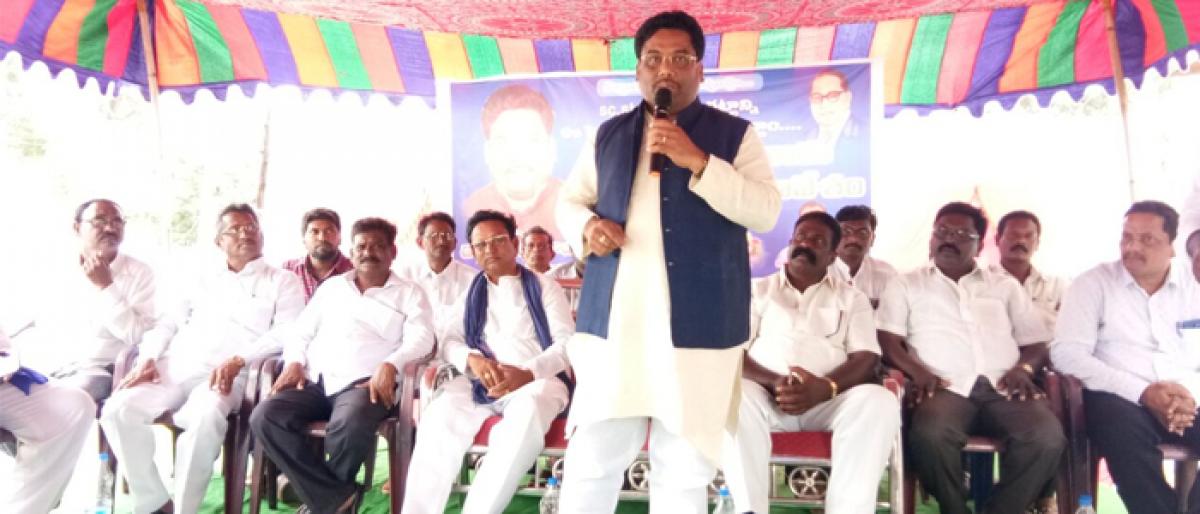


Kaviyoor Murali

Kaviyoor Murali (born March 20, 1931, died October 20, 2001) was a prominent Indian Dalit activist, writer, folklore researcher, and Ambedkarite from Kaviyoor, Tiruvalla, Pathanamthitta District, Kerala, India. Known for his dedication to preserving Dalit cultural heritage and advocating for social justice, Murali was a pivotal figure in Kerala’s Ambedkarite movement. His work bridged folklore studies with anti-caste activism, challenging Brahmanical hegemony and celebrating the egalitarian roots of pre-Aryan societies. He was a soft-spoken, scholarly figure whose contributions remain influential among Dalit activists and cultural historians in Kerala.
Born into a marginalized Dalit family, Murali faced caste-based discrimination early in life, which shaped his commitment to social reform. He studied at Kaviyoor N.S.S. School and was deeply inspired by B.R. Ambedkar, the architect of India’s Constitution and a Dalit icon. Murali’s activism focused on documenting Dalit oral traditions, rituals, and art forms like Padayani, a folk performance involving music, dance, and satire, which he argued reflected pre-caste, socialist societal structures. He passed away at age 70, leaving a legacy of cultural resistance and empowerment.
Activism and Career
Murali’s activism was rooted in Ambedkarite principles, emphasizing the annihilation of caste, Dalit emancipation, and the reclamation of marginalized histories. His career spanned writing, research, and grassroots organizing, with a focus on Kerala’s Dalit communities (historically oppressed groups like Pulaya, Paraya, and Cheramar). Key aspects include:
- Folklore Research: Murali specialized in studying Dalit folklore, particularly Padayani, a traditional art form from central Travancore. He argued that Padayani’s origins lay in pre-Aryan, egalitarian societies, predating the four-fold varna system imposed by Brahmanical Hinduism. His research highlighted how such art forms preserved Dalit resistance against caste oppression, using satire and performance to critique social hierarchies. He documented oral traditions, songs, and rituals, preserving cultural narratives often excluded from mainstream histories.
- Ambedkarite Advocacy: Inspired by Ambedkar’s call for social and political empowerment, Murali worked to mobilize Dalit communities in Kerala. He engaged with local organizations to promote education, self-respect, and resistance against untouchability and caste-based exclusion. His activism aligned with the broader Dalit movement in India, which sought to challenge systemic inequalities through cultural and intellectual assertion.
- Critique of Caste System: Murali’s writings and speeches critiqued the Brahmanical order, emphasizing the socialist and egalitarian ethos of pre-Aryan societies. He viewed Dalit cultural practices as evidence of a historical counter-narrative to caste hegemony, advocating for their recognition in Kerala’s cultural mainstream.
- Community Engagement: He was a familiar figure in Dalit and folklore circles, participating in seminars, cultural events, and activist networks. His work fostered pride in Dalit identity and inspired younger generations to engage with Ambedkarite thought.
Caste/Community Affiliation
Kaviyoor Murali belonged to the Dalit community, specifically classified as a Scheduled Caste (SC) in Kerala. Details include:
- Dalit/SC Identity: Murali was explicitly identified as a Dalit activist, with his life’s work centered on uplifting oppressed castes. In Kerala, Dalits include communities like Pulaya, Paraya, and Cheramar, historically subjected to untouchability and socio-economic marginalization. While specific sub-caste details (e.g., Pulaya or Paraya) are not explicitly mentioned in sources, his Dalit identity is unequivocal.
- Religion: Hindu, with a strong alignment to Ambedkarite ideology, which critiques ritualistic Hinduism and advocates for social reform. Many Ambedkarites, including Murali, embraced a secular-humanist interpretation of spirituality, focusing on equality over caste-based rituals.
- No Forward-Caste Affiliation: There is no evidence linking him to upper-caste or forward-caste communities (e.g., Nair, Brahmin, or Syrian Christian). His activism was explicitly anti-caste and rooted in Dalit lived experiences.
Literary and Cultural Contributions
Murali’s writings focused on Dalit folklore, Ambedkarite philosophy, and social justice. While specific book titles are less documented due to the regional and vernacular nature of his work (often published in Malayalam), his contributions include:
- Folklore Studies: Essays and research papers on Padayani and other Dalit cultural practices, emphasizing their anti-caste origins. He explored how folk arts served as subversive tools against feudal oppression.
- Ambedkarite Literature: Articles and pamphlets promoting Ambedkar’s vision of caste annihilation, education, and political empowerment. His writings were accessible, aimed at grassroots readers rather than elite academic circles.
- Cultural Preservation: By documenting oral histories and rituals, Murali ensured that Dalit traditions were preserved for future generations, countering the erasure of marginalized voices in Kerala’s cultural narrative.
His work was less commercial and more community-driven, often circulated through local Dalit organizations and folklore groups rather than mainstream publishers.
Recognition and Legacy
Kaviyoor Murali did not receive major national awards, as his work was grassroots-focused and less visible in elite circles. However, he is revered in Kerala’s Dalit and Ambedkarite communities for:
- Cultural Impact: His research on Padayani and Dalit folklore remains a reference for scholars and activists studying Kerala’s subaltern histories.
- Inspiration: Murali’s life inspired younger Dalit activists and artists, particularly in central Travancore, to engage with cultural resistance and Ambedkarite thought.
- Posthumous Recognition: After his death in 2001, his contributions were acknowledged by local organizations and folklore groups, cementing his status as a pioneer in Kerala’s Dalit movement.
No specific awards or financial estimates (e.g., net worth) are documented, reflecting his modest, community-oriented life. His legacy endures through ongoing discussions of Dalit cultural heritage in Kerala.
Context and Impact

(m. 1878–1930)
Children 5
Relatives Ayyathan Janaki Ammal
Awards Rao Sahib
This article is part of a series on
Reformation in Kerala

Background
Caste system in Kerala
Untouchability
Hindu reforms
Varna
Notable people
Ayya Vaikundar
Ayyavu Swamikal
Chattampi Swamikal
Narayana Guru
Arattupuzha Velayudha Panicker
Sahodaran Ayyappan
Ayyathan Gopalan
Vagbhatananda
Brahmananda Sivayogi
Pandit Karuppan
T. K. Madhavan
Mannathu Padmanabhan
Mosa Walsalam Sastriyar
V. T. Bhattathiripad
Swadeshabhimani
Saranjiniparinayam (musical drama)
Susheeladukham (musical drama)
Plague Farse (drama)
Keerthanaratnamala
Brahmamatham
Rammohunroy (Harikatha)
Madhaaikyam
Madhavum Guruvum
Madhavan
Aaradhanayude Randu Padikal
Brahma Madhavum Ithara Madhangalum
Jaathi
Vivaahageethangal
Jai Britannia
Yeshu Daivamayirunnuvo!
British Bharana Mahathmyam
Ente Ammayude Ormadaykk (biography of mother Kallat Chiruthammal)

Kumaran Asan - Chandalabhikshuki - a mural at Thonnakkal Asan Smarakam

Kumaran Asan - 1973 Indian postage stamp
Major works

Lahuji Raghoji Salve
The Untouchable Warrior Who Fought Caste with Muscle and Mind
Lahuji Raghoji Salve, also known as Lahuji Vastad, Lahujibuwa Mang, or Lahuji Mang, was a 19th-century Maharashtrian Dalit activist, wrestler, social reformer, educator, and proto-revolutionary. Born into the Mang caste (a Scheduled Caste classified as "untouchable"), he rose from poverty and social exclusion to become one of the earliest organized voices against Brahminical caste oppression in western India. He used physical training, education, and armed self-defense as tools to empower the oppressed, making him a direct ideological predecessor to Jyotirao Phule, Dr. B.R. Ambedkar, and the Dalit movement.
Early Life and Caste Background
| Detail | Information |
|---|---|
| Birth | 14 May 1794 (exact date per some sources; year confirmed across records) |
| Birthplace | Jeur village, near Purandar Fort, Pune district, Maharashtra |
| Parents | Father: Raghoji Salve (a traditional Mang community worker); Mother: Vithabai |
| Caste | Mang (also called Matang) – a Dalit community historically engaged in rope-making, bamboo work, village watchmen duties, and executioner roles under the Peshwa regime |
| Childhood |
| Grew up in extreme poverty; denied access to temples, wells, and schools due to untouchability As a Mang, Lahuji belonged to one of the most marginalized groups in the Peshwai (Brahmin-ruled) Maratha Confederacy. Mangs were forced to live outside village boundaries, wear spittoons around their necks, and drag thorny branches to erase their footprints—symbols of ritual pollution. |
Lahuji rejected humiliation and turned to physical strength as a form of resistance.
- Training under Muslim ustads: Learned kushti (traditional wrestling) and dand-pattha (mace & bodyweight exercises) from Muslim and Maratha trainers in Pune.
- Became "Vastad" (master wrestler): Earned the title Lahuji Vastad after defeating upper-caste wrestlers in public akhadas (arenas).
- Established gymnasiums (talims): Set up free training centers in Pune, Phaltan, and surrounding areas exclusively for Shudra and Ati-Shudra (Dalit) youth.
Revolutionary idea: Upper-caste Brahmins and Marathas dominated martial culture. Lahuji broke this monopoly by arming the untouchables with combat skills.
He trained thousands in:
- Wrestling
- Lathi-kathi (stick fighting)
- Swordsmanship
- Gymnastics
- Horse riding
His motto:
"शारीर बल हेच खरे बल""Physical strength is the only real strength."
Social Reform and Anti-Caste Activism
Lahuji was not just a wrestler—he was a systematic organizer against caste tyranny.
1. Inter-caste Unity Campaigns
- Organized joint meals (sah-bhojan) between Mahars, Mangs, and other Dalit castes.
- Promoted inter-caste marriages within oppressed groups.
- Preached: "जात तोडो, समाज जोडो" (Break caste, unite society).
2. Education for the Oppressed
- Ran night schools for working Dalit children.
- Taught reading, writing, history, and moral values.
- Used Marathi folk songs (povadas) to spread anti-caste messages.
3. Protest Against Peshwa Atrocities
- Publicly challenged Brahmin priests who barred Dalits from temples.
- Led processions to touch temple thresholds as acts of civil disobedience.
- In 1848, supported Mahar soldiers’ revolt against British-Brahmin collusion.
Role in the 1857 Revolt and Freedom Struggle
Lahuji is recognized as an early anti-colonial fighter.
- 1857 Sepoy Mutiny: Trained and mobilized Dalit and Shudra youth to support rebel leaders like Nana Saheb and Tatya Tope.
- Supplied weapons and intelligence from his talims.
- His student Vasudev Balwant Phadke later launched armed rebellion (1879) inspired by Lahuji’s ideas.
British records (Pune Archives) mention "Lahuji Mang" as a seditious influence.
Influence on Jyotirao Phule
Lahuji was Phule’s guru in activism.
- Phule met Lahuji in the 1840s in Pune.
- Adopted Lahuji’s model of physical + intellectual empowerment.
- Phule’s Satyashodhak Samaj (1873) was ideologically rooted in Lahuji’s anti-caste talims.
- Phule wrote:"लहुजींनी शूद्र-अतिशूद्रांना शरीरबळ दिले; मी त्यांना बुद्धिबळ देईन.""Lahuji gave the Shudras and Ati-Shudras physical strength; I will give them intellectual strength."
Death and Legacy
| Event | Details |
|---|---|
| Death | 17 February 1881, Pune |
| Cause | Natural causes (age 87) |
| Final Act | Donated his talim land for a school for untouchable children |
- Lahuji Vastad Garden, Pune – named in his honor.
- Statues in Pune, Phaltan, and Jeur.
- Lahuji Salve Smarak – memorial trust runs schools and gyms.
- Featured in Maharashtra school textbooks (Class 7 & 10 History).
- Celebrated annually on May 14 as Lahuji Jayanti.
Key Quotes by Lahuji
- "जो शरीराने बलवान, तोच खरा स्वतंत्र." → "Only the physically strong are truly free."
- "जातीय भेदभाव हा समाजाचा शत्रू आहे." → "Caste discrimination is the enemy of society."
- "शिका, लढा, आणि एकत्र या." → "Learn, fight, and unite."
Why Lahuji Matters Today
- First Dalit mass organizer using martial arts as resistance.
- Pioneer of affirmative action – trained the excluded to compete.
- Bridge between physical and intellectual Dalit movements.
- Symbol of self-respect – refused charity, demanded dignity.
Dr. B.R. Ambedkar indirectly acknowledged Lahuji’s legacy when he said:"We need not just pens, but also swords in the hands of the oppressed."
Further Reading
- "Lahuji Vastad" by Prof. Hari Narke (Marathi)
- "Dalit Panthers: An Authoritative History" by J.V. Pawar
- Velivada.com – Dalit history portal
- Maharashtra State Board History Textbook (Class 10)



Manjula Pradeep

Manjula Pradeep is a prominent Indian human rights activist, lawyer, and feminist leader renowned for her decades-long fight against caste-based discrimination, gender violence, and atrocities faced by Dalits, particularly Dalit women. Born into a Dalit family, she has transformed personal experiences of abuse and marginalization into a powerful advocacy for justice, empowerment, and community healing. With over 30 years in the field, Pradeep has represented Dalit issues at international forums like the United Nations and European Parliament, trained countless activists, and led high-profile legal battles. She is often described as a "community healer" who emphasizes dignity, leadership building, and systemic change.
Early Life and Education
Manjula Pradeep was born on October 6, 1969, in Vadodara, Gujarat, to an orthodox Dalit family that had migrated from Uttar Pradesh in 1968. Her childhood was marked by severe hardships: her father, disappointed at her birth (expecting a son), subjected her and her mother to physical and mental abuse. She endured sexual abuse by four men as a child and faced relentless caste discrimination at school, where peers and teachers ridiculed her as "ABC" (a slur for "Backwards Caste"). To evade prejudice, her father concealed their Dalit surname, adopting the generic "Pradeep," but this offered little protection. These experiences of intersecting caste and gender oppression profoundly influenced her path to activism.
During her undergraduate studies, a professor inspired her to pursue social work, leading her to earn a Master's degree in Social Work from Maharaja Sayajirao University of Baroda in 1990. There, she challenged the male-dominated Dalit movement and immersed herself in feminist and Dalit activism. Recognizing the limitations of grassroots work without legal recourse—sparked by a case involving a Dalit woman's son dying in police custody—she pursued a Bachelor of Laws (LL.B.) from Gujarat University in 1998.
Career and Activism
Pradeep's professional journey began in 1992 at age 21 when she joined Navsarjan Trust, one of India's largest Dalit rights organizations, as its first female employee. Starting in the legal aid program, she assisted survivors of violence and discrimination, later launching training initiatives in 1995 to combat bonded labor exploitation, primarily affecting Dalit and tribal women. She helped form the Vadodara Khet Majoor Sangathan, a union for these women, and joined Navsarjan's board the same year.
In 2000, she trained 40 women for leadership roles, culminating in a protest that popularized the slogan "Dalit Shakti" (Dalit Power). That year, she represented Dalit rights at the UN in Geneva as part of the National Campaign on Dalit Human Rights delegation. A 2002 sabbatical took her to the Swiss Agency for Development and Cooperation in New Delhi. Elected Executive Director of Navsarjan in 2004 (succeeding Martin Macwan in 2005), she prioritized anti-corruption reforms and expanded focus on gender-caste intersections.
Her activism extends globally: since 2000, she has advocated for Dalits and Dalit women at the UN, European Parliament, and other platforms. She has trained "barefoot lawyers"—Dalit women equipped with basic legal knowledge to challenge stereotypes and navigate the justice system. During the COVID-19 pandemic, she documented a surge in caste crimes and sexual violence, noting a 50% rise in reported Dalit women rape cases from 2014–2019, though many go unreported due to family stigma and police bias.
Challenges abound: systemic prejudice in courts often involves victim-shaming, with Dalit survivors questioned about upper-caste perpetrators' motives. Pradeep's philosophy stresses empowering women to lead independently, fostering self-confidence through rights education and detailed FIRs to build morale.
Key Organizations and Initiatives
- Navsarjan Trust (1992–2017): Rose from staff to Executive Director; focused on legal aid, anti-bonded labor, and women's leadership. Resigned in 2017 after the government's cancellation of the organization's FCRA license amid Gujarat's Dalit unrest.
- Dalit Human Rights Defenders Network (DHRDNet, co-founded 2018): As director of campaigns (2018–2023), she produced reports on caste crimes during COVID-19, gender violence, and pushed for a national SC/ST budget like Telangana's model.
- Wise Act of Youth Visioning and Engagement (WAYVE) Foundation (founded 2018): Empowers marginalized women and youth through leadership training in documentation, public speaking, and constitutional rights. Has trained 120 women across 12 states.
- National Council of Women Leaders (NCWL, co-founded post-2020 Hathras incident): A network of Dalit women leaders (lawyers, journalists, activists) for dignity and justice, especially amid pandemic violence.
She currently serves as national convener of NCWL and a member of the Executive Committee of the National Center for Advocacy Studies, India.
Notable Cases and Contributions
Pradeep has handled over 50 Dalit rape survivor cases, securing convictions in many. Key examples:
- 2008 Gang-Rape Case: Defended a 17-year-old Dalit girl raped by teachers; won life sentences for perpetrators in 2009.
- 2012 Lalji Sarvaiya Case: A Dalit man burnt alive; secured life imprisonment for 11 accused in 2018.
- 2016 Una Flogging Incident: Supported flogged Dalit cattle skinners (Vashram, Ramesh, Ashok, and Bechar Sarvaiya), aiding their health, court appearances, and fundraising. This sparked her conversion to Buddhism—the first in her family—followed by survivors, symbolizing rejection of caste oppression.
- Broader Impact: Advocated against the "two-finger test" in rape exams and for manual scavengers' rights. Her work emphasizes "circle of care"—being present for survivors without judgment, using tools like "river of life" exercises for healing.
Awards and Recognition
- 2011: Woman PeaceMaker Award, Joan B. Kroc Institute for Peace and Justice, University of San Diego.
- 2015: Femina Women Social Impact Award.
- 2017: Jijabai Women Achievers Award, University of Delhi.
- 2021: BBC 100 Women.
Personal Life and Philosophy
A survivor of childhood sexual abuse and caste bias, Pradeep converted to Buddhism in 2016 for its emphasis on equality. She views her role as a healer, addressing movement fractures from sub-caste and regional divides, though she admits loneliness and resource shortages. Her approach prioritizes story-sharing for trauma recovery, drawing from her "river of life" to inspire others. On X (@ManjulaHPradeep), she amplifies Dalit justice (#DalitLivesMatter), women's rights (#SavitriBaiPhuleJayanti), environmental causes (Ladakh climate fast), and violence against minorities (Manipur, Hathras).
Recent Activities (2023–2025)
As of 2025, Pradeep remains active:
- Participated in NHRC's 2025 discussion on manual scavengers' dignity.
- Honored at O.P. Jindal Global University's 2025 Ambedkar convention as NCWL convenor.
- Promoted WAYVE's women's leadership training (May 2025).
- Shared her Hindu profile on her "circle of care" (June 2025).
- Commented on Dalit youth murders in Nepal (May 2025) and Air India crash memories (July 2025).
- Earlier: Supported Ladakh's anti-industrialization movement (2024), celebrated Indian sports achievements, and rallied for Manipur rape survivors (#TribalLivesMatter, 2023).
Motiravan Kangali
Awards and honours
He has been felicitated with Karnataka Sahitya Academy Award in 2009 and Karnataka State Rajyotsava Award in 2014 for life time achievement.
List of works
His contribution to Kannada literature are listed below.
Poetry
Kondigalu mattu Mullubeligalu – 1989
Godhooli – 1993
Nanondu Maravagiddare – 1998
Chappali Mattu Nanu – 2001
Kanakambari – 2004
Matte Male Baruva Munna – 2000
Chandirana Kannu Hingalarada Hunnu – 2005 (Selected Poems)
Buddha Beladingalu – 2010
Plays
Kendamandala – 1990
Mooru Beedi Natakagalu – 2004
Bahuroopi (Poetry drama) – 2003
Mudnakudu Natakagalu – 2010
Essays
Nondavara Novu – 2002
Maathu Manthana – 2004


Meena Kandasamy

Early Life and Background
Meena Kandasamy was born into an inter-caste family, a product of a marriage in 1981 that aligned with Tamil Nadu’s anti-caste Self-Respect Movement:
- Father: Ilavenil Kandasamy, from the Andi Pandaram community, a nomadic Scheduled Tribe (ST) in Tamil Nadu, historically tied to fortune-telling and shamanism. Her grandfather was a landless witch-doctor, and her father, a PhD in Tamil literature, was the first graduate from his village near Tiruchirappalli.
- Mother: A mathematics professor at IIT Madras, from a forward caste (upper-caste Hindu) background.
- This mixed-caste heritage informs her identity, often aligned with Dalit and marginalized communities, though her exact caste status has been debated (see below).
Raised in Chennai, Kandasamy was exposed to literature and activism early, influenced by her parents’ academic environment and Tamil Nadu’s Dravidian and anti-caste political ethos. She began writing poetry at 17 and pursued higher education, earning a PhD in English from the University of Madras, focusing on feminist and caste issues.
Literary Career
Kandasamy’s work blends poetry, prose, and translation with a sharp focus on caste oppression, gender violence, and Dalit resistance. Her writing is known for its raw, provocative style and unapologetic critique of systemic inequalities.
Major Works
- Poetry:
- Touch (2006): Her debut collection, exploring caste, untouchability, and Dalit identity with visceral imagery. Published by Peacock Books, it established her as a bold voice in Indian literature.
- Ms Militancy (2010): A fiercer, feminist collection drawing on Tamil mythology and revolutionary themes to challenge patriarchy and casteism. Published by Navayana, an anti-caste publishing house.
- Her poems often reimagine historical and mythological figures (e.g., Tamil poet-saint Andal) to critique power structures.
- Novels:
- The Gypsy Goddess (2014): A fictionalized account of the 1968 Kilvenmani massacre, where 44 Dalit laborers were burned alive by landlords in Tamil Nadu. The novel experiments with form, blending oral history, satire, and political critique.
- When I Hit You: Or, A Portrait of the Writer as a Young Wife (2017): A semi-autobiographical novel about surviving domestic abuse in a short-lived marriage. It explores gendered violence and intellectual suppression, earning critical acclaim and shortlistings for awards like the Women’s Prize for Fiction.
- Translations:
- Kandasamy has translated works by Tamil Eelam poets and Dravidian leaders, including The Fire This Time: A Selection of Tamil Eelam Poetry (2006) and speeches by Periyar E.V. Ramasamy, a pioneer of the Self-Respect Movement.
- Her translations bridge Tamil political literature with global audiences, emphasizing anti-caste and liberation struggles.
- Other Writings:
- Essays and columns in outlets like The Hindu, The Guardian, and Al Jazeera, addressing caste, feminism, and Indian politics.
- Edited The Dalit, a magazine focused on Dalit issues, amplifying marginalized voices.
Themes and Style
Kandasamy’s work centers on:
- Caste and Dalit Identity: She exposes the brutality of caste oppression, drawing from historical events like Kilvenmani and personal ties to Dalit struggles.
- Feminism: Her writing challenges patriarchal norms, from domestic violence to literary gatekeeping, often through a Dalit feminist lens.
- Language and Form: She experiments with structure, blending poetry, prose, and polemic, using Tamil rhythms and English fluency to subvert traditional literary norms.
- Activism in Art: Her literature is inseparable from her activism, aiming to provoke and mobilize against social injustice.
Activism
Kandasamy’s activism is rooted in anti-caste and feminist principles, often intersecting with global human rights issues:
- Anti-Caste Advocacy: She collaborates with Dalit movements, speaking at forums like the United Nations and Indian universities on caste-based discrimination. Her work with Navayana and The Dalit magazine amplifies Dalit voices.
- Feminism and Gender Justice: Her novel When I Hit You and public talks address domestic violence and women’s autonomy, resonating with #MeToo and global feminist movements.
- Political Engagement: She critiques Brahmanical hegemony, Hindu nationalism, and state violence, notably in Tamil Nadu and Kashmir. Her translations of Tamil Eelam poetry reflect solidarity with oppressed groups.
- Public Persona: Known for fiery speeches and social media presence (especially on X), she engages directly with critics and supporters, often facing online harassment for her outspoken views.
Controversies
Kandasamy’s caste identity has sparked debate:
- In 2020, her ex-husband, whom she accused of domestic abuse, publicly claimed she misrepresented herself as Dalit for activist credibility, alleging her mother’s forward-caste status and her father’s OBC or ST status disqualify her from Scheduled Caste (SC) identity. Critics on X and other platforms have echoed this, accusing her of appropriating Dalit identity.
- Kandasamy has not explicitly clarified her legal caste status but aligns with Dalit and anti-caste movements, emphasizing lived experience and solidarity over rigid labels. In India, children of inter-caste marriages often inherit the father’s caste for affirmative action, which would place her in the Andi Pandaram (ST) category.
- The controversy reflects broader tensions in Dalit politics about authenticity, representation, and who can claim marginalized identities.
Personal Life
- Marriage and Divorce: Kandasamy married in 2012, but the marriage ended in 2014 amid allegations of domestic abuse, which inspired When I Hit You. The public fallout, including her ex-husband’s accusations, intensified scrutiny of her identity.
- Academic and Global Presence: She has lived in India and the UK, holding fellowships at institutions like the University of Iowa and Newcastle University. She remains active in global literary and activist circles.
- Family Influence: Her parents’ academic backgrounds and her father’s journey from a marginalized community shaped her worldview. She often credits Tamil Nadu’s Dravidian ethos for her political consciousness.
Recognition and Impact
- Awards and Nominations:
- Shortlisted for the Women’s Prize for Fiction (2018) for When I Hit You.
- Received fellowships and residencies for her literary and activist work.
- Cultural Influence: Kandasamy is a leading voice in contemporary Indian literature, bridging Dalit feminism with global audiences. Her work is studied in universities and cited in anti-caste and feminist scholarship.
- Criticism: Some critics argue her experimental style can alienate readers, while others praise its innovation. Her outspokenness draws both admiration and backlash, particularly from casteist and patriarchal groups.
Accessing Her Work
- Books: Available through publishers like Navayana, Atlantic Books, and Penguin India.
- Online Presence: Kandasamy is active on X (@meenakandasamy), where she shares updates on her writing, activism, and political views. Her posts often critique Indian politics and amplify marginalized voices.
- Public Talks: She frequently speaks at literary festivals, universities, and activist forums, with recordings available on platforms like YouTube.
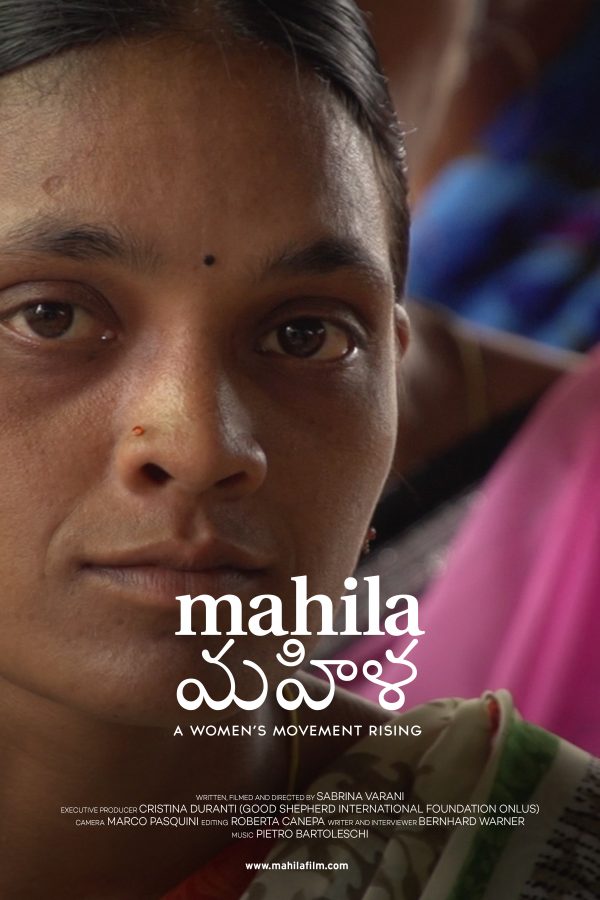
Moorkoth Kumaran

Moorkoth Kumaran
Moorkoth Kumaran (1874–1941) was a social reformer ,a teacher and a prominent short story writer in Malayalam.

From Wikipedia, the free encyclopedia
Manik Chand Jatav-vir was a Dalit activist and Member of 1st Lok Sabha from Sawai Madhopur, Rajasthan.
Biography
Malti Devi
The struggle of Marimuthu Bharathan against oppression of Dalits in India
Dalits higher on EU agenda




Nanak Chand Rattu
Nanak Chand Rattu (February 6, 1922 – 2002) was a prominent Indian activist, writer, and close confidant of Dr. B.R. Ambedkar, the architect of the Indian Constitution and a towering figure in the Dalit rights movement. Born into a Dalit family in the village of Sakruli, Hoshiarpur District, Punjab—considered "untouchable" under the rigid caste system of the time—Rattu's life exemplified the struggles and resilience of the marginalized communities Ambedkar championed. He migrated to Delhi in search of employment and rose from a government clerk to become Ambedkar's personal secretary, factotum, and unwavering supporter, playing a pivotal role in the leader's later years.
Early Life and Entry into Ambedkar's Circle
Rattu's journey to activism was deeply intertwined with Ambedkar's mission against caste discrimination. As a young man in the 1940s, he worked in government service and frequently visited Ambedkar's official residences in Delhi (first at 22 Prithviraj Road, then 1 Hardinge Avenue) during Ambedkar's tenure as India's first Minister of Law and Justice in Jawaharlal Nehru's cabinet (1947–1951). Their shared Dalit background forged a bond, and Rattu's admiration for Ambedkar's fight for social justice led him to offer his services.
In September 1951, after Ambedkar resigned from the cabinet over disagreements regarding the Hindu Code Bill—a progressive reform aimed at women's rights and challenging orthodox Hindu laws—Rattu stepped in as his full-time secretary. Lacking official support post-resignation, Ambedkar relied on Rattu's dedication. Rattu typed and organized much of Ambedkar's prolific writings, including key manuscripts like The Buddha and His Dhamma (Ambedkar's seminal work on Buddhism, published posthumously in 1957) and Riddles in Hinduism (a critique of Hindu scriptures, released in 1987). This behind-the-scenes labor was crucial, as Ambedkar dictated ideas late into the night, and Rattu ensured they were preserved amid Ambedkar's demanding schedule of public speeches, legal battles, and political organizing.
Activism and Support During Ambedkar's Final Years
Rattu's activism extended beyond administrative duties; he was a quiet but steadfast participant in Ambedkar's broader movement for Dalit emancipation, conversion to Buddhism, and constitutional equality. He accompanied Ambedkar during his 1956 mass conversion to Buddhism in Nagpur, a historic event that drew over 500,000 followers and symbolized rejection of caste Hinduism. Rattu helped manage logistics and documented the event, embodying Ambedkar's call to "Educate, Agitate, Organize."
After Ambedkar's death on December 6, 1956, Rattu remained loyal to his legacy. He assisted Ambedkar's second wife, Savita Ambedkar (née Sharda Kabir), in preserving the leader's papers and personal effects. When heavy rains in 1967 damaged many documents stored at their Alipur Road home in Delhi (after it was sold due to a court order), Rattu personally salvaged what he could, dusting and fumigating the remnants. He even sheltered Savita at his own home for months during this turbulent period and later aided her relocation to Mumbai, maintaining contact through letters. This post-Ambedkar work highlighted Rattu's commitment to the Dalit cause, ensuring Ambedkar's intellectual contributions endured despite institutional neglect.
Literary Contributions and Legacy
In the 1990s, Rattu channeled his experiences into authorship, becoming a vital chronicler of Ambedkar's life. His books, often based on personal reminiscences, provided intimate insights into the leader's thoughts, struggles, and triumphs. Key works include:
| Book Title | Publication Year (Approx.) | Description |
|---|---|---|
| Last Few Years of Dr. Ambedkar | 1995 | A detailed account of Ambedkar's final days, health battles, and unfinished projects. |
| Reminiscences and Remembrances of Dr. B.R. Ambedkar | 1995 | Personal anecdotes from Rattu's time as secretary, covering Ambedkar's interactions with figures like Gandhi and Nehru. |
| The Last Days of Dr. Ambedkar (alternative title/variant) | 1990s | Focuses on Ambedkar's conversion to Buddhism and philosophical evolution. |
| Little Known Facets of Dr. Ambedkar | 1990s | Explores lesser-known aspects of Ambedkar's personality and activism. |
These Hindi and English publications, available through publishers like Samyak Prakashan, have been instrumental in Ambedkarite literature, inspiring generations of activists. Rattu's writings emphasize Ambedkar's humanism, his advocacy for women's rights, labor reforms, and annihilation of caste—core tenets of Dalit activism.




दूध में कांच मिला पिलाया था स्वामी दयानंद सरस्वती को
नन्ही वेश्या ने दूध में कांच मिला पिलाया था स्वामी दयानंद सरस्वती को
SUNIL CHOUDHARY

Nidhin Shobhana is an Indian activist, artist, researcher, and scholar known for his significant contributions to Ambedkarite discourse and anti-caste activism. Based primarily in Kolkata, India, he is recognized for his critical illustrations, academic writings, and public engagements that challenge caste oppression, Brahmanical hegemony, and social inequalities in India. Below is a detailed overview of his background, work, and contributions based on available information.
Background
- Location: Nidhin Shobhana resides in Kolkata, India.
- Education and Professional Role: He is an independent researcher with interests in sociology, as indicated by his profile on Academia.edu, where he has 67 followers, 8 following, and 6 research papers. He has also served as an Associate Program Coordinator at the National Campaign on Dalit Human Rights (NCDHR), a prominent organization advocating for Dalit rights.
- Personal Details: Notably, Nidhin Shobhana is described as not being active on Facebook, suggesting a preference for engaging through other platforms or offline mediums. His birthday is on September 5, as noted in a tribute by Dr. Dhammasangini Ramagorakh.
Activism and Contributions
Nidhin Shobhana’s activism centers on promoting Ambedkarite principles, which draw from the philosophy of Dr. B.R. Ambedkar, a key figure in India’s anti-caste movement and the architect of the Indian Constitution. His work spans art, writing, and public speaking, focusing on caste, gender, and social justice.
1. Illustrations and Artistic Work
- Ambedkarite Art: Nidhin is celebrated for his powerful illustrations that critique caste oppression and Brahmanical fascism while promoting an Ambedkarite vision of equality and justice. His drawings are described as emotionally resonant, offering an optimistic path forward and depicting figures like Phule, Ambedkar, Savitri, and Fatima as symbols of resistance and hope.
- Book Covers: He has designed cover pages for books on Dalit discourse published by The Shared Mirror Publishing House, a platform dedicated to amplifying marginalized voices. His illustrations address themes like finding stability in an unstable socio-political environment dominated by Hindutva ideologies.
- Critical Commentary: His artwork critiques specific socio-political issues, such as:
- The concept of a “Dominant Dalit” proposed by Prof. Badri Narayan, which he challenges as a narrative supporting BJP’s political agenda.
- The 10% reservation for Savarnas (upper castes), depicted as an imposition on democratic institutions like Parliament.
- The burden on OBC women in cow-herding communities, illustrated to highlight how their labor is exploited under the guise of cultural reverence for cows, in collaboration with his wife, Asha, who has written on this topic.
2. Academic and Written Contributions
- Research on Caste in Universities: Nidhin has written extensively on caste dynamics in Indian higher education, particularly focusing on Jawaharlal Nehru University (JNU). In his article, In the Name of the Nation: Historicizing Caste in Indian Universities, he examines how universities, often seen as spaces of democracy and knowledge production, perpetuate caste inequalities. He highlights the lack of representation of SC/ST/OBC faculty at JNU, citing data from 2013 showing significant vacancies in reserved teaching posts:
- SC: 23 Professor, 34 Associate Professor, 11 Assistant Professor vacancies.
- ST: 10 Professor, 15 Associate Professor, 3 Assistant Professor vacancies.
- OBC: 10 Assistant Professor vacancies, with no reservations adopted for higher posts.
- He notes the predominance of Brahmin-Savarna surnames among JNU faculty, underscoring systemic casteism.
- Critique of Reservation Policies: His work critiques the failure of institutions like JNU to implement mandated reservations for marginalized communities, pointing out that even after years of policy adoption, vacancies remain unfilled, and Dalit representation is often limited to lower-tier roles like safai karamcharis (sanitation workers).
- Translations and Collaborations: Nidhin has contributed as a translator, notably for a review of Dr. Sharmila Rege’s work on her first death anniversary, published in the Marathi magazine Miloon Saarya Jani. This translation, done with Minakshee Rode, reflects his engagement with feminist and anti-caste scholarship.
3. Public Speaking and Events
- Talks and Lectures: Nidhin has been a speaker at various platforms, including:
- A session on Hatred in the Belly: Politics Behind the Appropriation of Dr. Ambedkar’s Writings at Miranda House, Delhi University, organized by The Shared Mirror Publishing House. This talk critiqued the appropriation of Ambedkar’s Annihilation of Caste by mainstream narratives, particularly the Navayana edition with an introduction by Arundhati Roy.
- A presentation on the history of Indian universities organized by the Dalit Bahujan Adivasi Collective at Ambedkar University, Delhi, analyzing caste dynamics in higher education.
- A session on the “Intersectionalities of Caste and Gender” at Miranda House, conducted by NCDHR, focusing on how caste and gender operate in higher educational institutions.
- Engagement with Ambedkarite Thought: His talks emphasize the radical legacy of Ambedkarite thought, resisting attempts by both left and right political spectrums to dilute or appropriate it.
4. Key Themes in His Work
- Anti-Caste Advocacy: Nidhin’s work consistently challenges Brahmanical hegemony and the marginalization of Dalit-Bahujan communities. He critiques the socio-political structures that perpetuate casteism, such as reservation policy failures and the appropriation of Ambedkar’s legacy.
- Intersectionality: He addresses the intersections of caste, gender, and labor, as seen in his and his wife Asha’s work on the exploitation of OBC women in cow-herding communities.
- Ambedkarite Utopia: His illustrations and writings promote an optimistic vision of an egalitarian society inspired by Ambedkar, Phule, and other anti-caste icons, avoiding themes of despair and instead emphasizing knowledge, compassion, and resistance.
- Critique of Hindutva: His art and writings critique the rise of Hindutva (Hindu nationalism) and its impact on marginalized communities, depicting it as a force that destabilizes social justice efforts.
Notable Publications and Affiliations
- The Shared Mirror Publishing House: Nidhin is closely associated with this publisher, which focuses on Dalit-Bahujan literature. He has contributed illustrations for their books and participated in their events, such as the talk on Hatred in the Belly.
- Round Table India: He is a frequent contributor to Round Table India, a platform for Ambedkarite discourse, where his articles and illustrations are published.
- National Campaign on Dalit Human Rights (NCDHR): His role as an Associate Program Coordinator involved advocacy for Dalit rights and social justice in educational institutions.
- Sanghamitra: Nidhin is featured as an artist on Sanghamitra, a business incubator platform that highlights socially conscious creative work.
Personal and Collaborative Work
- Collaboration with Asha: His wife, Asha, is also an activist and writer who has contributed to critiques of caste and gender, particularly on the exploitation of OBC women in Bihar’s cow-herding communities. Their collaborative work strengthens the intersectional focus of their activism.
- Influence of John Berger: Nidhin draws inspiration from the art critic John Berger, quoting “Every Image embodies a way of seeing” to frame his approach to illustrations as a tool for social critique and transformation.
Other Engagements
- Wikipedia Contribution: Nidhin has been a Wikipedia member since September 11, 2014, indicating his involvement in knowledge dissemination.
- Media Contributions: He has written for platforms like SabrangIndia (on topics like child survival rankings) and The Companion, further extending his reach in public discourse.
Limitations and Notes
- Caste Identity: As noted in the previous response, there is no explicit information confirming Nidhin Shobhana’s caste. His work aligns with Dalit-Bahujan causes, but personal caste details are not disclosed in the sources, which is common among anti-caste activists to emphasize collective struggle over individual identity.
- Critical Perspective: Nidhin’s work critically examines the establishment narrative, particularly around caste and reservation policies, aligning with the instruction to question mainstream narratives. His critiques of JNU’s faculty composition and reservation failures reflect this approach.
- Data Gaps: Some sources provide limited information, and further details about his personal life, early education, or complete body of work are not fully covered in the references. If you have specific aspects you want explored (e.g., particular articles or events), please let me know!
Conclusion
Nidhin Shobhana is a multifaceted figure in India’s anti-caste movement, blending art, scholarship, and activism to challenge systemic inequalities. His illustrations and writings, rooted in Ambedkarite principles, offer both a critique of caste oppression and a hopeful vision for an egalitarian society. Through his work with organizations like NCDHR and The Shared Mirror, and platforms like Round Table India, he continues to inspire and mobilize efforts toward social justice.
Narayana Guru

Narayana Guru
Written by Harshkumar Kugwe
Published on 17 March 2019
Harshkumar Kugwe

In human species
a Brahmin is born
a Paraiah also is born. So, where is the caste difference
among human lives?
In the womb of a Paraiah woman
was born the great sage Parashara.
The secret of Vedas
were uttered in small couplets
by the son of a daughter of a fisherman.
So, in the human species
between people and people
where is the difference?
only Illusory difference
The original Kannada article was published on Round Table India in September 2018 and this translation to English is done by Swarna Kumar BA.
 https://roundtableindia.co.in/index.php?option=com_content&view=article&id=9609:life-and-social-philosophy-of-his-divine-holiness-narayana-guru&catid=119:feature&Itemid=132
https://roundtableindia.co.in/index.php?option=com_content&view=article&id=9609:life-and-social-philosophy-of-his-divine-holiness-narayana-guru&catid=119:feature&Itemid=132
The women of today, despite their education, wealth, sophisticated knowledge, dignified relatives and a comfortable life, behave in a very conventional and backward manner, even worse than rustic girls and this causes us pain. How can there be human dignity in the children that are born to these women and brought up by them?
Our women should change from considering themselves as slaves by birth.
Women! Be brave! If you change, it is easy for your husbands and other men to change. Men throw the blame on you, saying that you are backward. Do not subject yourselves to that accusation. In future, instead of your being described, ‘she is so-and-so’s wife’, your husband must be described, ‘so-and-so is the husband of this lady’!
Women who are pampered by their husbands and who succumb to the craze for jewellery and apparel and to the appeal of feminine beauty and fashions, and those that are rich and proud, will be satisfied with their slavish existence, and they will not serve to reform the world .
Despite there being a Goddess of Learning and a Goddess of Wealth in Hindu religion, why do they not grant women their education and right to property?
Among the many reasons for the subjugation of women, the most important one is that they lack the right to property.
The tyranny of the male is the only reason for the absence of a separate world in our languages for describing the ‘Chastity’ of men.
The cruelty perpetuated in the name of chastity that a wife should put up with even the brutal act of the husband should be abolished.
If a woman can not have the right to property and the liberty to love whomsoever she chooses, what is she but a rubber-doll for the selfish use of man?
To insist that chastity is only for women and should not be insisted upon for men, is a philosophy based on individual ownership; the view that women is the property of the male determines the current status of a wife.
If our literature has all been written for the sake of justice and disciplined conduct, then, should not all the conditions imposed on women be applied to men too?
In this world, qualities like freedom and courage have been claimed solely as ‘masculine’. Men have concluded that these characterized the ‘superiority of the male’.
As long as male superiority survives in the world, the subjugation of women will continue. Until women put an end to the principle of male domination, it is certain that they will have no freedom.
To give man freedom of sexual selection, and to permit him to take as many wives as he likes, gives rise to promiscuity.
Others advocate birth-control, with a view to preserving the health of women and conserving family property; but we advocate it for the liberation of women.
If a man has the right to claim a woman, then women also should have the right to claim a man. If conditions are imposed for the worship of man by woman, let there be conditions imposed for the worship of woman by man.
Men’s ‘endeavour’ for the emancipation of women only perpetuates woman’s slavery and hampers their emancipation. The pretence of men that they respect women and that they strive for their freedom is only a ruse to deceive women. Have you ever seen anywhere a jackal freeing the hen and the lamp, or the cat freeing the rats, or the capitalists freeing the workers?
Do not train women for doing such slavish work as attending to household chores; decorating the floors; making cow-dung pats, washing utensils; group dancing ( Kummi ) and dancing with batons (Kolattam).
On Politics
If there is no ‘high’ or ‘low’ by birth or by riches, there will also be no ‘high’ or ‘low’ among the rulers and the ruled. This is the apprehension of kings.
Members of the Assembly should consider the Government as a structure for social good, and as a true spokesman and representative of the people, and not as a means for power, or for occupying positions of honour.
The prevalent desire for the existence of a political administration to look after the good of the people is because the rich should not tyrannize over the poor, the bad should not disturb the good or the meek, and the hardy chieftains should not rob the common folk.
For a proper conduct of the administration, the administrators themselves should be honest. There should be a rule that those who break law and order, should be declared unfit for administration and be disqualified from contesting elections.
Only those who want to earn wealth by hook or crook become dignitaries, and only those who want to destroy socialism by any means are in the limelight. Such people should be prevented by law from finding a place in politics and in democratic rule and administration.
Politics does not concern itself with who should rule us. It is about what kind of rule people should have.
A nation or a society is governed in the interest of the welfare of the people of the land, and not the welfare of the administrator.
A Government that tries to transfer its own responsibilities to the people or their representatives is guilty of shirking its obligations, and evading its duties.
Whatever form of politics is introduced today in our country, it should be conducive to the creation of social equality and unity.
I would not call the rule of even a hideous brute a greater indignity or drawback, over a people who read with pious reverence the tale in the Ramayana that our lands was administered for 14 years by a pair of sandals.
Whether man or animal be ruling, my concern is only about the principles, the kind of administration and the benefits that the people derive.
The duty of officers is that they should serve the people honesty and impartially, and conduct themselves with sympathy and understanding.
As long as the rich and the poor exist, practices like bribery and beggary will never cease.
Only when the principle of capitalism goes, and communism comes into being, can corruption be put an end to. Without that, talking about the abolition of corruption is equivalent to preaching the laws of Manu.
A democratic life is that which should prevail among cultured people.
A revolution is that which destroys and changes from the base. Therefore, this society should bring about very drastic changes in the spheres of politics and religion.
The rule of the people is the true principle of democracy. There should be intelligent, and reasonably honest and disciplined people for such a ‘democracy’
Rightly or wrongly, there obtains in India a democratic rule. But party-rule makes a mockery of it. On seeing this, what will people of other nations think? Should not democrats be ashamed?
Everyone has the right to refute any opinion of any other person. But no one has the right to prevent the expression of that opinion.
Rivalry should last only till the election. Once it is over, both the ruling and opposition members should join hands to carry on the affairs of the Government. Only then some good can be done for the people.
None can declare that a country has secured political freedom unless it has achieved social reform and social unity.
Politics is a means to end social evils. Society does not need Politics that has no bearing on social work.
The real service through politics is to serve society.
If genuine Politics is to flourish, human qualities should be fostered. There should be discipline and honesty. People should feel the need for showing compassion to others.
If the Administration is not able to function properly, owing to party squabbles and agitations, it is only the people who will suffer.
Those who contrive to acquire money, fame and position through politics, are like a wasting disease of society.
People should contemplate whether our society is fit for freedom or democracy, in the context of frequent floor-crossings, plots to topple ministries, and the occurrence of lawlessness.’
Source – Periyar.Org
 इसी तरह सन 1952 के प्रथम आम चुनाव में शेड्यूल्ड कास्ट फेडरेशन ने कुल 34 स्थानों से चुनाव लड़ा था। इस चुनाव में करीमनगर से एम आर कृष्णा और सोलापुर (महाराष्ट्र ) से पी एन राजभोज ने अपनी एतिहासिक जीत दर्ज कराई थी ।
इसी तरह सन 1952 के प्रथम आम चुनाव में शेड्यूल्ड कास्ट फेडरेशन ने कुल 34 स्थानों से चुनाव लड़ा था। इस चुनाव में करीमनगर से एम आर कृष्णा और सोलापुर (महाराष्ट्र ) से पी एन राजभोज ने अपनी एतिहासिक जीत दर्ज कराई थी ।Although she was illiterate, Phoolan composed her autobiography entitled The Bandit Queen of India: An Indian Woman's Amazing Journey From Peasant to International Legend, with the help of international authors Marie-Therese Cuny and Paul Rambali.
पारी कुपार लिंगो




P. Sivakami
Early Life: Roots in Perambalur's Dalit Struggle
- Birth and Family: Born in Perambalur, a small town in Tamil Nadu (elevated to district status in 2007), Sivakami hails from a Paraiyar (Dalit/Scheduled Caste) family—historically marginalized as drummers, agricultural laborers, and sanitation workers, subjected to untouchability and economic exploitation. Her father, M. Palanimuthu, was an independent MLA from a Dalit background, instilling in her a sense of political awareness amid rural caste violence. Her mother (name not widely documented) supported the family's modest life, where Sivakami witnessed the "double marginalization" of Dalit women—oppressed by upper castes externally and patriarchy within.
- Education Amid Adversity: She began primary schooling at a government Adi-Dravidar (Dalit) welfare school for Scheduled Castes and tribes, a segregated space reflecting systemic exclusion. Later, she attended St. Mary's Missionary School, excelling despite barriers. Her academic prowess led to a degree in Tamil literature from Madras University, fueling her literary ambitions. In interviews, she recalls how caste shaped her worldview: "Caste and gender are inextricably linked; controlling women's bodies safeguards the caste system."
Sivakami's early exposure to the 1989 Bodinayakanoor riots—clashes between Dalit Pallars and upper-caste Thevars—ignited her commitment to intersectional resistance, blending Ambedkarite anti-casteism with feminist critique.
Bureaucratic Career: Serving the Marginalized (1980–2008)
- IAS Journey: Clearing the UPSC in 1980, Sivakami became one of the few Dalit women in the Tamil Nadu cadre. She served 28 years, rising to key roles like Secretary of the Adi-Dravidar Welfare Department, where she championed Dalit education, land reforms, and atrocity prevention. Her tenure exposed her to systemic failures: police reluctance to invoke SC/ST (Prevention of Atrocities) Act, as she alleged in 2023 regarding Tirunelveli cases.
- Voluntary Retirement: In 2008, disillusioned by bureaucratic red tape, she quit to "serve the poor and disadvantaged" directly—transitioning from policy-maker to activist. This shift marked her evolution into a full-time advocate for Dalits, tribals, transgender communities, and women.
Literary Legacy: Pioneering Dalit-Feminist Narratives
Sivakami's writing, predominantly in Tamil, is semi-autobiographical and colloquial, capturing rural Dalit idioms shunned by mainstream literature. She rejects the "Dalit writer" label as limiting, insisting: "Only Dalits can authentically depict their issues, and only women can tackle feminist ones." Her works have been prescribed in universities and translated globally, influencing a generation of subaltern voices.
| Work (Tamil/English) | Year | Themes | Impact |
|---|---|---|---|
| Pazhaiyana Kazhidalum / The Grip of Change (self-translated) | 1989 | Dalit widow's fight against caste patriarchy; village economy's links to hierarchy | First Tamil novel by a Dalit woman; BBC's top 5 Indian novels; critiques intra-Dalit gender oppression |
| Aanandayee / The Taming of Women (trans. Pritham K. Chakravarthy) | 1994 | Violent subjugation of Dalit women | Penguin publication; exposes emotional/physical abuse |
| Kurukku Vettu / Cross Section (Sahitya Akademi) | 1999 | Intersections of caste, class, and gender | Highlights Dalit resilience amid violence |
| Nalum Thodarum | 2002 | Ongoing Dalit struggles | Explores psychological turmoil |
| Kadaisi Mandhar | 2013 | Marginalized women's agency | Focuses on transgender and tribal rights |
| Kadhavadaippu (Poetry) | 2011 | Resistance and self-critique | First poetry collection; feminist introspection
|
- Over 60 Short Stories and Essays: Collections like those in Puthiya Kodangi (magazine she edits since 1995) nurture emerging Dalit writers, shifting her focus from "literature to living characters."
- Translation Politics: She self-translated her debut to preserve authenticity, noting English amplifies Dalit voices globally but risks sanitization.
Her oeuvre has sparked debates on Tamil literature's growing receptivity to Dalit-feminist themes, with influences from Bama and Imayam.
Activism and Political Foray: From Grassroots to Party Founder
- Key Movements: Post-retirement, Sivakami founded the Dalit Land Rights Movement, advocating for equitable resource distribution. She critiques religious fundamentalism's toll on Dalits and pushes for self-critique in political circles. In 2023, she slammed Tamil Nadu police for compromising Dalit victims in atrocity cases.
- Political Ventures: Briefly with Bahujan Samaj Party, she launched Samuga Samathuva Padai (Army for Social Equality) in 2009, drawing from Ambedkar's egalitarianism to promote Dalit unity and women's rights. Though short-lived, it amplified subaltern demands.
- Media Presence: Active on X (@sivakami_p), she engages in real-time advocacy, from caste violence to literary resistance. A 2025 documentary highlights her IAS-to-activist arc.
Awards, Recognition, and Legacy (as of November 2025)
- Verchol Dalit Literary Award (April 2025, Neelam Cultural Centre): For her "fearless voice" in Dalit narratives.
- Sahitya Akademi Advisory Member: Oversaw promotions of diverse literatures.
- Global Impact: Works studied in translation programs; featured in Harvard's South Asia Institute (2023).
Sivakami's legacy lies in humanizing Dalit women—"treated worse than animals"—through literature and action, fostering a Tamil canon where caste and gender "rightfully take the spotlight." As she reflects: "Dominance in any form must be opposed." Her journey—from Perambalur's margins to national discourse—inspires ongoing battles against inequality. Jai Bhim to this unyielding warrior!

PANDIT AYOTHIDASAR
 Image Source: Bharat Discovery
Image Source: Bharat Discovery Image Source: National India News
Image Source: National India NewsRenukamma
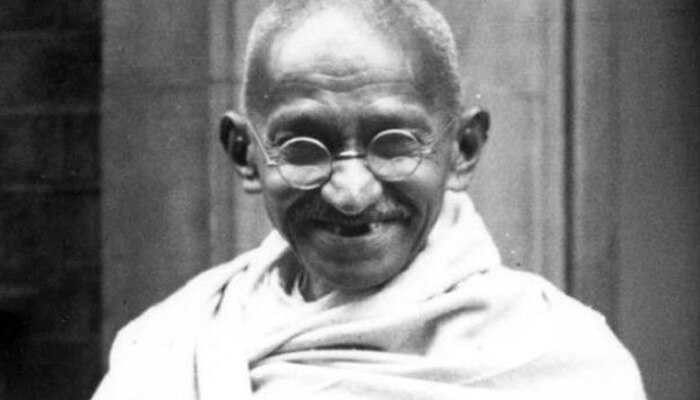

Ram Puniyani, born on August 25, 1945, is an Indian author, activist, and former professor of biomedical engineering at the Indian Institute of Technology (IIT) Bombay, where he also served as a senior medical officer. His career at IIT spanned 27 years, from 1977 until his voluntary retirement in December 2004, after which he dedicated himself to promoting communal harmony and human rights in India. Below is a comprehensive overview of his life, career, activism, and contributions, based on available information.
Early Life
- Birth and Background: Born on August 25, 1945, in India, Puniyani pursued a career in biomedical engineering, a field combining medical science and engineering principles.
- Academic Career: He joined IIT Bombay in 1977, initially as a senior medical officer, and later became a professor of biomedical engineering. His academic work focused on clinical hemorheology, the study of blood flow and its properties, which led to publications like Clinical Hemorheology: New Horizons (1996) and Applied Clinical Hemorheology (1998).
Activism and Advocacy
After retiring from IIT Bombay in 2004, Puniyani shifted his focus to social activism, particularly addressing issues of communalism, secularism, and human rights in India. His work centers on countering Hindu nationalism, promoting rationalist thought, and fostering communal harmony. Key aspects of his activism include:
- Human Rights and Communal Harmony: Puniyani has been involved in human rights initiatives for over two decades, advocating for the rights of minorities, Dalits, Adivasis, and women. He is associated with organizations like the Centre for Study of Society and Secularism (CSSS), where he serves as the President of the Executive Council, and is an advisory board member of the Muslim Mirror.
- Opposition to Hindu Nationalism: He has been a vocal critic of Hindu fundamentalism and the Rashtriya Swayamsevak Sangh (RSS) and its affiliates, which he accuses of promoting divisive communal politics. His writings and lectures often analyze the impact of communalism on Indian society, particularly its effects on religious minorities.
- Public Engagement: Puniyani conducts seminars and workshops on topics like communal politics, secularism, the Uniform Civil Code debate, the Partition of India, and the Kashmir conflict. His articles and essays appear in Indian magazines and newspapers, and he runs a fortnightly e-bulletin, Issues in Secular Politics. He also maintains a YouTube channel to discuss Indian politics and social issues.
- Investigations and Tribunals: He has participated in investigations into human rights violations, including serving on an Indian People’s Tribunal examining minority rights violations in Odisha and Madhya Pradesh.
Publications
Puniyani is a prolific writer, having authored and edited numerous books on communalism, secularism, and social justice. His works often aim to debunk myths propagated by communal forces and promote a secular, democratic ethos. Some of his notable publications include:
- Clinical Hemorheology: New Horizons (1996)
- The Other Cheek: Minorities under Threat (2000)
- Communal Politics: Facts Versus Myths (2003)
- Communalism: Illustrated Primer (2004)
- Fascism of Sangh Parivar (2004)
- Religion, Power and Violence: Expression of Politics in Contemporary Times (2005)
- Contours of Hindu Rashtra: Hindutva, Sangh Parivar and Contemporary Politics (2006)
- Terrorism: Facts versus Myths (2007)
- Communalism Explained! A Graphic Account (2011)
- Muslims in Indian Democracy (2013)
- Caste and Communalism (2011)
His books often combine scholarly analysis with accessible formats, such as graphic accounts, to reach a broader audience.
Awards and Recognition
Puniyani’s contributions to social awareness and communal harmony have been recognized with several awards:
- Maharashtra Foundation (US) Award for Social Awareness about the Threat of Communal Politics (2002)
- Fr. Machio Memorial Foundation Humanitarian Award (2005)
- National Communal Harmony Award (2007)
- NCHRO’s Mukundan C. Menon Award (2015)
Controversies and Threats
Puniyani’s outspoken criticism of Hindu nationalism has made him a target of threats and intimidation:
- In March 2019, individuals claiming to be from the CID visited his home under false pretenses, inquiring about his family and past affiliations. He filed a First Information Report (FIR) with the Mumbai Police, but no action was taken.
- On June 6, 2019, he received threatening phone calls from unidentified individuals demanding he cease his “anti-Hindutva” activities and leave India within 15 days. Following these threats, he filed another FIR and was granted 24-hour police protection until the investigation concluded.
- On X, some users have accused him of spreading misinformation, particularly regarding historical narratives about Mughal rulers like Aurangzeb and the destruction of Hindu temples. For instance, posts on X have criticized him for allegedly whitewashing Mughal actions and citing unreliable sources in discussions on platforms like Kunal Kamra’s show. However, these claims are debated and lack conclusive evidence, reflecting polarized sentiments rather than verified facts.
Ideology
Puniyani’s work emphasizes the importance of secularism, pluralism, and fraternity for India’s democracy. He argues that communal politics, driven by the absence of land reforms, secularization, and the influence of religious clergy, has fueled division in Indian society. He has critiqued the RSS and its affiliates for promoting a Hindu Rashtra agenda, which he believes undermines India’s constitutional values of liberty, equality, and justice.
- He has highlighted the role of misinformation, such as narratives around the Ram Temple and Babri Masjid, in fueling communal violence.
- He advocates for the dissemination of historical documents, like Jawaharlal Nehru’s letters to chief ministers, to counter distorted narratives about India’s secular leaders.
- Puniyani believes that the rise of communal forces has been exacerbated by the failure of secular parties like Congress to effectively counter RSS-driven narratives and promote mass education on democratic values.
Online Presence
- Website: Puniyani maintains a personal website, rampuniyani.in, where he shares his writings and updates on his work.
- YouTube: His official YouTube channel provides insights into Indian politics and social issues, making his ideas accessible to a digital audience.
- LinkedIn: He is active on LinkedIn, identifying as a professor, historian, and YouTuber, with over 500 connections.
- Media Contributions: His articles are regularly published in outlets like Indian Express and Indian Currents, and he has been featured in interviews, such as on The Reba Ayaz Show.
Critical Reception
Puniyani is a polarizing figure. Supporters view him as a champion of secularism and rationalism, dedicated to preserving India’s pluralistic ethos. Critics, particularly on platforms like X, accuse him of promoting biased narratives, especially regarding historical events involving Muslim rulers or the Partition of India. For example, posts on X have labeled his claims about Aurangzeb as “dangerous rumors” or “lies,” though these criticisms often stem from ideological differences rather than substantiated evidence.
Personal Life
Little is publicly known about Puniyani’s personal life, as he primarily focuses on his professional and activist work in public forums. He resides in Mumbai, where he continues his activism and writing. The 2019 incidents involving threats and suspicious visits to his home indicate the personal risks he faces due to his outspoken views.
Legacy and Impact
Ram Puniyani’s work has significantly influenced discussions on communalism and secularism in India. His extensive writings, public speaking, and grassroots activism have made him a prominent voice in advocating for a democratic, inclusive India. However, his criticism of Hindu nationalism has also drawn hostility, reflecting the contentious nature of his mission in a polarized socio-political landscape.
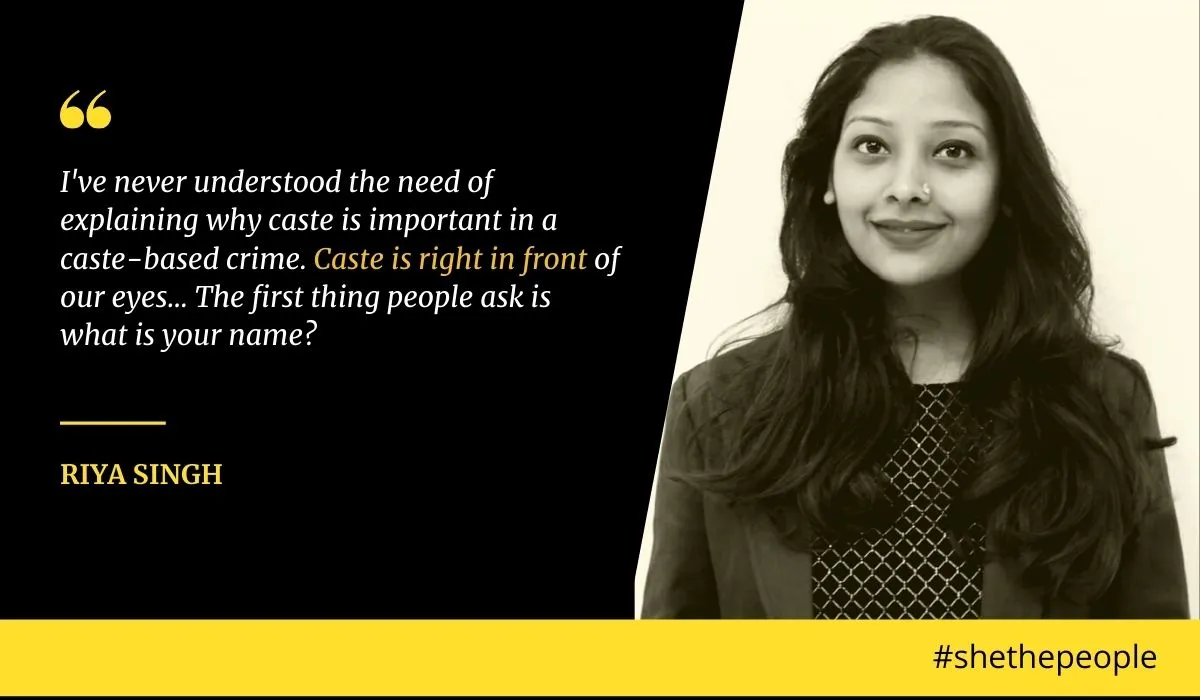

From Wikipedia, the free encyclopedia
Shahu
Rajarshi Shahu Maharaj of Kolhapur
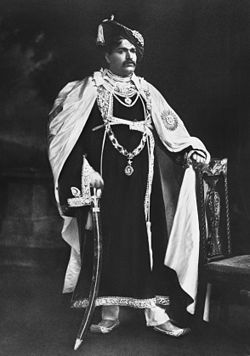
Portrait of Rajarshi Shahu Maharaj of Kolhapur(1912)
Raja of Kolhapur
Reign 1894–1922
Coronation 1894
Predecessor Shivaji VI
Successor Rajaram III
Born July 26, 1874
Gangavali mangaon Raigad
Died May 6, 1922 (aged 47)
Bombay
House Bhonsle
Father Jaisingrao (Aabasaheb) Ghatge
Mother Radhabai
 ‘People are intolerant towards Dalits speaking up,’ says Ravali Medari, a student activist at the University of Hyderabad.
‘People are intolerant towards Dalits speaking up,’ says Ravali Medari, a student activist at the University of Hyderabad.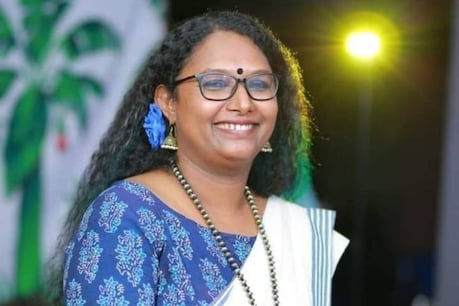
Ravikumar






"Limits of Untouchability, Dalit Assertion and Caste Violence in Punjab", in Harish K. Puri, ed., Dalits in Regional Context (Jaipur: Rawat, 2004), pp. 132-189.
"Punjabi Dalit Parivas: Chetna Ate Sangharsh" (Punjabi Dalit Diaspora: Consciousness and Struggle), South-Asian Review (Prince George, B.C.), September 2006, pp. 22-25 & 29 [also serialized in Amritsar Times www.amritsartimes.com (California), August 2-8, August 9-15, and August 16-22, 2006; Nisot, October-December, 2006 www.nisot.com (Canada)].
-- NATIONAL
"Vishvikaran Noo Pachhere Mulkan Vich Samjhan Da Masla" (Understanding Globalisation in Under-developed Countries), in Bhim Inder Singh, ed., Vishvikaran: Vishleshan Ate Vivechan [Globalisation: Description and Analysis] (Jalandhar: Kuknus, 2006), pp. 62-69.
"Ajoke Punjab wich Dalit Sathiti ate Chetna: Rajnitak Mulankan" (Dalit Position and Consciousness in Contemporary Punjab: Political Analysis), in Dhanwant Kaur and Jaswinder Kaur Maangat [eds.], Samkali Punjabi Samaj [Contemporary Punjabi Society], (Patiala: Punjabi University Publication Bureau, 2006), pp. 51-55.
"Afro-Asian Dialogue: Contesting Globalisation in the Periphery", in Gopal Singh and Ramesh K. Chauhan (ed.), South Asia Today, (New Delhi: Anamika: 2005).
"Punjabi Quam, Dalit Mukti Ate Shaktikaran" (Punjabi Nationality, Dalit Emancipation and Empowerment), South Asian Review (Prince George, B.C.) May 2005, pp. 7-12 [also published in Bhim Inder Singh, ed. Dalit Chintan: Marxi Pripekh (Marxist Perspective of Dalit Thought), (Jalandhar: Kukness Prakashan: 2005), pp. 50-63].
"Spiritual Regeneration, Guru Ravidass and Dera Sach Khand Ballan", Begumpura Souvenir 2004 (Jalandhar: Dera Sach Khand Ballan, 2004), pp. 117-122 [also carried in two installments in Begumpura Shaher (Jalandhar), No. 7, June 14, 2004, p. 10 and No. 8, June 21, 2004, pp. 6-7].
"Role of Ad Dharmis: Chamar Protest in Punjab is linked to Talhan Caste Violence". Dalit Voice, Vol. 23, No. 4, February 16-29, 2004, pp. 11-12 [also carried in two installments in Begumpura Shaher, No. 48, March 29, 2004, p. 9 and No. 49, April 5, 2004, p. 9].
"From the Anarchy To Anarchy: State And Governance Problematique", The Indian Journal of Political Science, Vol. 62, No. 4, December 2001, pp. 520-531.
"From Servitude To Assertion: Ambedkar's Subaltern Approach To Nationalism and Dalit Liberation", Social Sciences Research Journal, Vol. 9, No. 2, 2001, pp. 146-170 [also available in www.ambedkartimes.com and in abridged version at www.ambedkar.org].
"Power v/s Dialogue: Gandhian Dialectic and Conflict Resolution", Social Sciences Research Journal, vol. 7, Nos. 1 & 2, 1999, pp. 103-123.
"What does Gandhi mean to the Youth?" Journal of Peace and Gandhian Studies, Vol. I, No. 2, January-March 1996, pp.75-78.
Citations in Journals/Books
"Social Exclusion, Resistance and Deras: Exploring the Myth of Casteless Sikh Society in Punjab", Economic and Political Weekly, Vol.42, No.40, October 6-12, 2007, pp.4066-74 [Cited in Seminar 581, January 2008, p. 54].
"A Conflict of New Assertions", Tehelka, Vol. 4, Issue 27, July 8-14, 2007 [Cited in EPW, Vol.42, No.40, October 6-12, 2007, p.4065].
"Untouchability in India with a Difference: Ad Dharm, Dalit Assertion and Caste Conflicts in Punjab", Asian Survey, (Berkeley) Vol.XLIV, No.6, November-December 2004 pp.895-912 [cited in EPW, Vol. XLI, No. 24, June 17, 2006, p. 2479].
"Untouchability, Dalit Consciousness, and the Ad Dharm movement in Punjab", Contributions to Indian Sociology (sage) [n. s.], Vol.38, No.3, September-December 2004, pp.323-349. [Cited in EPW, October 27, 2007, p.21; http://www.ediindia.org/Creed/data\Gurpreet%20Bal.htm (October 19. 2007), also one of the 50 Most-Frequently Read Articles in Contributions to Indian Sociology continuously for the months of June -September 2007].
"The Dalit Sikhs", Dalit International Newsletter (Waterford USA) Vol. 9, No.3 October 2004 [cited in http://www.ambedkartimes.com/raju_kamble.htm (October 19, 2007).
"Limits of Untouchability, Dalit Assertion and Caste Violence in Punjab", in Harish K. Puri, ed., Dalits in Regional Context (Jaipur: Rawat, 2004), pp. 132-189 [cited in Global Networks (Blackwell) Vol. 7, No. 3, July 2007, p. 331].
Paper presented on Dalit Assertion and Social Conflicts in Punjab, February 8-9, 2006, at Seminar on Politics in North-West India: Emerging Trends and Changing Patterns, organized by Department of correspondence Courses, Punjabi University, Patiala [cited in Diviner - A Research Journal of Humanities and Social Sciences, Vol. 4, No. 2, Feb-July 2007, pp.128 & 134].
"Making Sense of Caste Violence in Talhan: A View from Within", presented at Regional Seminar on Media and Communal Harmony in Multi-Cultural Society, organized by IDC, Chandigarh in association with Press Institute of India, New Delhi, Communication Management Foundation, New Delhi and Friedrich Ebert Stiftung, New Delhi, September 27-28, 2003 [cited in John C.B. Webster, "The Dalit Sikhs: A History", in Tony Ballantyne (ed), Textures of the Sikh Past (New Delhi: OUP, 2007), p. 148].
Paper presented on Reading Caste with Ambedkar, at Weekly Seminar, of the Dept. of Sociology, Panjab University, Chandigarh January 23, 2002 [cited in Indian Social Science Review, Vol. 7, No. 2, July-December 2005, p.117].
Paper presented on Untouchability and the question of Dalit Identity: A Critique of Ad Dharam Movement at National Seminar on Liberalistion, Dalits and the State, organized by the Department of Sociology, Panjab University, Chandigarh, May 3-4, 2001 [cited in EPW Vol. 37, No. 3, August 3-9, 2002, p. 3245].
Papers Presented at Seminars/Conferences/Workshop
-- INTERNATIONAL
"Punjabi Quam dae Jati ate Jamati Masley" presented at 3rd World Punjabi Conference, organized by South Asian Review (Prince George), Desh Bhagat Yaadgar Hall, Jalandhar, Punjab, February 15-18, 2007.
"Punjabi Dalit Parivas: Chetna Ate Sangharsh" presented at 22nd international Punjabi Development Conference, organized by the Department of Punjabi Languages, Punjabi University, Patiala, February 1-3, 2006.
"Contemporary Society and Political Analysis" presented at 21st International Punjabi Development Conference, organized by The Department of Punjabi Languages, Punjabi University, Patiala, March 10-12, 2005.
"Burden of Past and Vision of Equality: Political Sociology of Jat-Dalit Conflicts" presented at International Conference on Punjab Peasantry in Turmoil, organized by Department of Sociology and Social Anthropology, Punjabi University, Patiala, January 27-28, 2005 [also available at www.ambedkartimes.com]
"Punjabi Nation and Dalit Emancipation" (Punjabi), presented at Second World Punjabi Conference, organized by the South Asian Review and Sahit Sabha, Prince George, Canada, June 28-July 1, 2003.
"Contextualising Ad Dharm Movement (Punjab): Dalit Consciousness, Social Justice and Cultural Transformation", presented at International Dalit Conference, organized by Association for International Dalit Conference Inc., Vancouver, Canada, May 16-18, 2003.
"Agenda for Conflict Resolution: Theoretical Dimensions", paper presented at International Seminar on Violence in India: Prospect and Prognosis organized by Institute for Development and Communication, Chandigarh, January 18-20, 1998.
"Domestic Challenges to World Peace: Crumbling Borders between Domestic and International Politics", paper presented at International Seminar on Geo-Politics of Peace, Jawaharlal Nehru University and Indira Gandhi National Open University, New Delhi, January 16-18, 1988.
-- NATIONAL
"Punjab Vich Dalit Chetna de Sroot" [Sources of Dalit Consciousness in Punjab], presented at seminar on Dalit Chetna in Punjab, organized by Dalit Chetna Manch Punjab Regd., Mohali, January 20, 2008.
"Self Versus Other: Morality in Public Life", presented at national seminar on Morality and Public Life, organized by Department of Philosophy, Panjab University, Chandigarh, January, 17-18, 2008 (on 18th January, also Chaired the fifth session the same day).
"Right to Information Act 2005 and Good Governance", presented at seminar on Right to Information, organized by The Political Science Department of S.G.G.S. Khalsa College, Mahilpur, January 11, 2008.
"Understanding Dalit Assertion in Punjab", presented at seminar on Ikyvi Saadi Vich Parvesh Kar Raeha Punjab: Samaj de Saravpakhi Vikas de Sandarab Vich, organized by Punjab Basha Academy and Punjab Academy of Social Sciences, Literature and Culture, Jalandhar, November 24-25, 2007.
"Understanding Dalit Assertion in North India", presented at seminar on Samkalin Bharatiya Sahitya Mein Samajik Nayaya Ki Avadharana: Vishesh Sandarbh Dalit Sahitya, organised by IIAS, Shimla, November 14-16, 2007 (also Chaired the Sixth Session: Poetry, Fiction: Realism, Rebellion and Interrogation).
"Status of Human Rights of Dalits in Punjab", presented at Workshop-cum-consultancy on Dalit Rights, organised by Human Rights Law Networking Chandigarh, October 28,2007.
"Shaheed-e-Azam "Bhagat Singh and the Question of Untouchability", presented at seminar on Bhagat Singh and his Legends, organised by the World Punjabi Centre, Punjabi University Patiala, October 22-23, 2007.
"Dr. B. R. Ambedkar and Social Justice", presented at seminar dedicated to the Birth Anniversary of Dr. Ambedkar, organized by Dr. Ambedkar Chetna Society, Banga, April 29, 2007.
"Globalisation, Dalits and Labour", presented at seminar on Labourer, Labour and Globalisation, organized by Dalit Chetna Manch Punjab (Regd), April 28, 2007.
"Social Exclusion and Dalits in Punjab", presented at National seminar on Social Exclusion, State and Globalisation, organized by Ambedkar Centre, Panjab University, Chandigarh, March 29-30, 2007.
"Human Rights and Dalit Consciousness in Punjab", presented at UGC sponsored National seminar on Human Rights and Duties Education, organized by Khalsa College Amritsar, March 23, 2007.
"Situating Subordination in Regions within a Region: Dilemmas of Dalit Solidarity in East Punjab" presented at National seminar on Regions within Regions: Rethinking State Politics in India, organized by Dept. of Political Science, Panjab University, February 26-27, 2007.
"Contesting Globalisation in the Periphery", presented at seminar on Globalisation, Social Institutions and Values, organized by Dev Samaj College for Women, Chandigarh, February 3, 2007.
"Patterns of Dalit Population in Punjab", presented at National seminar on Population, Environment and Development in the Northwestern India, organized by the Dept. of Geography, Panjab University, Chandigarh, February 1- 2, 2007.
"Identity Formation Among the Dalits of Punjab: Some Critical Reflections", presented at UGC sponsored National seminar on Participatory Democracy: New Context, New Challenges - Inclusion and Exclusion, organised by Dept. of Correspondence Studies, PU, Chandigarh, January 23-24, 2007.
"Ad Dharm Movement and Dalit Consciousness in Punjab", presented at a National seminar on India Since the 1990s and Social Science Research, organised by ICSSR (North-Western Regional Center), PU, Chandigarh, January 18-19, 2007.
"Human Rights: Dalit Consciousness and Caste Conflicts in Punjab", presented at UGC sponsored National seminar on Status of Human Rights in Punjab, organised by Lajpat Rai DAV College Jagraon, November 30 -December 1, 2006.
P. Sivakami
Early Life: Roots in Perambalur's Dalit Struggle
- Birth and Family: Born in Perambalur, a small town in Tamil Nadu (elevated to district status in 2007), Sivakami hails from a Paraiyar (Dalit/Scheduled Caste) family—historically marginalized as drummers, agricultural laborers, and sanitation workers, subjected to untouchability and economic exploitation. Her father, M. Palanimuthu, was an independent MLA from a Dalit background, instilling in her a sense of political awareness amid rural caste violence. Her mother (name not widely documented) supported the family's modest life, where Sivakami witnessed the "double marginalization" of Dalit women—oppressed by upper castes externally and patriarchy within.
- Education Amid Adversity: She began primary schooling at a government Adi-Dravidar (Dalit) welfare school for Scheduled Castes and tribes, a segregated space reflecting systemic exclusion. Later, she attended St. Mary's Missionary School, excelling despite barriers. Her academic prowess led to a degree in Tamil literature from Madras University, fueling her literary ambitions. In interviews, she recalls how caste shaped her worldview: "Caste and gender are inextricably linked; controlling women's bodies safeguards the caste system."
Sivakami's early exposure to the 1989 Bodinayakanoor riots—clashes between Dalit Pallars and upper-caste Thevars—ignited her commitment to intersectional resistance, blending Ambedkarite anti-casteism with feminist critique.
Bureaucratic Career: Serving the Marginalized (1980–2008)
- IAS Journey: Clearing the UPSC in 1980, Sivakami became one of the few Dalit women in the Tamil Nadu cadre. She served 28 years, rising to key roles like Secretary of the Adi-Dravidar Welfare Department, where she championed Dalit education, land reforms, and atrocity prevention. Her tenure exposed her to systemic failures: police reluctance to invoke SC/ST (Prevention of Atrocities) Act, as she alleged in 2023 regarding Tirunelveli cases.
- Voluntary Retirement: In 2008, disillusioned by bureaucratic red tape, she quit to "serve the poor and disadvantaged" directly—transitioning from policy-maker to activist. This shift marked her evolution into a full-time advocate for Dalits, tribals, transgender communities, and women.
Literary Legacy: Pioneering Dalit-Feminist Narratives
Sivakami's writing, predominantly in Tamil, is semi-autobiographical and colloquial, capturing rural Dalit idioms shunned by mainstream literature. She rejects the "Dalit writer" label as limiting, insisting: "Only Dalits can authentically depict their issues, and only women can tackle feminist ones." Her works have been prescribed in universities and translated globally, influencing a generation of subaltern voices.
| Work (Tamil/English) | Year | Themes | Impact |
|---|---|---|---|
| Pazhaiyana Kazhidalum / The Grip of Change (self-translated) | 1989 | Dalit widow's fight against caste patriarchy; village economy's links to hierarchy | First Tamil novel by a Dalit woman; BBC's top 5 Indian novels; critiques intra-Dalit gender oppression |
| Aanandayee / The Taming of Women (trans. Pritham K. Chakravarthy) | 1994 | Violent subjugation of Dalit women | Penguin publication; exposes emotional/physical abuse |
| Kurukku Vettu / Cross Section (Sahitya Akademi) | 1999 | Intersections of caste, class, and gender | Highlights Dalit resilience amid violence |
| Nalum Thodarum | 2002 | Ongoing Dalit struggles | Explores psychological turmoil |
| Kadaisi Mandhar | 2013 | Marginalized women's agency | Focuses on transgender and tribal rights |
| Kadhavadaippu (Poetry) | 2011 | Resistance and self-critique | First poetry collection; feminist introspection
|
- Over 60 Short Stories and Essays: Collections like those in Puthiya Kodangi (magazine she edits since 1995) nurture emerging Dalit writers, shifting her focus from "literature to living characters."
- Translation Politics: She self-translated her debut to preserve authenticity, noting English amplifies Dalit voices globally but risks sanitization.
Her oeuvre has sparked debates on Tamil literature's growing receptivity to Dalit-feminist themes, with influences from Bama and Imayam.
Activism and Political Foray: From Grassroots to Party Founder
- Key Movements: Post-retirement, Sivakami founded the Dalit Land Rights Movement, advocating for equitable resource distribution. She critiques religious fundamentalism's toll on Dalits and pushes for self-critique in political circles. In 2023, she slammed Tamil Nadu police for compromising Dalit victims in atrocity cases.
- Political Ventures: Briefly with Bahujan Samaj Party, she launched Samuga Samathuva Padai (Army for Social Equality) in 2009, drawing from Ambedkar's egalitarianism to promote Dalit unity and women's rights. Though short-lived, it amplified subaltern demands.
- Media Presence: Active on X (@sivakami_p), she engages in real-time advocacy, from caste violence to literary resistance. A 2025 documentary highlights her IAS-to-activist arc.
Awards, Recognition, and Legacy (as of November 2025)
- Verchol Dalit Literary Award (April 2025, Neelam Cultural Centre): For her "fearless voice" in Dalit narratives.
- Sahitya Akademi Advisory Member: Oversaw promotions of diverse literatures.
- Global Impact: Works studied in translation programs; featured in Harvard's South Asia Institute (2023).
Sivakami's legacy lies in humanizing Dalit women—"treated worse than animals"—through literature and action, fostering a Tamil canon where caste and gender "rightfully take the spotlight." As she reflects: "Dominance in any form must be opposed." Her journey—from Perambalur's margins to national discourse—inspires ongoing battles against inequality. Jai Bhim to this unyielding warrior!
Subhasini Mistry
Subhasini Mistry (also spelled Subhashini Mistry in some sources), born in 1943 in Kulwa village, Kolkata, West Bengal, India, is an inspiring Indian social worker renowned for her remarkable journey from poverty to founding the Humanity Hospital, a charitable healthcare facility for the underprivileged. Widowed at the age of 23, she faced immense hardships while raising her four children through low-paying jobs as a housemaid, manual laborer, and vegetable seller. Her determination to ensure that no one else suffers due to lack of access to healthcare led her to establish the Humanity Hospital, a testament to her resilience and commitment to social good. In recognition of her contributions, she was awarded the Padma Shri, India’s fourth-highest civilian honor, in 2018. Below is a comprehensive overview of her life, achievements, and legacy, drawing from the provided web results and other credible sources.
Early Life
Subhasini Mistry was born in 1943 into a poor farmer’s family in Kulwa village, approximately 30 km southwest of Kolkata, during the Bengal famine, a period of widespread starvation and hardship. Her father, a marginal farmer, struggled to support his 14 children, and seven of them died due to malnutrition and lack of resources. Subhasini’s early life was marked by extreme poverty, and she received no formal education, a fact she later noted when she said, “I had no education and couldn’t even tell the time”.
At the age of 12, she was married to Chandra, an agricultural worker and vegetable vendor who earned a meager ₹200 a month. The couple lived in Hanspukur village, a 1.5-hour walk from Kulwa, and had four children. Their life was one of constant struggle to make ends meet, with Subhasini managing household duties while supporting her husband’s work.
Tragedy and Resolve
In 1971, at the age of 23, Subhasini’s life took a tragic turn when her husband, Chandra, died of gastroenteritis, a treatable condition, due to the family’s inability to afford proper medical care and the neglect of hospital staff. Left alone with four young children—aged between one-and-a-half and eight years old—she was overwhelmed by grief and desperation. Her parents and siblings, equally impoverished, could offer no support. This loss profoundly impacted Subhasini, and she vowed that “no one should die like my husband just because they are poor”. This resolve became the driving force behind her lifelong mission to build a hospital for the underprivileged.
Struggles and Sacrifices
With no education or skills, Subhasini faced the daunting task of providing for her four children. She took up multiple low-paying jobs to survive:
- Housemaid: She worked as a domestic helper in five households, earning approximately ₹100 a month. Her tasks included cooking, cleaning, mopping floors, washing utensils, polishing shoes, and even concreting roofs.
- Vegetable Seller: Recognizing that selling vegetables could yield more income, she began collecting vegetables from the wayside in Dhapa village and selling them in Kolkata’s bustling Park Circus market. She and her children moved to Dhapa, where she rented a hut for ₹5 a month.
- Manual Laborer: She also worked as a manual laborer, performing physically demanding tasks to supplement her income.
To ensure her son Ajoy received a proper education, Subhasini made the heart-wrenching decision to send him to an orphanage in Kolkata, where he could access better opportunities. Her other three children stayed with her, helping with household chores and vegetable selling. She later sent two of her children to an orphanage due to financial constraints, a sacrifice she justified for the “greater good” of her mission. Subhasini lived frugally, saving every paisa she could by avoiding personal expenses and prioritizing her children’s education and her dream of building a hospital.
Founding of Humanity Hospital
Over two decades, Subhasini saved approximately ₹20,000 through her relentless hard work. In 1992, she used her life savings to purchase a one-bigha (approximately one-third of an acre) plot of land in Hanspukur, her husband’s village, for ₹10,000. She negotiated with a landlord to buy the land at a reduced price, pleading for his support.
In 1993, Subhasini established the Humanity Trust with the help of local residents who contributed money, materials, and labor. A temporary one-room clinic was set up, where three doctors from nearby areas volunteered to treat patients free of cost. Despite challenges, such as treating patients on the road during monsoons due to flooding in the makeshift shed, the clinic marked the beginning of her dream.
Her son Ajoy, whom she had educated with the help of philanthropists, became a doctor and joined the hospital, fulfilling another part of her vision. In 1996, a permanent building for the Humanity Hospital was inaugurated by then-West Bengal Governor K.V. Raghunath Reddy. The hospital, located in Hanspukur, Nadia district, grew to include 25 beds and 12 doctors, operating entirely on donations. A second unit was later established in Patharpratima, Sundarbans, expanding its reach to serve more communities.
The hospital provides affordable or free medical care, with major surgeries costing less than ₹5,000 and minor treatments as low as ₹10. It treats thousands of patients annually and has recently introduced telemedicine centers across West Bengal districts, with plans for national expansion.
Awards and Recognition
Subhasini Mistry’s extraordinary contributions have been widely recognized:
- Padma Shri (2018): Awarded by the Government of India, the fourth-highest civilian honor, for her social work in providing healthcare to the poor. She received the award from President Ram Nath Kovind at Rashtrapati Bhavan on March 20, 2018.
- Women Transforming India Awards (2017): One of 12 recipients honored by NITI Aayog for her transformative impact on society.
- Godfrey Phillips Bravery Award (2009): Won in the “Mind of Steel” category for her perseverance and dedication.
Subhasini expressed that her true reward was seeing the hospital operational and treating its first patient successfully, stating, “I’m glad the government has recognized my work. But I would be happier if this award influences others to step up and do their bit for the society”.
Personal Life and Legacy
Subhasini raised her four children under extreme hardship, prioritizing their survival and education. Her son Ajoy became a doctor and works at the Humanity Hospital, while one of her daughters trained as a nurse and also contributes to the hospital’s mission. Despite her sacrifices, including sending two children to an orphanage, Subhasini expressed no regrets, viewing her actions as necessary for the greater good of providing healthcare to the poor.
Now in her 80s, Subhasini has retired from active work but continues to tend to patients at the hospital. She remains committed to her vision of transforming the Humanity Hospital into a full-fledged 24-hour facility, though she has noted challenges like a shortage of doctors and funds, particularly for completing an ICU. Her daughter and son Ajoy carry forward her mission, ensuring the hospital’s continued service to the community.
Subhasini’s story is a powerful example of resilience, sacrifice, and social impact. Her life’s work has inspired countless individuals and serves as a model of grassroots activism. She is celebrated as a “real mother of India” for her selfless dedication to humanity, as noted in sources like Sanskriti Magazine.
Cultural and Social Impact
Subhasini Mistry’s journey resonates deeply in the context of Indian society, where access to healthcare remains a significant challenge for the poor. Her story parallels the themes of social justice and empowerment found in folk narratives, such as that of Madurai Veeran, though her contributions are grounded in modern social work rather than mythology. Her work has been covered extensively in media, including:
- News18: Highlighted her as a 70-year-old who built a hospital from nothing.
- Times of India: Described her as Kolkata’s unsung hero.
- The Weekend Leader and Unsung.in: Documented her struggles and triumphs in detail.
- YouTube Documentaries: Videos like “The Inspiring Story of Subhashini Mistry” and “Subhasini Mistry’s Story - Desh Ka Namak” have popularized her story globally.
Her recognition as a Padma Shri awardee and her media coverage have amplified her message, encouraging others to contribute to social causes. Her hospital’s model of community-driven, donation-based healthcare has become a beacon of hope for addressing systemic inequities.



Jyotirao had studied the Hindu scriptures and come to the conclusion that all humans were equal. He realized that education was the one tool that if provided to all humans, would get rid of all social inequalities.
He rejected the high-caste orthodox norms that monopolized education and privileged to keep the other castes downtrodden.

Every afternoon, when Savitribai Phule came to the fields where her husband worked to give him his food, Jyotirao sat with her and educated her. (Photo: comapnion.in)
Official education received by Savitribai Phule
Regressive elements claimed that the food eaten by Jyotirao would turn into worms and that Savitribai would lose him to an untimely death.

(File photo)
Savitribai’s ordeal of going to teach at a girl’s school
When it was obvious that simple words and rumours wouldn’t help deter Savitribai and Jyotirao from their goal of providing education to girls, society decided to take another path.
Going to the girls’ school to teach became a huge ordeal for Savitribai. She faced innumerable abuses and listened to obscenities heaped on her on the way to teach.

(Photo: companion.in)
Continuing work on social emancipation
Empowered, Savitribai Phule established herself and more schools for women and girls till she was honoured for her exemplary work by the British government.
Between 1848 and 1852, the couple established no less than 18 schools for women.
In 1852, she and her husband were felicitated with a shawl for their work in Vishrambag Wada, Pune.
She went on to work towards slowly questioning and eradicating a lot of other social evils. From adopting her son’ Yashwant after her husband rescued a pregnant woman about to end her life, to setting up a delivery home for women in forced pregnancies called Balhatya Pratibandhak Griha’, Savitribai did all in her power to uplift the standard of women.
The couple also organized the first-of-its-kind barbers strike after castigating them for shaving the heads of young widows. As an example against the evil of untouchability, they also opened up their own water reservoir for everyone.
The empowered couple did a lot of work in the famine and established 52 boarding schools for orphaned children.
After Jyotirao Phule died in 1890, Savitribai continued his work. Most notably, she took over the Satya Shodhak Samaj which had been founded by him. She presided over meetings, guided workers and worked for plague victims.
As Pramila Dandavate writes, "It is said that she used to feed two thousand children every day during the epidemic."
Ironically, Savitribhai was struck down by disease while nursing a sick child and the pioneer of women’s education in India died on March 10, 1857.

From Wikipedia, the free encyclopedia
Sheila Wright
Member of Parliament

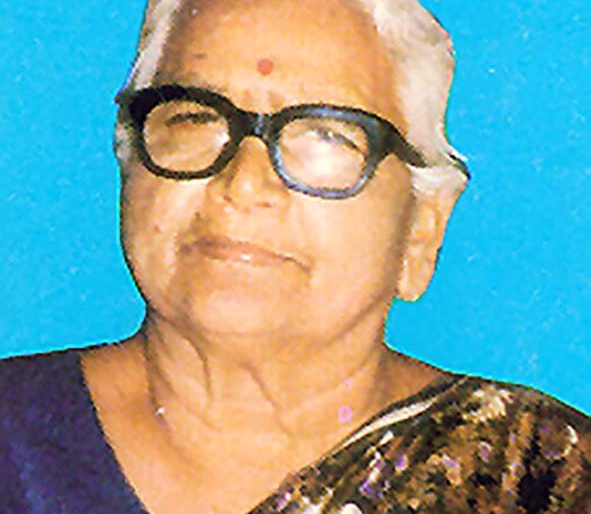
Besides writing articles, Kamble conducted various meetings to awaken and enlighten people and appealed to them to abandon the practice of offering girls to the god and goddess of Jejuri known as Khandoba and Yellamama.
The resolutions passed by women in various conferences demanded:
1) Free and compulsory education for girls;
2) Women’s representation in state legislative assemblies, local bodies etc ... ;
3) Training for self-protection of Untouchable women, such as wielding of sticks or karate;
4) Starting a women’s wing in the Samta Sainik Dal (Equality Volunteer Corps);
5) Prohibiting child marriages.
 pronunciation (help·info) (3 April 1893 - 7 February 1942) was an Indian revolutionary and a founder of the Hindustan Republican Association (HRA, which after 1928 became the Hindustan Socialist Republican Association) that was created to carry out armed resistance against the British Empire in India. He was a mentor for revolutionaries like Chandrashekhar Azad and Bhagat Singh.
pronunciation (help·info) (3 April 1893 - 7 February 1942) was an Indian revolutionary and a founder of the Hindustan Republican Association (HRA, which after 1928 became the Hindustan Socialist Republican Association) that was created to carry out armed resistance against the British Empire in India. He was a mentor for revolutionaries like Chandrashekhar Azad and Bhagat Singh.
 Sujatha Gidla at the ZEE Jaipur Literature Festival 2018 at Diggi Palace on January 29, 2018 in Jaipur, India. (Photo by Raj K Raj/Hindustan Times via Getty Images)
Sujatha Gidla at the ZEE Jaipur Literature Festival 2018 at Diggi Palace on January 29, 2018 in Jaipur, India. (Photo by Raj K Raj/Hindustan Times via Getty Images)







Sanghapali Aruna is a prominent Dalit feminist activist, educator, and social entrepreneur from India, known for her work in advocating for the rights of Dalit women, challenging caste-based discrimination, and promoting gender equity. Below is a detailed overview of her life, work, and contributions based on available information:
Background and Early Life
- Caste and Identity: Sanghapali Aruna was born into a Dalit family in Visakhapatnam, Andhra Pradesh, India. Dalits, historically referred to as Scheduled Castes, are among the most marginalized communities in India, facing systemic caste-based discrimination and social exclusion.
- Personal Struggles: Growing up in a Dalit community, Aruna experienced firsthand the challenges of caste oppression, gender discrimination, and economic hardship. These experiences shaped her commitment to social justice and advocacy for marginalized groups.
- Education: Despite systemic barriers, Aruna pursued higher education, which equipped her with the tools to challenge societal inequities. Specific details about her academic qualifications are not widely documented, but her work reflects a deep understanding of social justice, law, and education.
Activism and Key Contributions
Sanghapali Aruna’s activism centers on dismantling caste and gender hierarchies, with a particular focus on amplifying the voices of Dalit women. Her work spans grassroots organizing, digital advocacy, and educational initiatives.
- Project Mukti:
- Aruna is the co-founder and executive director of Project Mukti, a non-profit organization dedicated to empowering Dalit women and girls through education, technology, and advocacy.
- Mission: Project Mukti works to address systemic inequalities by providing access to education, digital literacy, and opportunities for Dalit women to challenge caste and gender-based oppression.
- Key Initiatives:
- Digital Empowerment: Recognizing the digital divide, Project Mukti trains Dalit girls and women in digital skills to enhance their access to education and employment opportunities.
- Anti-Caste Advocacy: The organization promotes awareness about caste discrimination and works to dismantle stereotypes and stigma associated with Dalit identity.
- Gender Equity: Aruna emphasizes the intersectionality of caste and gender, advocating for policies and programs that address the unique challenges faced by Dalit women.
- Dalit Women’s Rights:
- Aruna is a vocal advocate for the rights of Dalit women, who face compounded discrimination due to their caste, gender, and often economic status.
- She highlights issues such as caste-based violence, sexual exploitation, and lack of access to resources, calling for systemic reforms to protect and empower Dalit women.
- Her activism challenges patriarchal structures within both Dalit and non-Dalit communities, advocating for women’s leadership and representation.
- Digital and Media Advocacy:
- Aruna uses digital platforms to amplify Dalit voices and challenge mainstream narratives that often marginalize or erase Dalit experiences.
- She has been involved in campaigns to combat casteist and misogynistic content online, advocating for safer digital spaces for marginalized communities.
- Through social media and public speaking, she educates audiences about the lived realities of Dalit women and the need for intersectional approaches to social justice.
- Education and Mentorship:
- Aruna emphasizes education as a tool for empowerment, particularly for Dalit girls who face barriers to schooling due to poverty, caste discrimination, and early marriage.
- Through Project Mukti, she has mentored young Dalit women, helping them navigate educational and professional spaces that are often inaccessible to their communities.
Key Achievements
- Recognition: Aruna’s work has been recognized in India and internationally for its impact on Dalit women’s empowerment and anti-caste activism. While specific awards are not widely documented, her leadership in Project Mukti has garnered attention in social justice circles.
- Policy Advocacy: She has engaged with policymakers and civil society organizations to push for inclusive policies that address caste and gender discrimination, including better implementation of laws like the Scheduled Castes and Scheduled Tribes (Prevention of Atrocities) Act.
- Community Impact: Through Project Mukti, Aruna has directly impacted the lives of hundreds of Dalit girls and women by providing them with education, skills, and platforms to advocate for their rights.
Philosophy and Approach
- Intersectionality: Aruna’s activism is rooted in an intersectional understanding of oppression, recognizing that caste, gender, and class intersect to create unique challenges for Dalit women.
- Ambedkarite Influence: Her work is inspired by Dr. B.R. Ambedkar, the architect of India’s Constitution and a towering figure in the Dalit movement, who advocated for the annihilation of caste and social equality.
- Grassroots Focus: While Aruna engages with national and international platforms, her work remains grounded in community-based solutions, ensuring that Dalit women’s voices drive the agenda.
Challenges Faced
- Caste-Based Backlash: As a Dalit activist, Aruna has faced hostility and discrimination from dominant caste groups, including online trolling and threats for challenging caste hierarchies.
- Resource Constraints: Like many grassroots organizations, Project Mukti operates with limited funding, relying on donations and partnerships to sustain its programs.
- Systemic Barriers: Aruna’s work confronts deeply entrenched societal norms, requiring persistent efforts to change attitudes and policies around caste and gender.
Public Presence
- Speaking Engagements: Aruna has spoken at various forums, including conferences, universities, and civil society events, to raise awareness about Dalit women’s issues.
- Media Contributions: She has contributed to discussions in Indian and international media about caste, gender, and social justice, though specific interviews or articles are not always publicly archived.
- Social Media: Aruna and Project Mukti maintain an active presence on platforms like X, where they share updates about their work, advocate for policy changes, and engage with supporters.
Personal Traits
While personal details about Aruna’s life are not extensively documented, those who describe her work often highlight her resilience, compassion, and strategic vision. She is known for her ability to bridge grassroots activism with broader policy advocacy, making her a respected figure in India’s social justice movement.
Broader Context
Aruna’s activism is part of a larger movement of Dalit women asserting their rights in India. Figures like Savitribai Phule, a historical pioneer in women’s education, and contemporary activists like Ruth Manorama and Cynthia Stephen have paved the way for Dalit women’s leadership. Aruna’s work continues this legacy, adapting it to the digital age and focusing on education and empowerment as tools for liberation.
Limitations in Available Information
As of October 19, 2025, detailed biographical information about Sanghapali Aruna, such as her birth date, family background, or specific milestones, is not widely available in public sources. Most information comes from profiles of her work with Project Mukti and her public statements on caste and gender justice. If you seek more specific details (e.g., recent activities or personal history), I can search X or the web for real-time updates, though results may vary based on available content.


.jpg)
1. The Muslim* Staff Reporter · May 1994 to Oct 1996
2. Daily News*
3. Sindh Express*
4. Financial Post* News Editor · Jan 1997 to Sep 2004
5. The Balochistan Times* News Editor · Mar 1993 to Feb 1994
6. Sindh Tribune*



 A screen grab of the video released by activists Ramesh Gaichor and Sagar Gorke. | Bhima Koregaon Shaurya Prerana Abhiyan via Facebook
A screen grab of the video released by activists Ramesh Gaichor and Sagar Gorke. | Bhima Koregaon Shaurya Prerana Abhiyan via Facebook
T. K. Madhavan
From Wikipedia, the free encyclopedia
T. K. Madhavan

Statue of T. K. Madhavan
Born 2 September 1885
Karthikappally
Died 27 April 1930 (aged 44)
Nationality Indian
Occupation Social reformer, Freedom fighter
Spouse(s) Narayani Amma
Children 2
T. K. Madhavan (2 September 1885 – 27 April 1930) was an Indian social reformer, journalist and revolutionary who was involved with the Sree Narayana Dharma Paripalana (SNDP). He came from Kerala and led the struggle against untouchability which was known as Vaikom Satyagraha.
Early life
Madhavan was born on 2 September 1885 at Karthikappally, son of Kesavan Channar of Alummoottil family and Ummini Amma of Komalezhathu family. Alummoottil family was one of the wealthiest in the state of Travancore that time. His maternal uncle was Komalezhathu Kunjupillai Chekavar, a member of the Sree Moolam Praja Sabha.
Caree
In 1917 he took over the daily newspaper, Desabhimani. He was involved in the Temple Entry Movement, which fought for the entry of oppressed and low-caste communities to the temples of Kerala. He fought for the right of temple entry for all. In 1918 Madhavan was elected to the Sree Moolam Praja Sabha, a legislative council of Travancore. In the same year he made his maiden speech at the Sree Moolam Assembly in lieu of his uncle Komalezhathu Kunjupillai Chekavar. He presented a resolution seeking permission of temple entry and right to worship to all people irrespective of caste and community. He moved the resolution for the eradication of untouchability in the kakkinada session of Indian National Congress in 1923. In 1924, Vaikom Sathyagraha was started under the leadership of Madhavan, K. Kelappan, and K.P.Kesava Menon to get the right of oppressed class of people to travel through the road in front of Vaikom Mahadeva temple. Madhavan and Kesava Menon were arrested and imprisoned. Finally, the Maharaja of Travancore agreed to open the road to all class of people and the Vaikom Sathyagraha was a great success. However, he had to continue his struggle for the temple entry. In 1927 he was made organizing secretary of the SNDP Yogam. T.K Madhavan formed a voluntary organization "Dharma Bhata Sangham" to strengthen the activities of SNDP Yogam.
It was T K Madhavan who wrote the biography of Dr. Palpu.
Meeting with Gandhi
He met Gandhi at Tirunelveli, and persuaded him to visit Vaikom. Vaikom Satyagraha was a struggle of the backward class people of Kerala for establishing their right to walk through the temple roads of Vaikom, a small temple town in South Kerala. Gandhi agreed to include the issue in the agenda of the Indian National Congress.
Death
Madhavan died at his residence on 27 April 1930. A monument was raised in his honour at Chettikulangara. In 1964 T.K.Madhava Memorial College was founded at Nangiarkulangara.
Tulsidas Jadhav
Tulsidas Subhanrao Jadhav was born on January 25, 1905, in Dahitane village, located in the Barshi taluka of Solapur district, Maharashtra, India (then part of the Bombay Presidency under British rule). He came from a farming family and was educated at Haribhai Deokarn High School in Solapur. As a young man, he worked as a farmer while becoming increasingly involved in social and political activities. In 1913, at the age of eight, he married Janabai Tulsidas Jadhav, an arranged marriage common in rural India at the time. The couple had six children: two sons (Jaywant Jadhav, the elder, and Yeshwant Jadhav, the younger) and four daughters. One of his daughters, Kalavati, married Babasaheb Bhosale, a prominent Congress politician who later served as the Chief Minister of Maharashtra from 1982 to 1985. This family connection further embedded Jadhav in Maharashtra's political landscape.
Political Career and Activism
Jadhav's political journey began in his late teens when he joined the Indian National Congress in 1921, at the age of 16. He emerged as a dedicated freedom fighter and political activist, deeply influenced by Mahatma Gandhi's philosophy of non-violence and self-reliance. During the 1930 Salt Satyagraha—a pivotal civil disobedience movement against British salt taxes—Jadhav, along with contemporaries like Krisnaji Bhimrao Antrolikar and Jajuji, became politically active in Solapur. He was a staunch Gandhian, participating in protests and satyagrahas that challenged colonial authority.
Jadhav's activism was marked by personal bravery. In 1930, during the Solapur riots following the arrest of Congress leaders, local police deserted their posts amid chaos. For three consecutive days (May 9–11, 1930), Jadhav stepped in to maintain law and order in the town, preventing further violence and earning widespread respect for his courage. This act of civic duty during a crisis highlighted his commitment to public service.
He faced multiple imprisonments for his role in the independence movement: in 1931, 1932, 1941, and 1942, totaling around six to seven years in jail. Notably, while imprisoned in Yerwada Central Jail in 1932, Jadhav served as Gandhi's personal secretary during the Mahatma's incarceration, assisting with correspondence and organizational tasks. One anecdote from his satyagraha days recounts an incident where a British officer pressed a pistol to his chest and ordered him to disperse protesters; Jadhav refused, defiantly shaking off the threat and continuing the demonstration.
Post-independence, Jadhav's political allegiance shifted. He left the Congress in 1947, disillusioned with the party's direction, and co-founded the Peasants and Workers Party of India (PWP) alongside leaders like Keshavrao Jedhe, Nana Patil, Madhavrao Bagal, and Dajiba Desai. The PWP focused on agrarian reforms, workers' rights, and socialist ideals, representing the interests of farmers and laborers in Maharashtra. Jadhav was elected to the Bombay Legislative Council (the precursor to the Maharashtra Legislative Assembly) multiple times: from 1937–1939, 1946–1951, and 1951–1957. He later served as a Member of Parliament (MP) in the Lok Sabha, representing the Solapur constituency as a PWP candidate, though exact terms are noted as two parliamentary stints in biographical records.
Beyond electoral politics, Jadhav was a social worker advocating for rural development, education, and health. He served on several committees, including the Electricity Consultative Committee, the Tuberculosis (T.B.) Board, the Leprosy Committee, and the Study Group on Road Safety. In 1985, as President of the Parliamentary Center (an organization promoting parliamentary democracy and international cooperation), he co-signed the "Apostle of Peace" award, presented alongside then-President Giani Zail Singh and Secretary General Dr. S.S. Mohapatra, recognizing global peace efforts.
Personal Life and Legacy
Jadhav remained rooted in his farming profession throughout his life, embodying the Gandhian ideal of self-sufficiency. He passed away on September 11, 1999, at the age of 94, leaving a legacy as a multifaceted figure: freedom fighter, politician, social reformer, and community leader. His contributions to India's independence struggle and post-independence rural upliftment are commemorated in Maharashtra. In February 2009, a statue was unveiled at Mechanic Chowk in Solapur to honor his role in maintaining order during the 1930 riots, symbolizing his bravery and dedication to public welfare.
Family members have continued to invoke his name in public discourse. For instance, in a 2024 social media post, his great-granddaughter-in-law, Sumitra Jadhav, highlighted his imprisonment alongside Gandhi and his support for political causes.
IV. Rev. Raymonds - KGF
V. Rev.S.C.Mathews - Kodambakkam
VI. Rev.Absalom David

From Wikipedia, the free encyclopedia
Thol.Thirumavalavan
Member of Parliament, Lok Sabha
Incumbent
Assumed office
30 May 2019
Preceded by M. Chandrakasi
Constituency Chidambaram
In office
31 July 2009 – 17 May 2014
Preceded by E. Ponnuswamy
Succeeded by M. Chandrakasi
Constituency Chidambaram
Member of Tamil Nadu Legislative Assembly
In office
14 May 2001 – 12 May 2006
Chief Minister J. Jayalalithaa
Preceded by S. Puratchimani
Succeeded by K. Selvam
Constituency Mangalur
Personal details
Born 17 August 1962 (age 58)
Anganur, Madras State, India
Nationality India
Political party Viduthalai Chiruthaigal Katchi
Residence Chennai, Tamil Nadu
Controversies
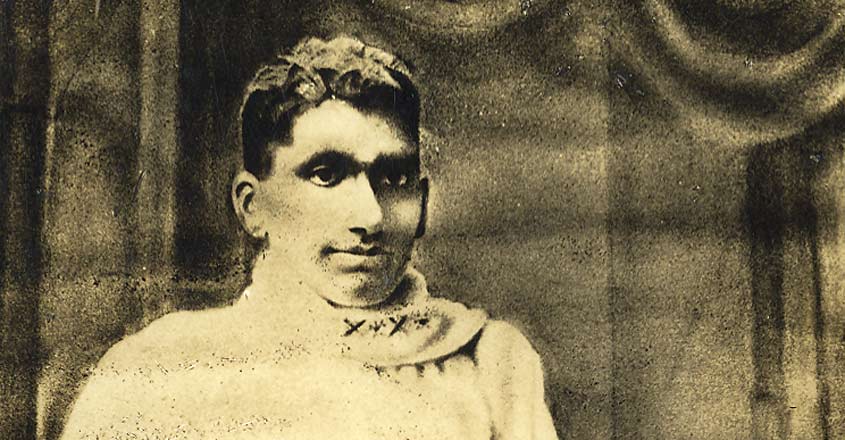
विट्ठल रामजी शिंदे

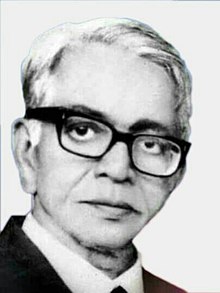

Yashwant Bhimrao Ambedkar, also known as Bhaiyasaheb Ambedkar, was an Indian socio-religious activist, newspaper editor, politician, and key figure in the Ambedkarite Buddhist movement. Born on December 12, 1912, in Bombay (now Mumbai), he was the only surviving child of Dr. B.R. , the architect of the Indian Constitution, and his first wife, Ramabai Ambedkar. Yashwant dedicated his life to continuing his father's legacy of fighting for social equality, eradicating caste discrimination, and promoting Buddhism, particularly after converting to Navayana Buddhism in 1956. He played a pivotal role in uniting the Ambedkarite community and advancing the Dalit Buddhist movement until his death on September 17, 1977.
Early Life
Yashwant was born into a family deeply rooted in the struggle against caste oppression. His father, Dr. B.R. Ambedkar, was a renowned jurist, economist, social reformer, and leader who faced significant discrimination as a member of the Mahar community, considered "untouchables" at the time. Yashwant grew up in Bombay, witnessing his father's activism firsthand. He had three siblings—Gangadhar, Ramesh, and Rajratna—who died young, and a sister, Indu, who also passed away in infancy, making him the sole surviving child. His mother, Ramabai, died in 1935 when he was 23, after which his father remarried Savita Ambedkar in 1948. Details about Yashwant's formal education are sparse, but he was influenced by his father's emphasis on learning as a tool for empowerment, and he later became involved in publishing and editing to disseminate ideas of social justice.
Family
Yashwant married Meera (also spelled Miratai or Mira) Yashwant Ambedkar on April 19, 1953, in a Buddhist ceremony. The couple had four children: Prakash Yashwant Ambedkar (born 1954), a prominent politician and leader of the Vanchit Bahujan Aghadi; Rama Ambedkar, who married social activist Anand Teltumbde; Bhimrao Yashwant Ambedkar, who has been involved in politics and contested elections as a candidate for the Global Republican Party; and Anandraj Yashwant Ambedkar, a social activist, engineer, and politician who leads the Republican Sena and has served in the Maharashtra Legislative Assembly. The family resided at Rajgruha in Mumbai, a home built by Dr. B.R. Ambedkar that now serves as a museum dedicated to his life and work. Yashwant's descendants continue his and his father's legacy through political and social activism.
Activism
Yashwant's activism was deeply intertwined with the Ambedkarite movement, focusing on social equality, anti-caste reforms, and the promotion of Buddhism as a means of liberation for marginalized communities. He converted to Navayana Buddhism alongside his father and about 600,000 followers during the historic mass conversion in Nagpur on October 14, 1956, just months before Dr. Ambedkar's death. Following this, Yashwant devoted himself to the Dalit Buddhist movement, working to unite the Ambedkarite community and prevent fragmentation. He organized the All India Buddhist Conference in 1968 and represented India at international events, such as the World Buddhist Conference in Bangkok (1958) and Sri Lanka (1972). Yashwant also led efforts to build Buddhist temples and monuments honoring his father, including erecting a full-sized bronze statue in Bhimnagar, Pune, in 1958, and contributing to the completion of Chaitya Bhoomi, Dr. Ambedkar's memorial in Mumbai. His work emphasized education, social justice, and equality, continuing his father's fight against untouchability and caste-based discrimination.
Political Career
Yashwant was a co-founder of the Republican Party of India (RPI), which evolved from the Scheduled Castes Federation established by his father. Although Dr. Ambedkar announced the party's formation in 1956, it was officially launched on October 3, 1957, after his death, with Yashwant playing a key role alongside leaders like N. Sivaraj and Dadasaheb Rupwate. He served as a member of the Maharashtra Legislative Council from 1960 to 1966 and was elected Mumbai State President of the RPI in 1964. Under his influence, the RPI agitated for land rights for the landless in 1959, advocating for Dalit and marginalized communities. Yashwant focused on non-electoral activism post his council term, prioritizing social and religious reforms over direct politics.
Contributions to the Ambedkar Movement
Yashwant's contributions extended to institutional leadership and cultural preservation. He became the second president of the Buddhist Society of India (BSI) on June 27, 1957, succeeding his father, and held the position until his death, after which his wife Meera took over. He ran the Buddha Bhushan Printing Press, publishing key works by his father, such as Thoughts on Pakistan, Federation versus Freedom, and Thoughts on Linguistic States. Through these efforts, he amplified Ambedkarite literature on social justice, equality, and education. Yashwant also worked to memorialize his father's legacy by building statues and temples, fostering a sense of unity among Dalits and Buddhists.
Publications
As a newspaper editor, Yashwant edited Janata from 1942 to 1956 and Prabuddha Bharat from 1956 until his death in 1977. These publications served as platforms for Ambedkarite ideas, discussing caste reforms, Buddhism, and social issues. Books written about him include Suryaputra Yashwantrao Ambedkar by Phulchandra Khobragade (2014) and Loknete Bhaiyasaheb Ambedkar by Prakash Janjal (2019), which highlight his life and contributions.
Personal Life
Yashwant was known for his humility and commitment to his father's principles, often referred to affectionately as Bhaiyasaheb. He lived a life dedicated to activism, with his family actively involved in the movement. His marriage to Meera was in the Buddhist tradition, reflecting the family's conversion and commitment to Navayana Buddhism.
Death
Yashwant passed away on September 17, 1977, in Bombay at the age of 64. His funeral was attended by over one million people, underscoring his influence. He was cremated in a Buddhist ceremony at Dadar Cemetery, next to Chaitya Bhoomi, where his ashes rest alongside his father's memorial.
Legacy
Yashwant's legacy lies in bridging his father's visionary work with practical activism, ensuring the continuity of the Ambedkarite and Buddhist movements in India. He is remembered for uniting communities, promoting Buddhist conferences, and establishing monuments that inspire generations. His family members, including sons Prakash and Anandraj, have carried forward the torch through political parties like the Vanchit Bahujan Aghadi and Republican Sena, influencing Dalit politics in Maharashtra and beyond. Yashwant's efforts in literature and organization have contributed to the broader narrative of social reform, making him a pivotal figure in India's fight for equality.

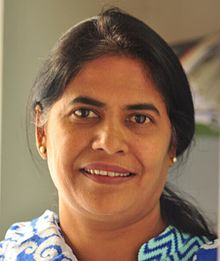


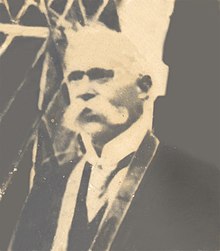











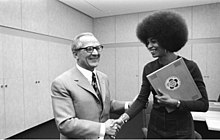
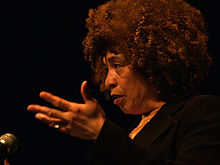







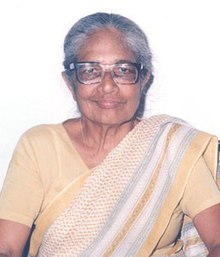

















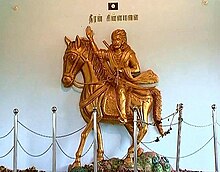


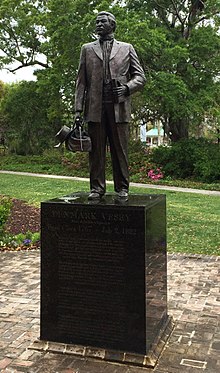
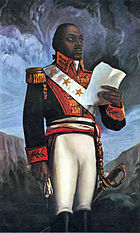










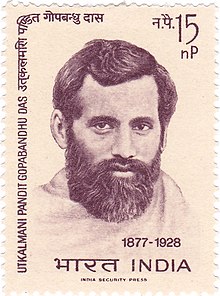

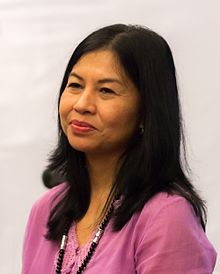
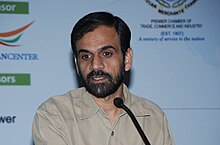



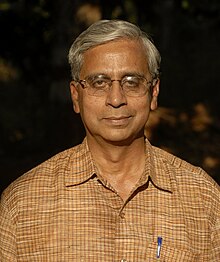

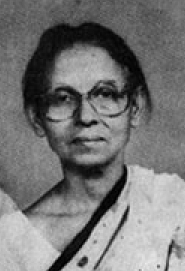

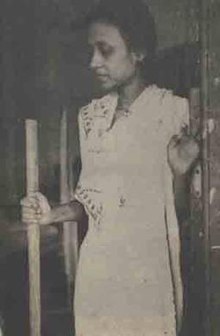


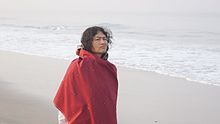

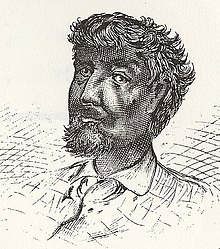





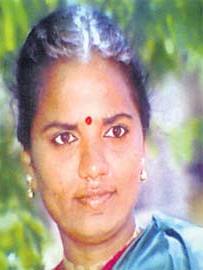







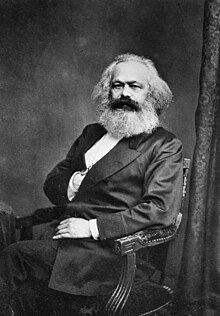

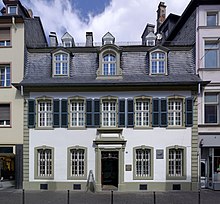









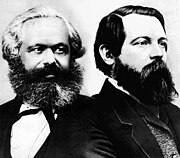

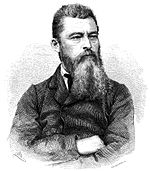
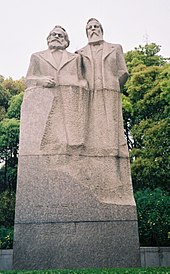


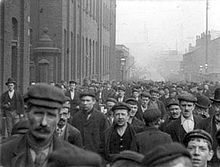
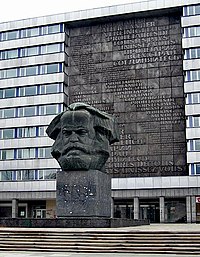

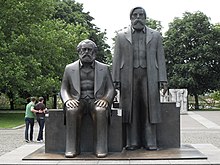

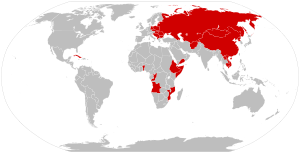

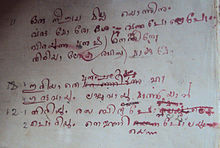




 ©
©  ©
©  ©
©  ©
©  ©
©  ©
© 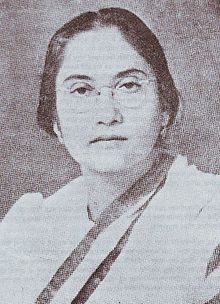

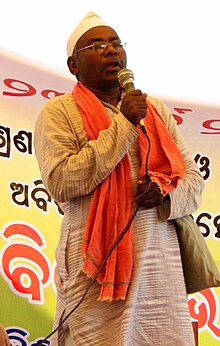





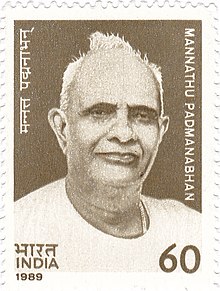













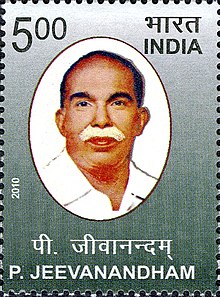






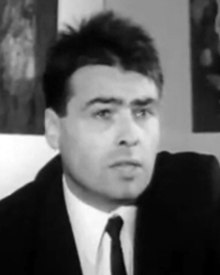
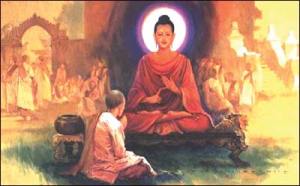
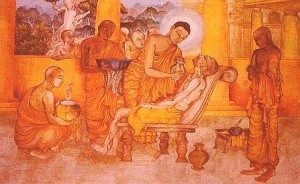
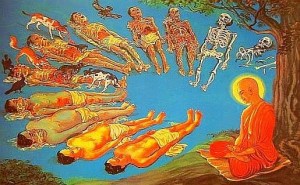







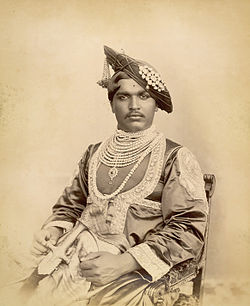


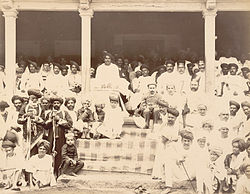
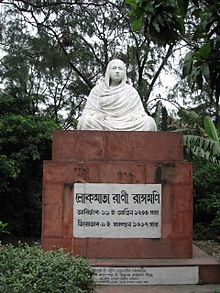


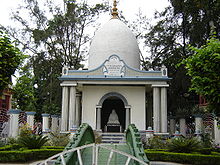



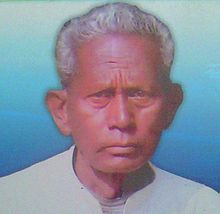







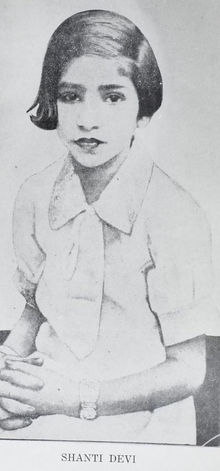



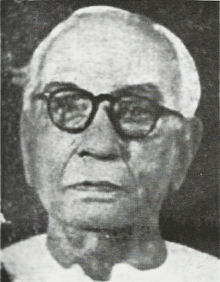
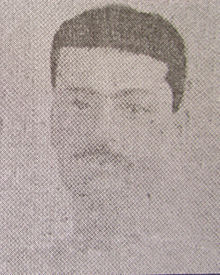




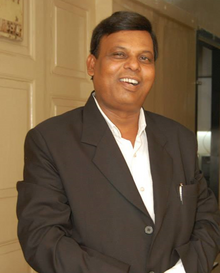

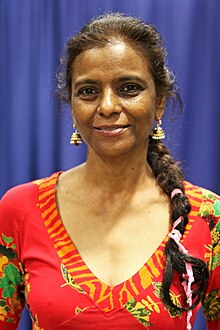





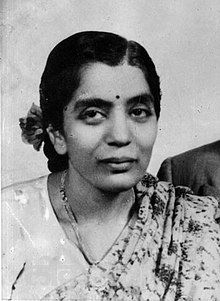





















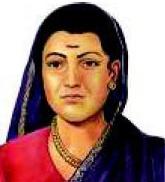




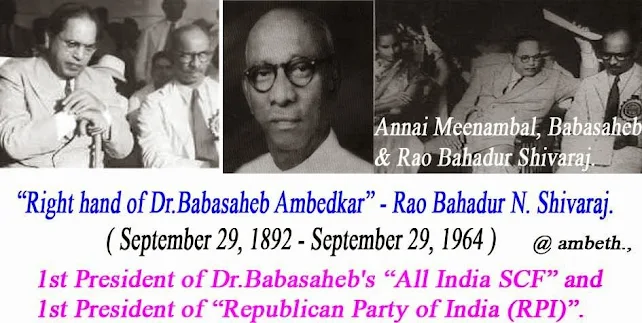


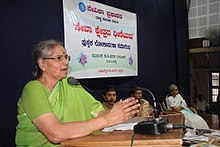

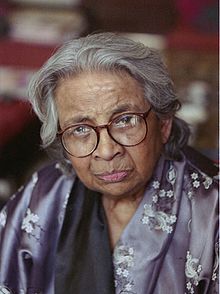

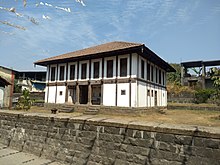


.jpg)


No comments:
Post a Comment
Thanks for feedback